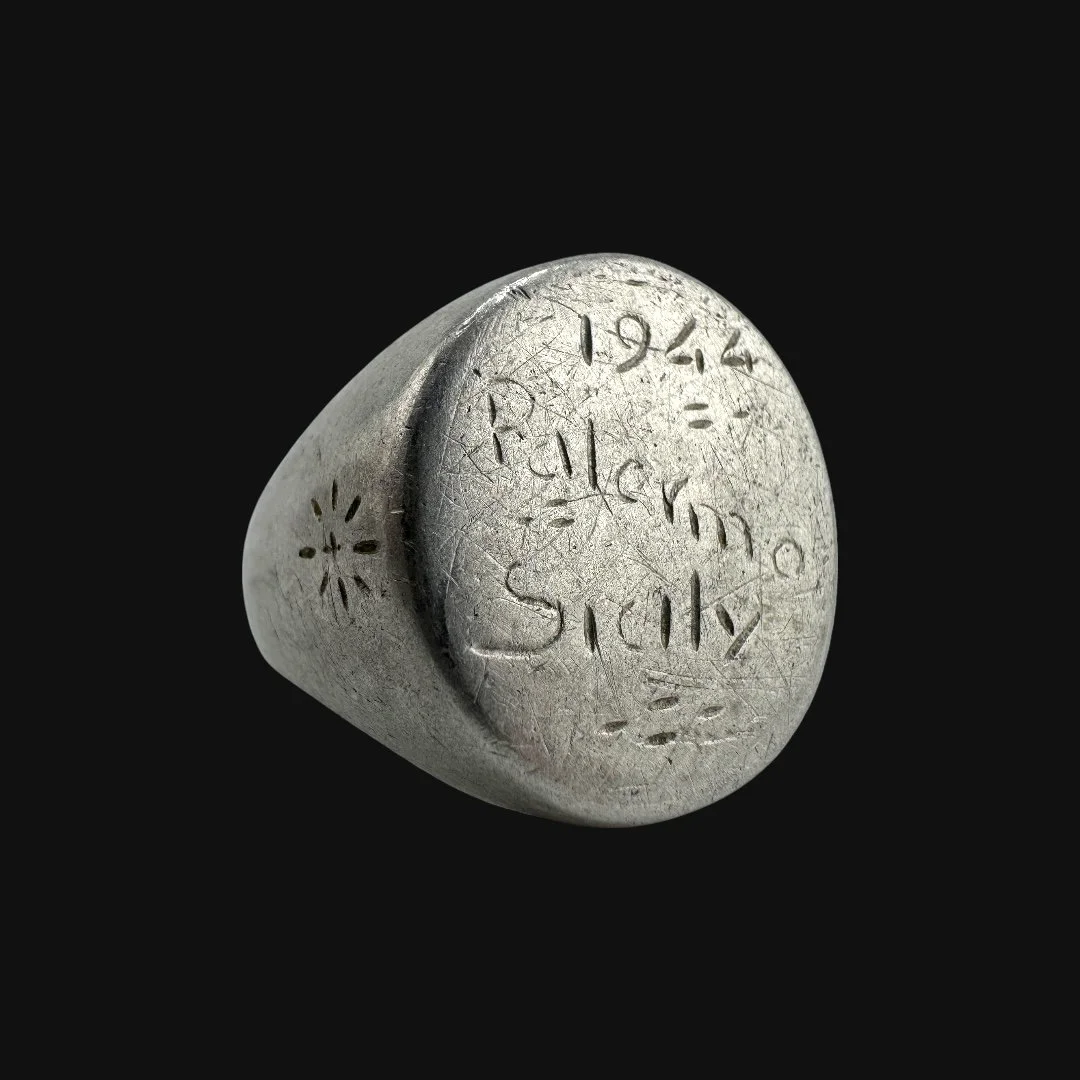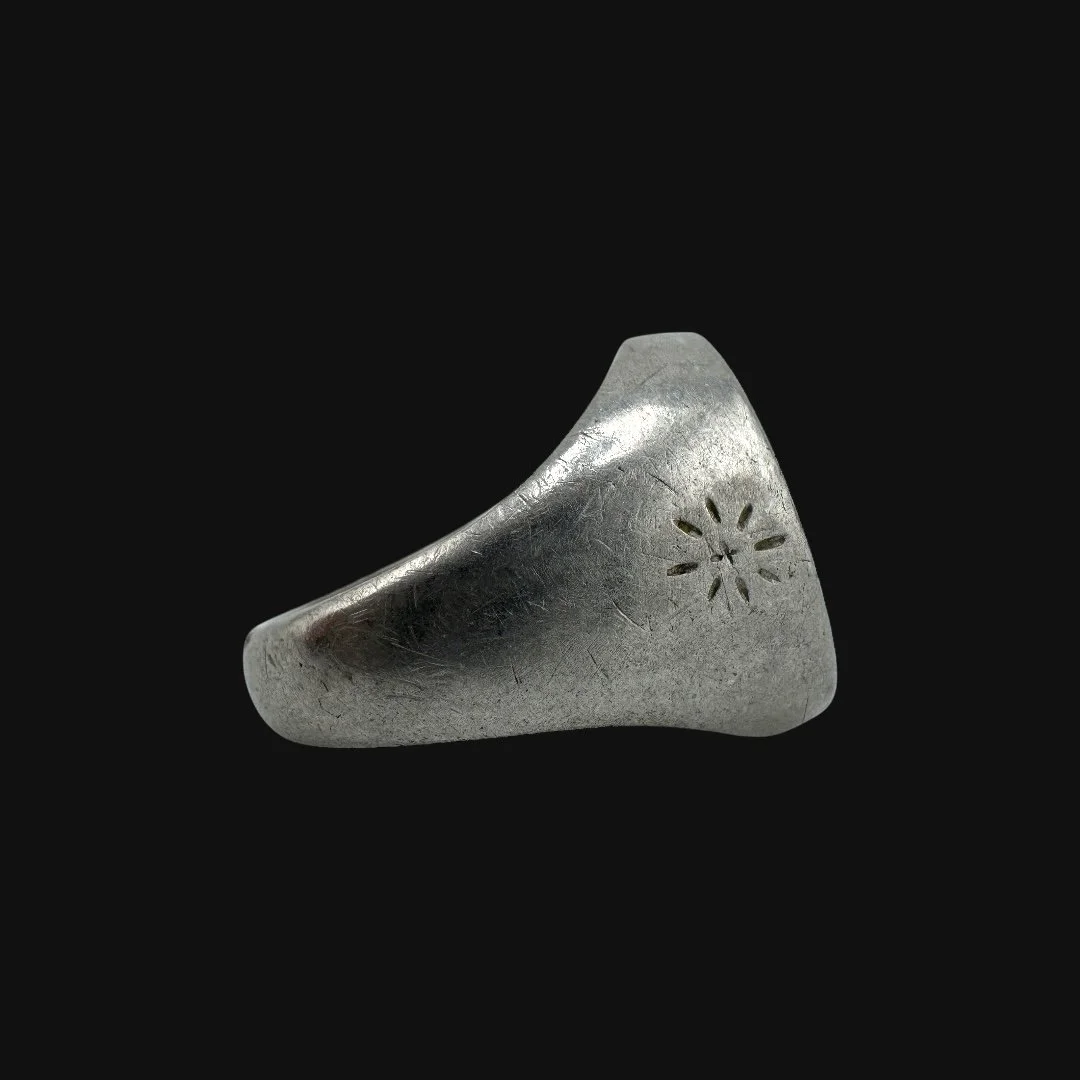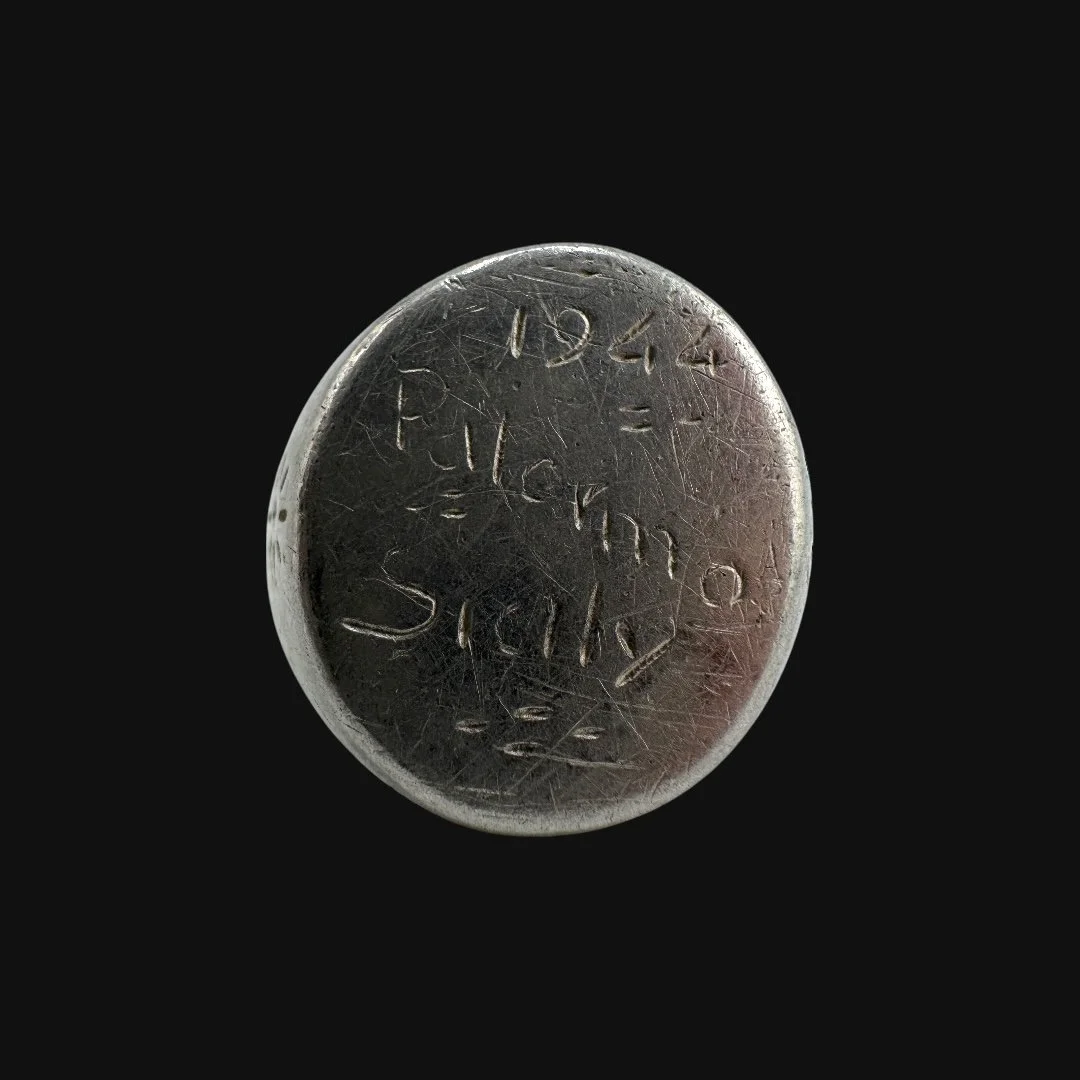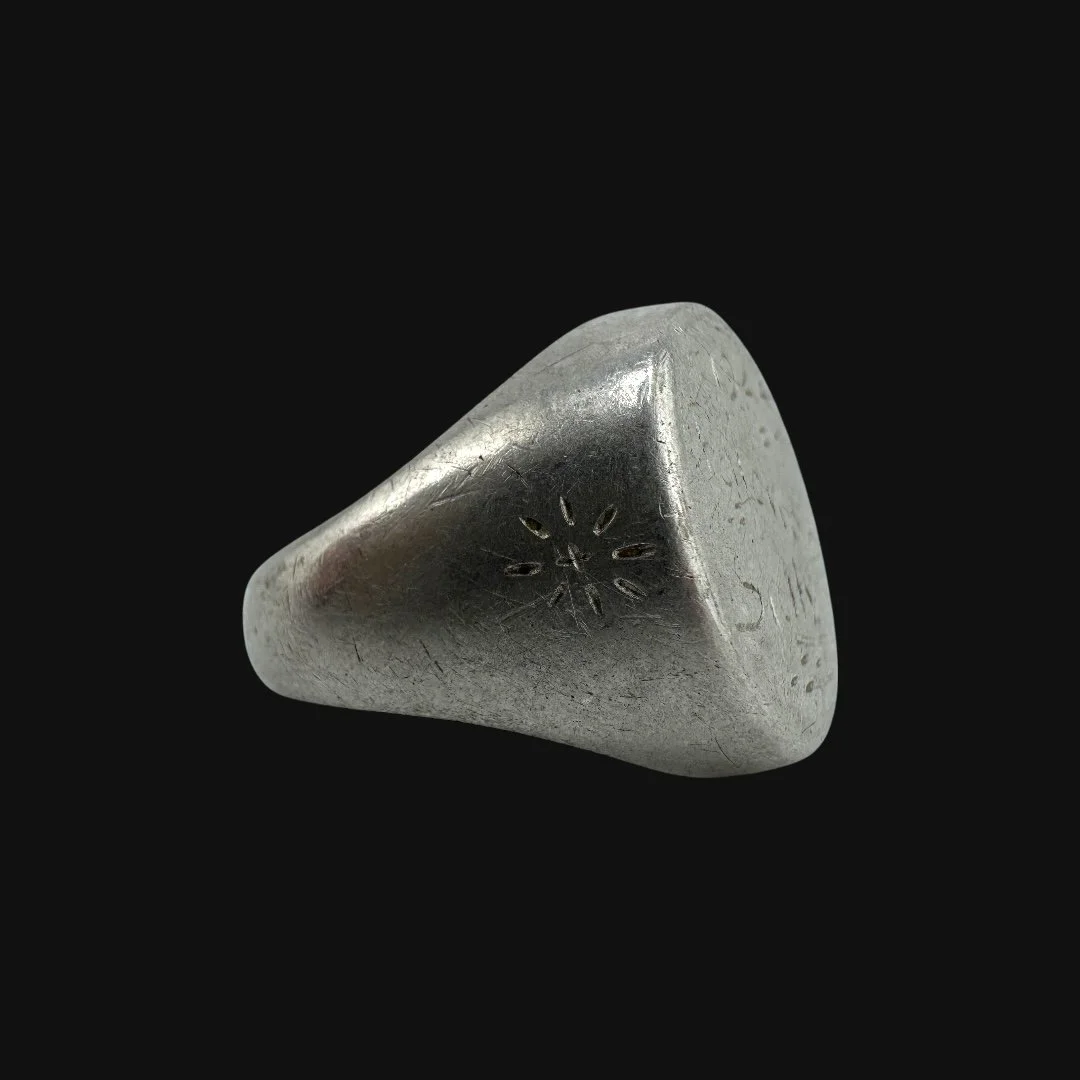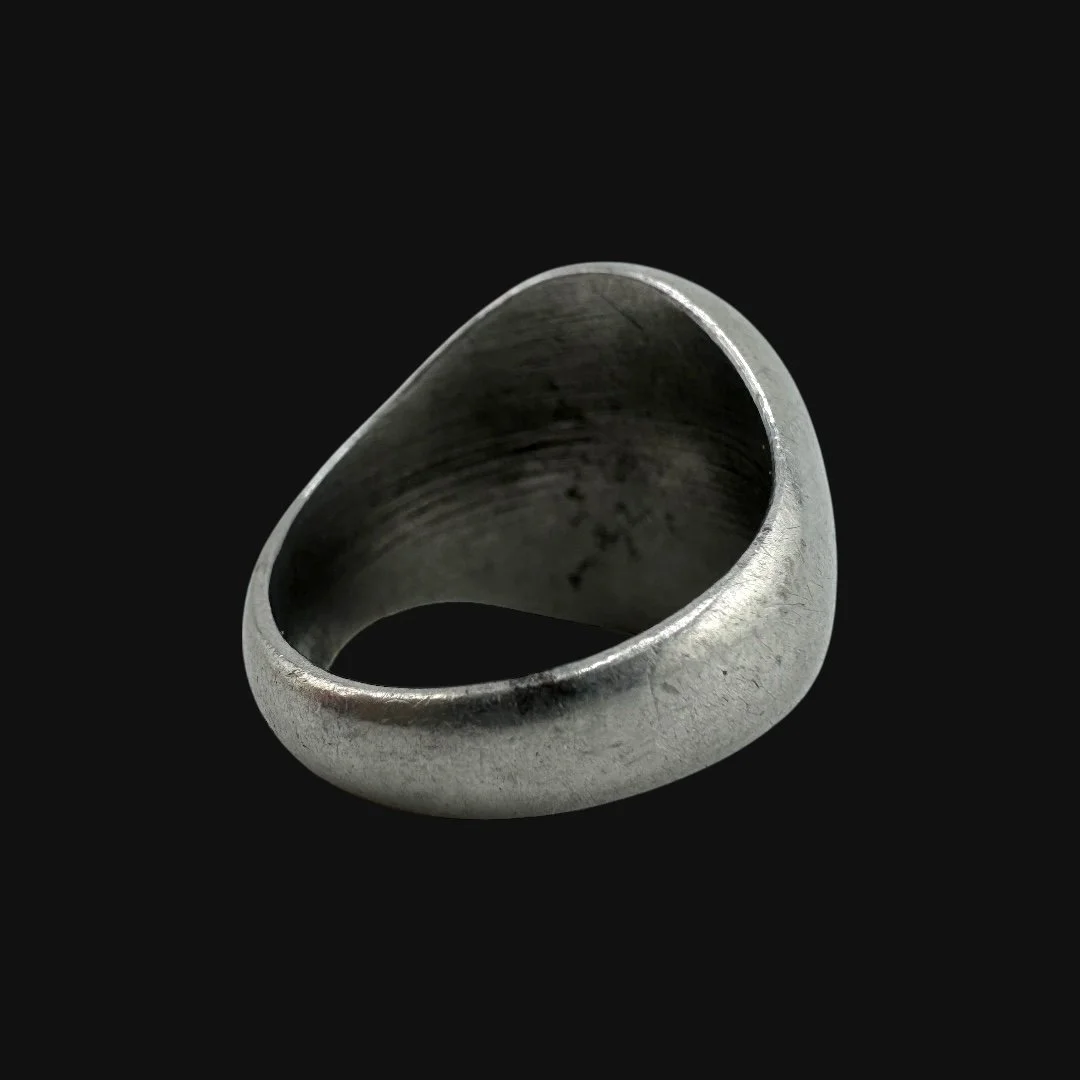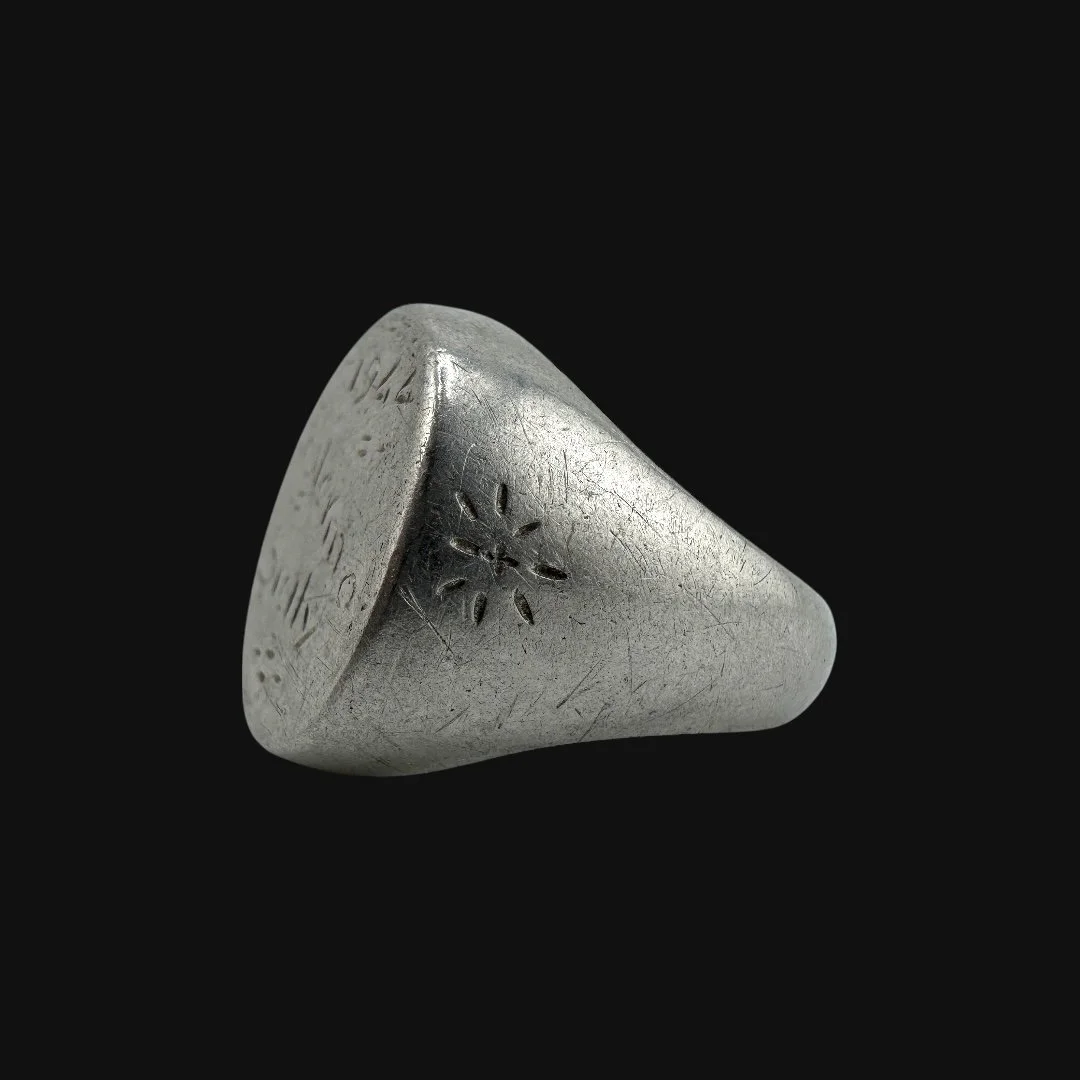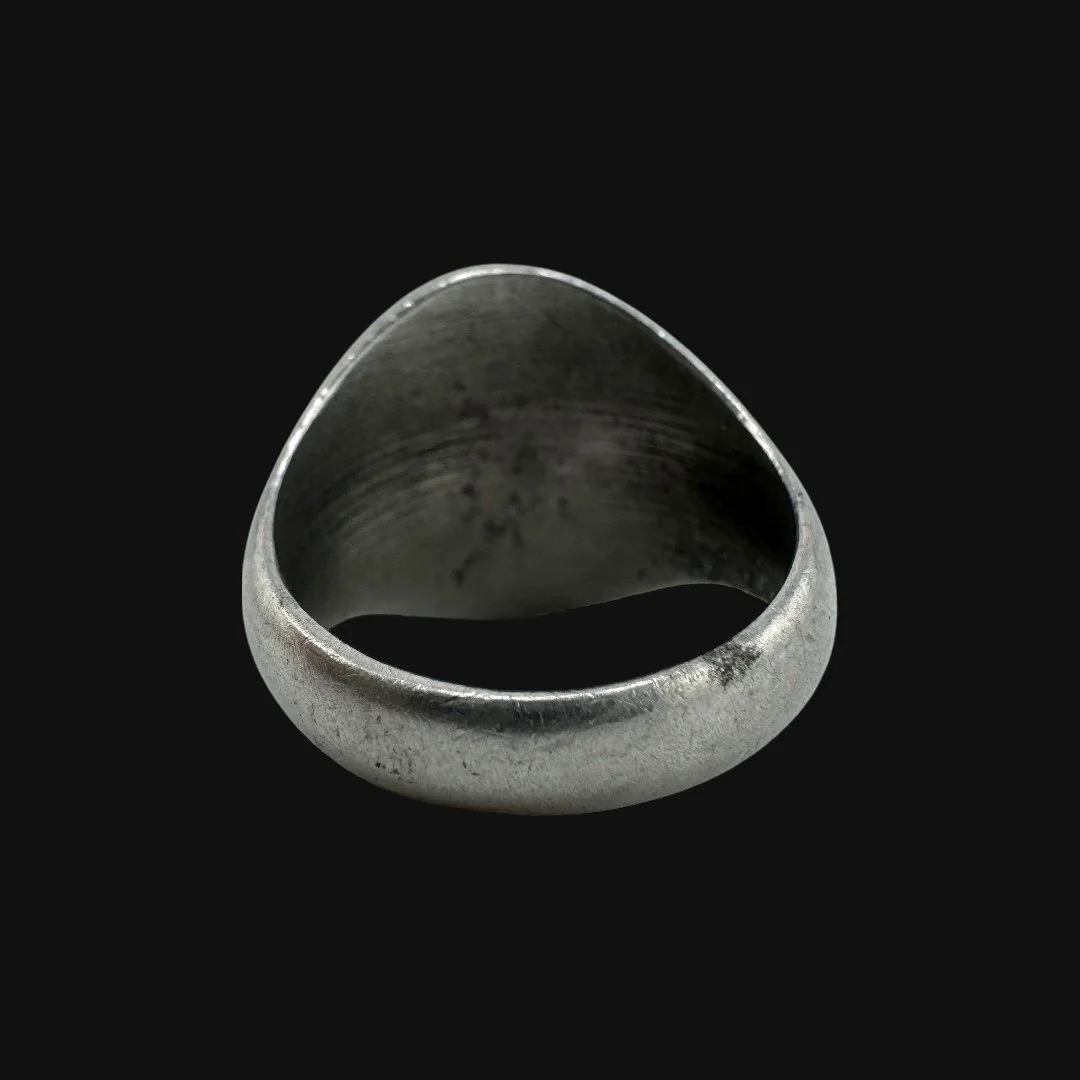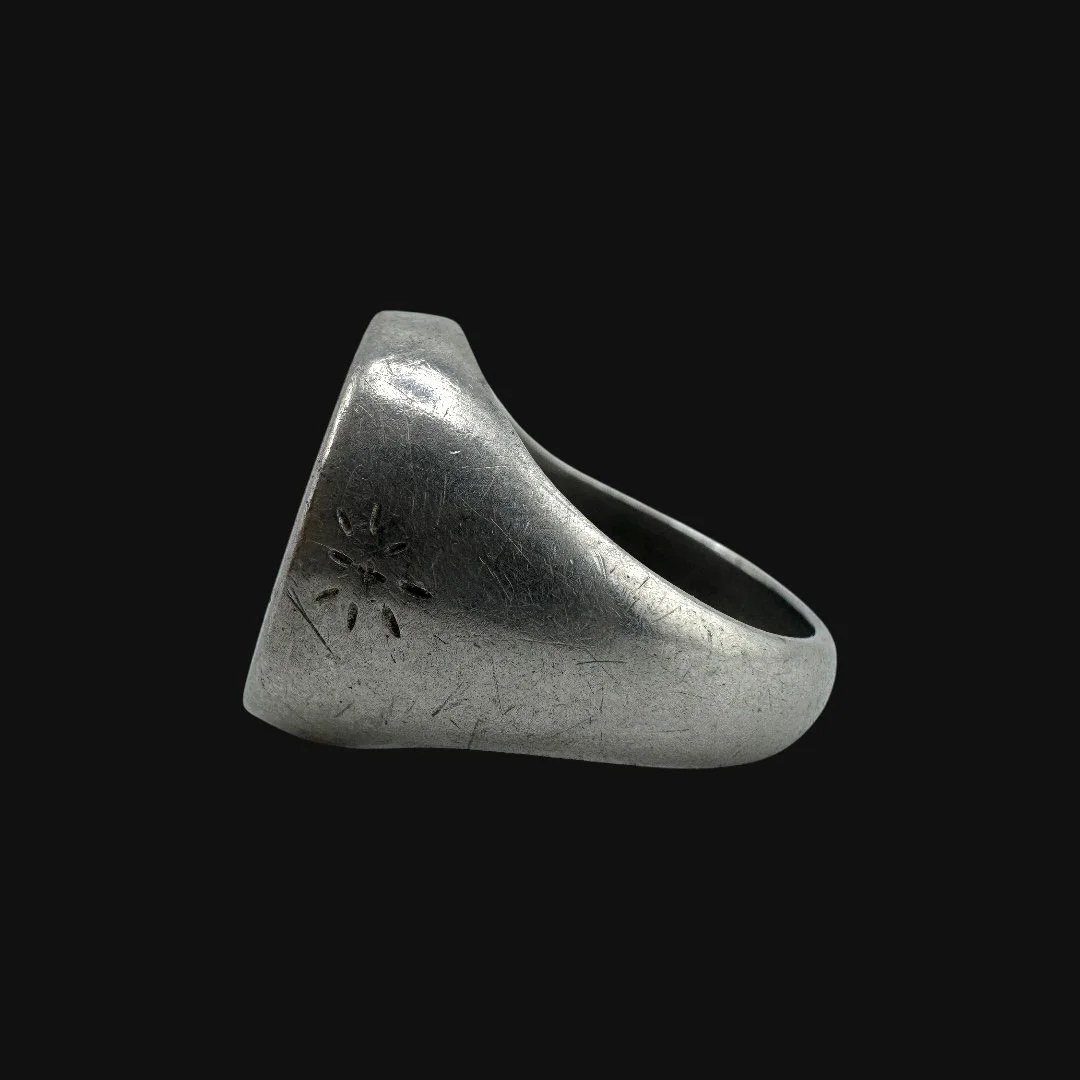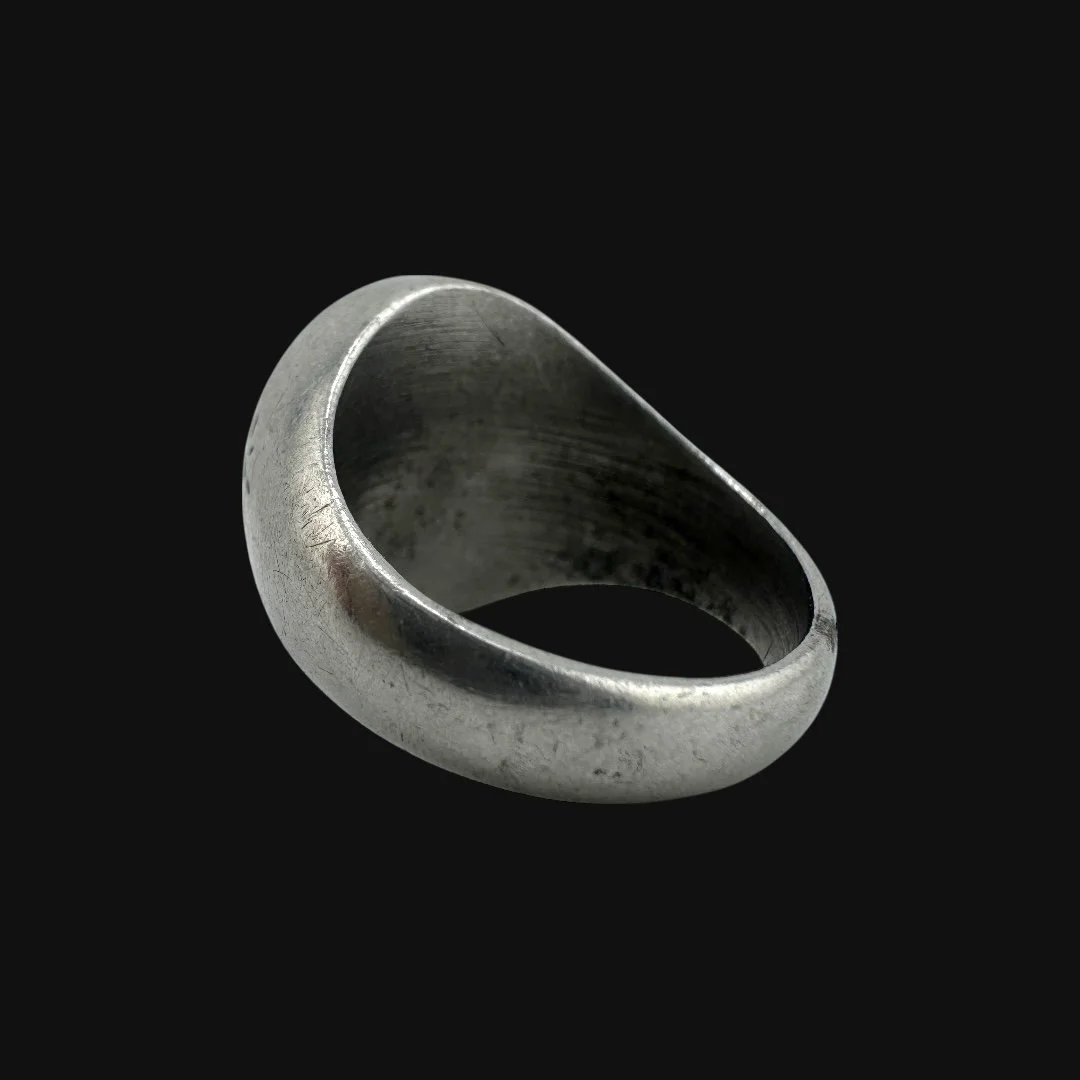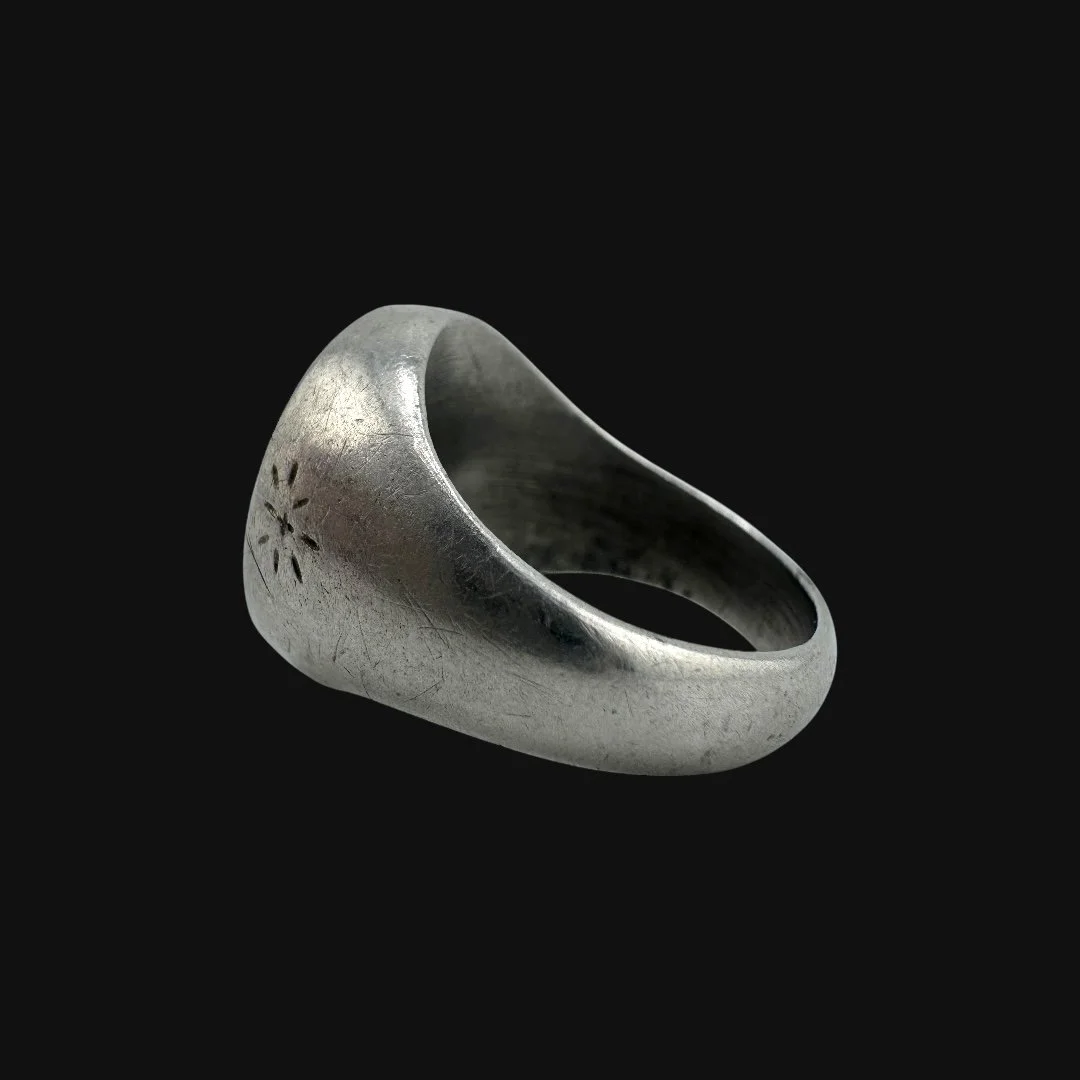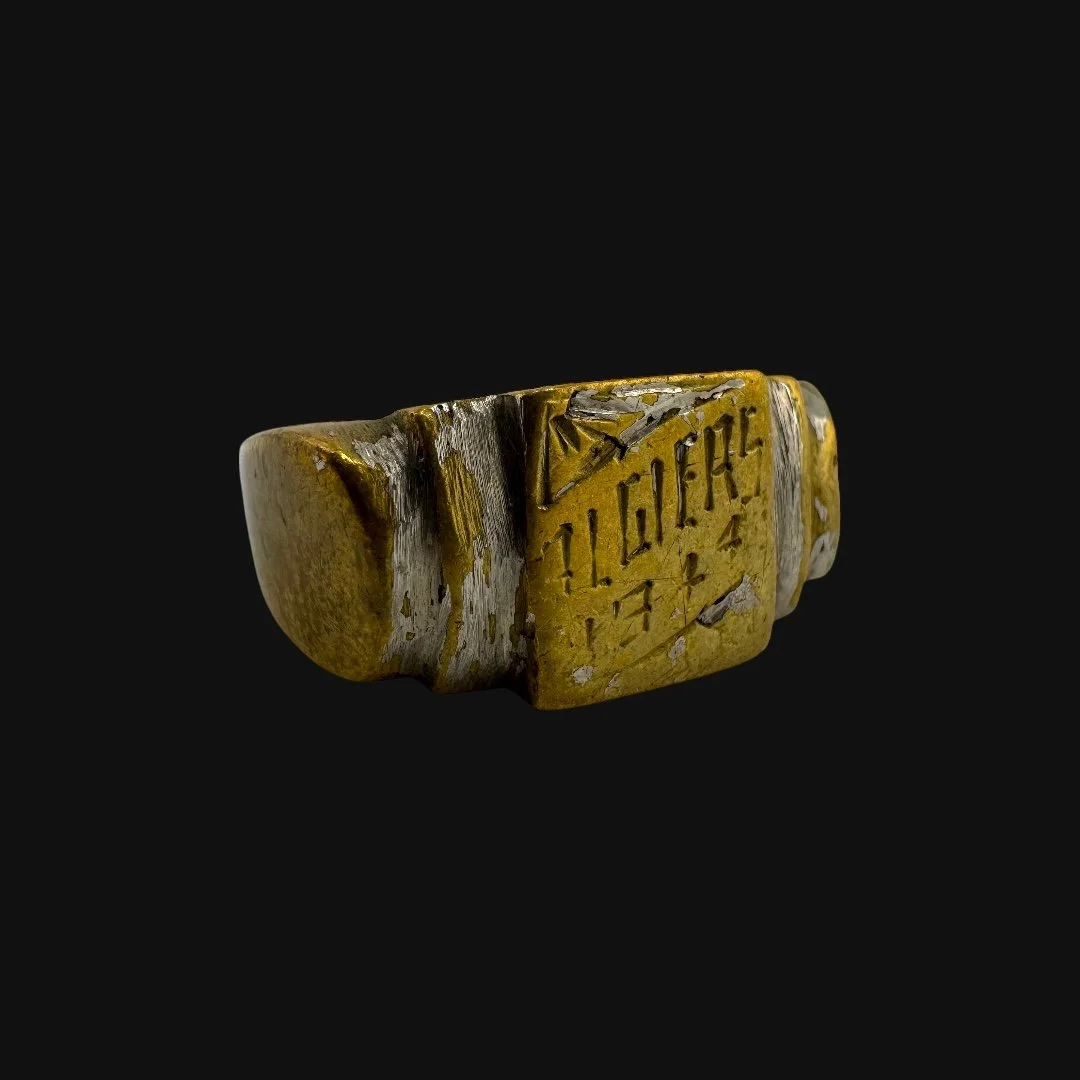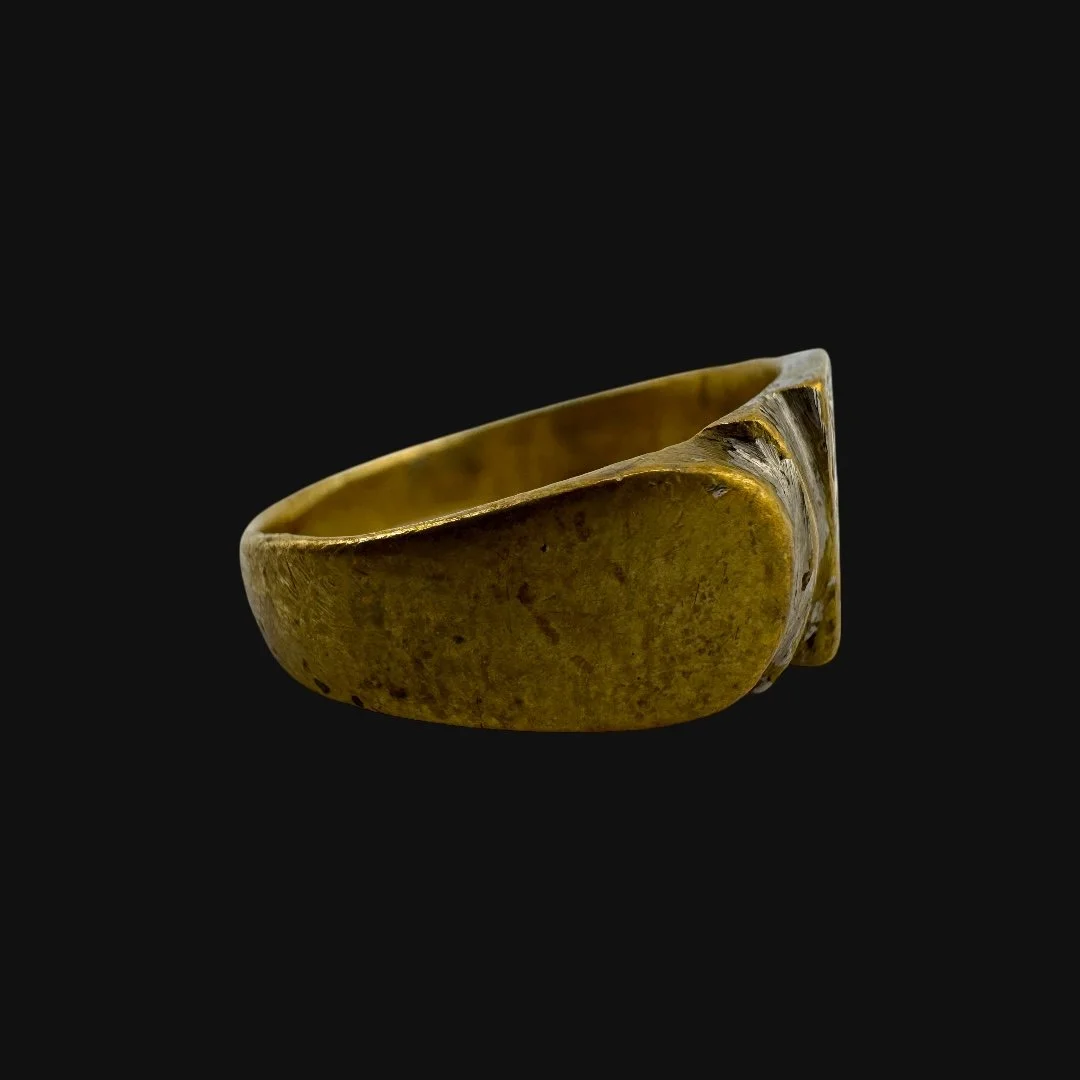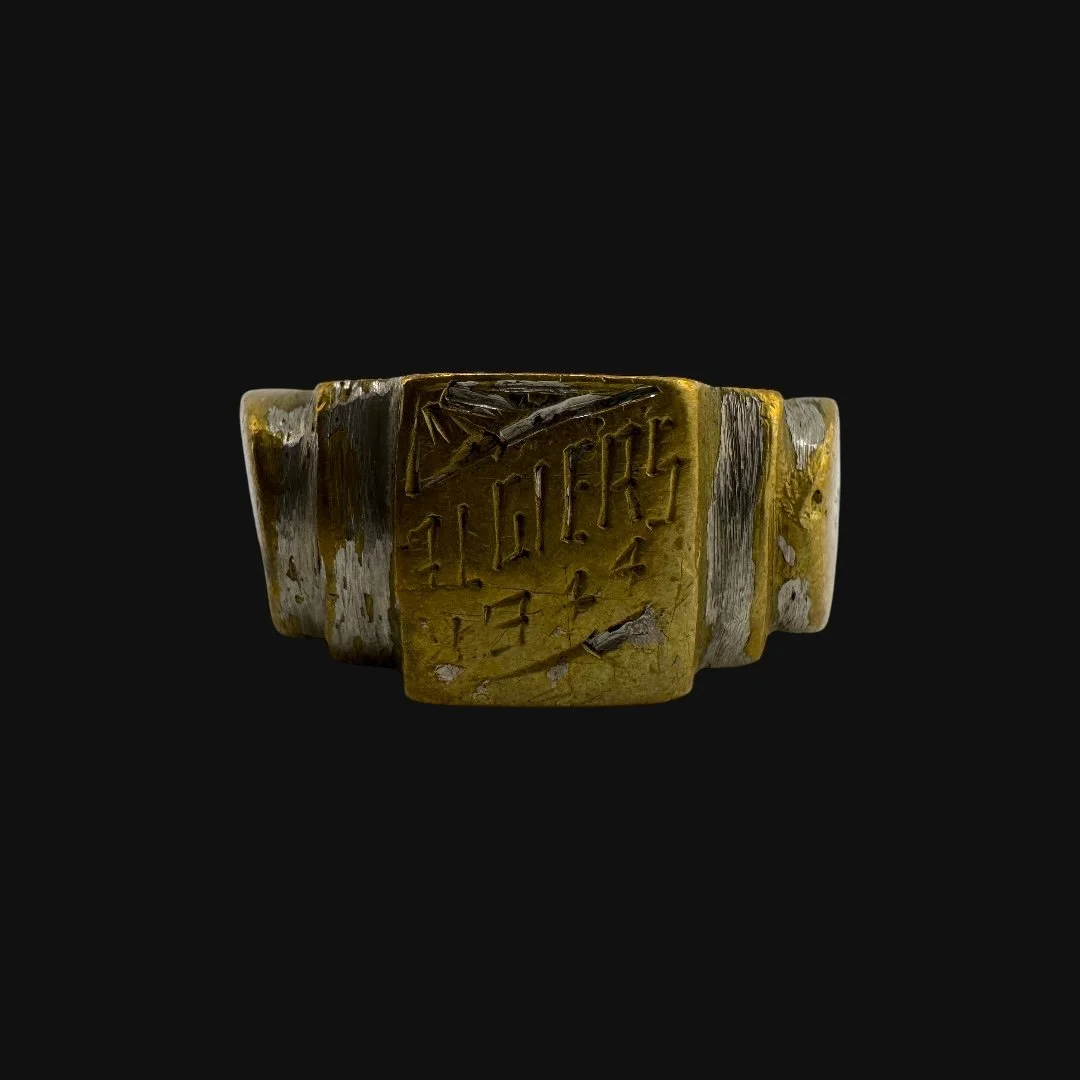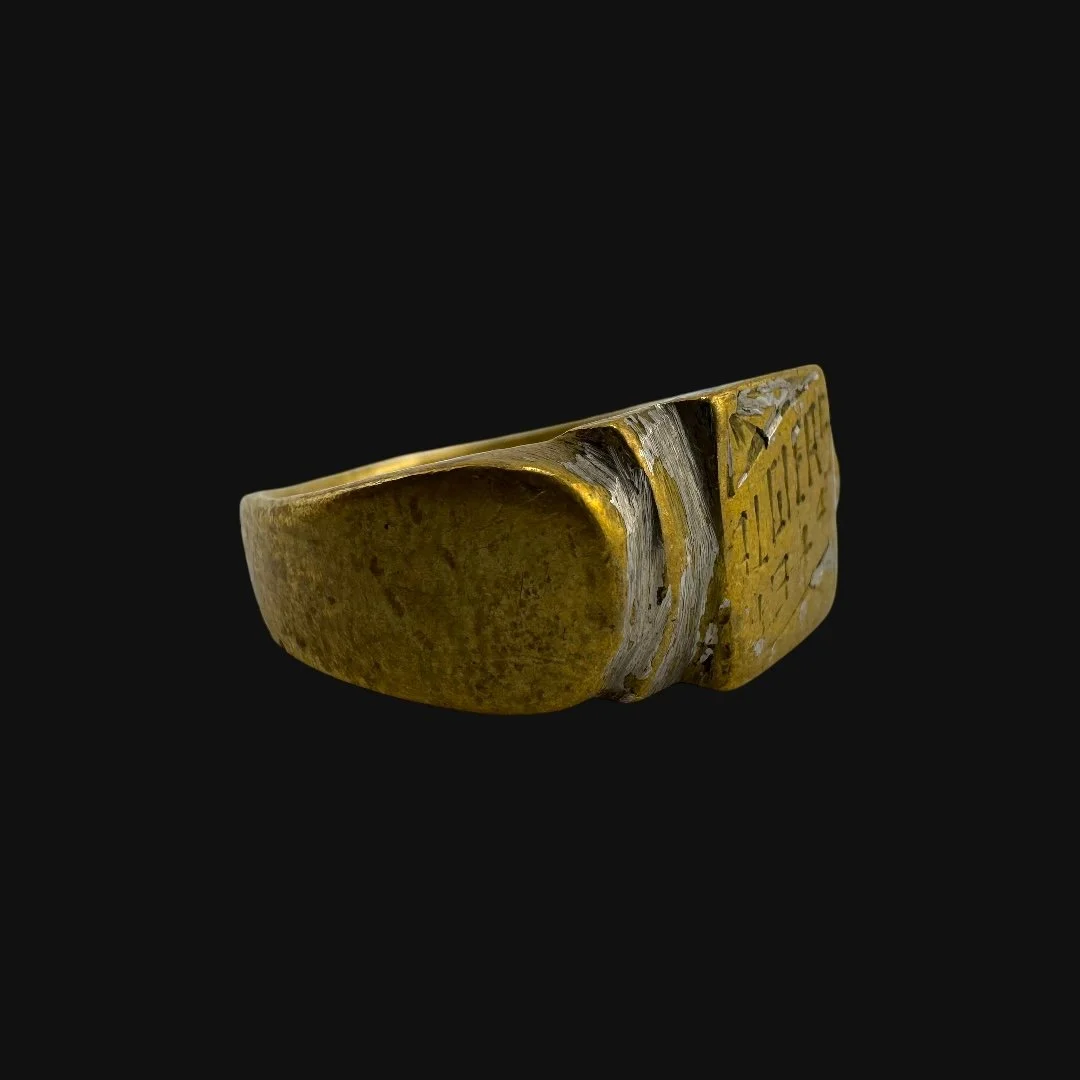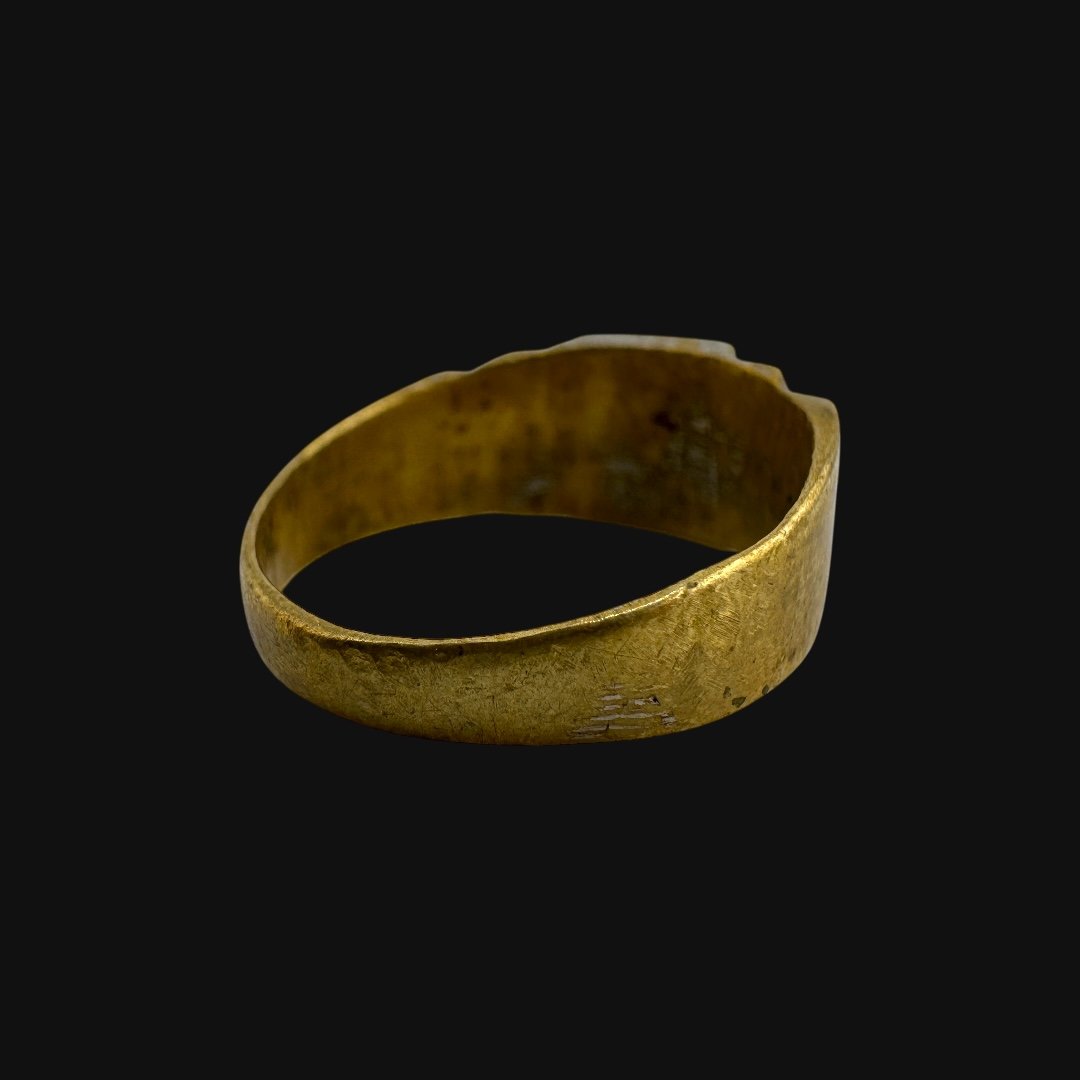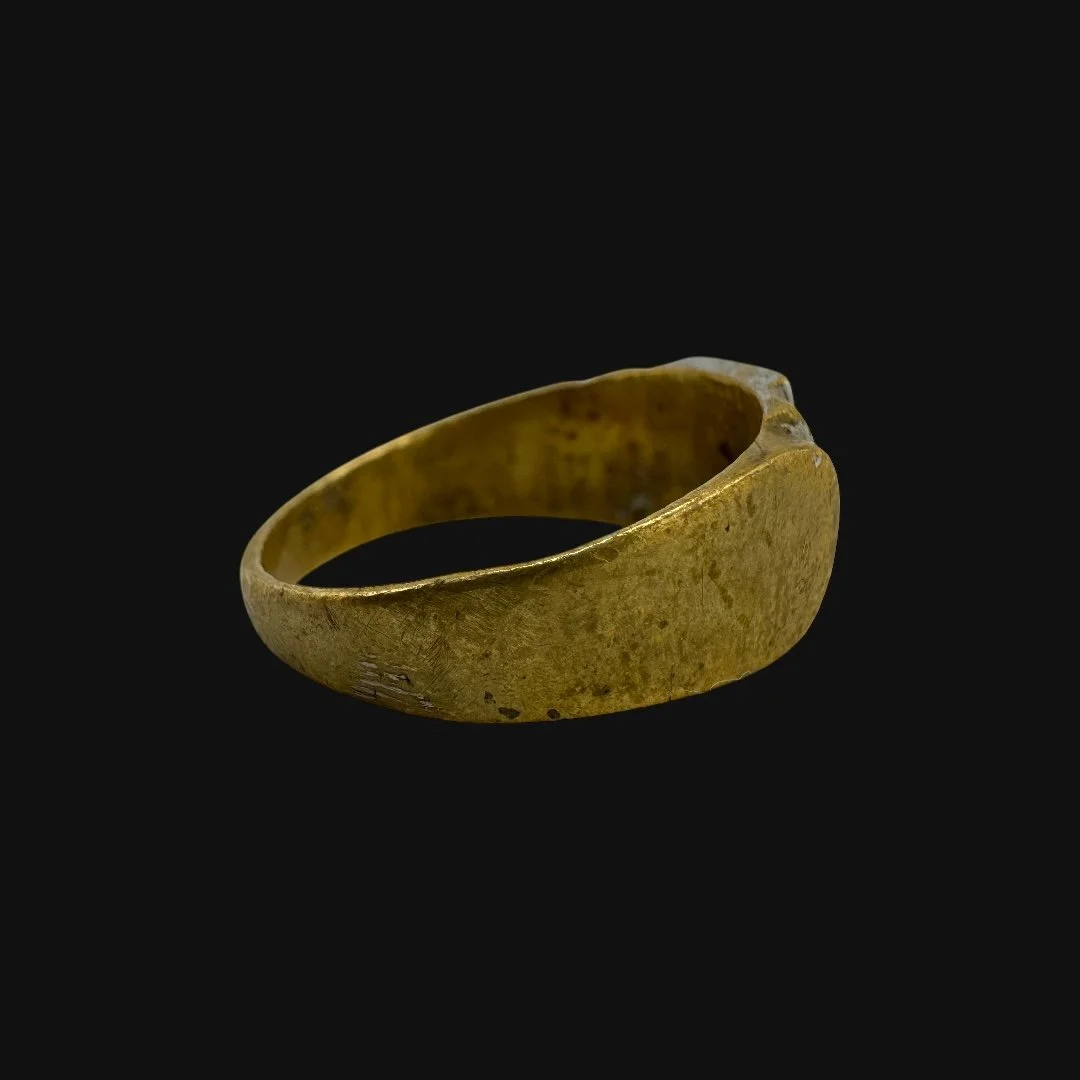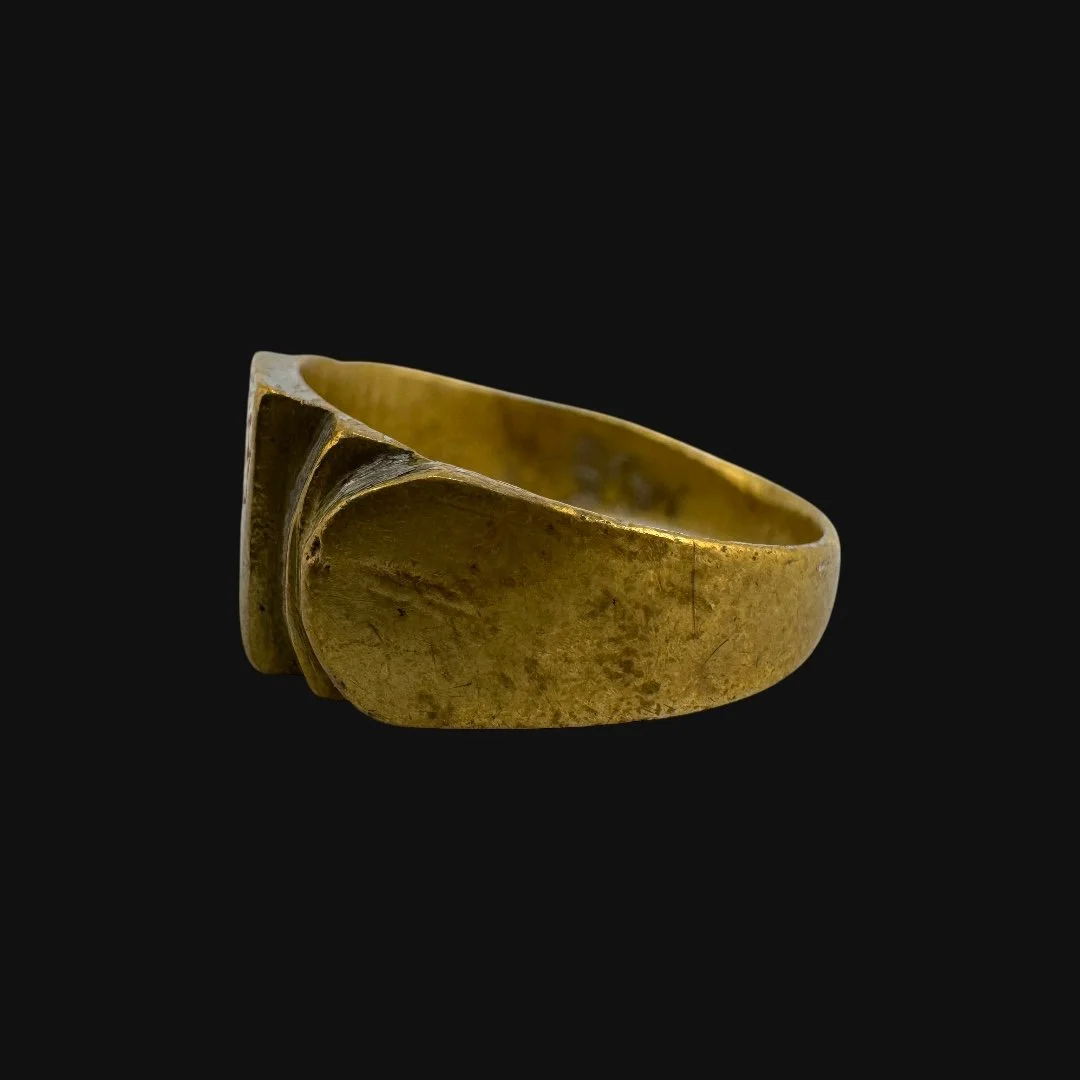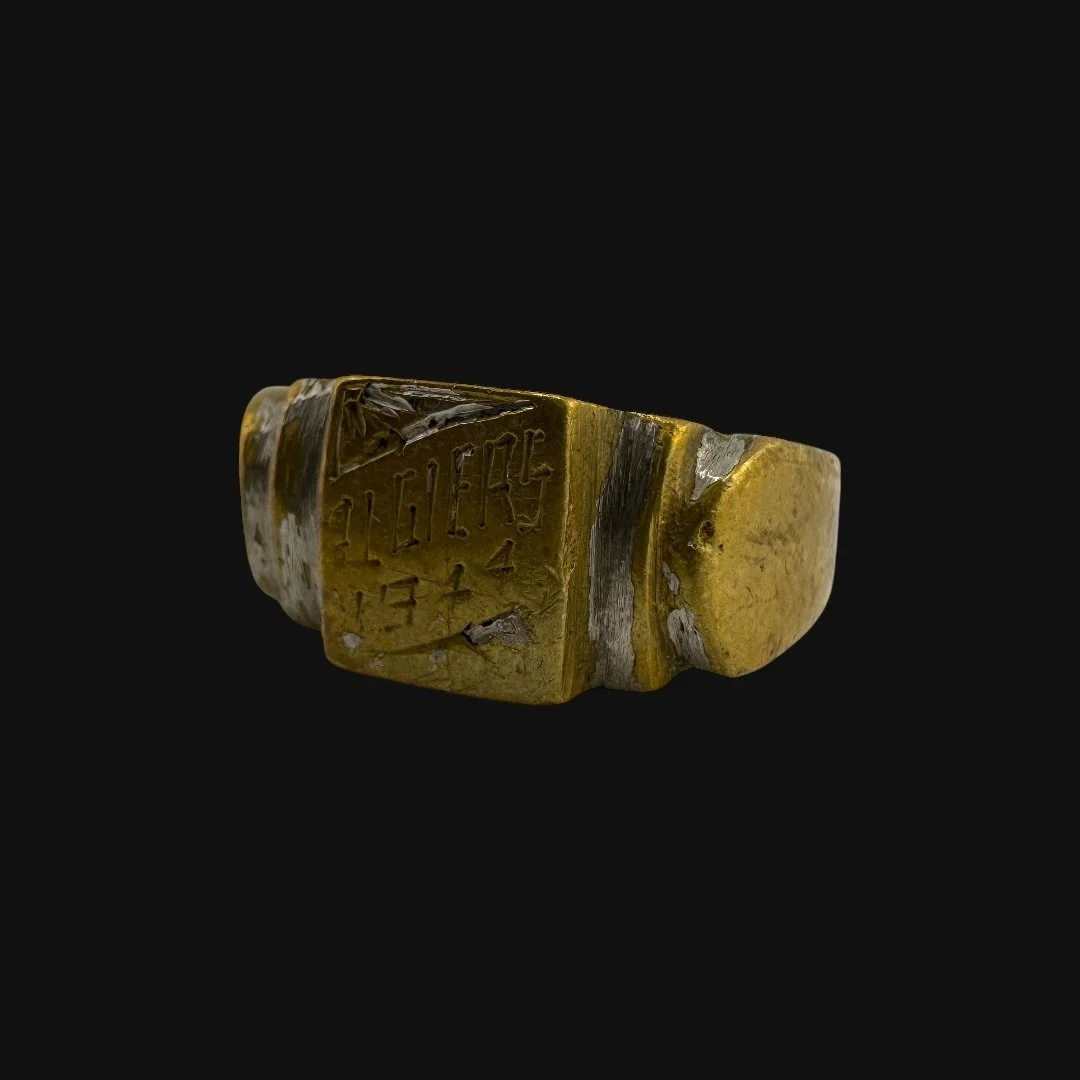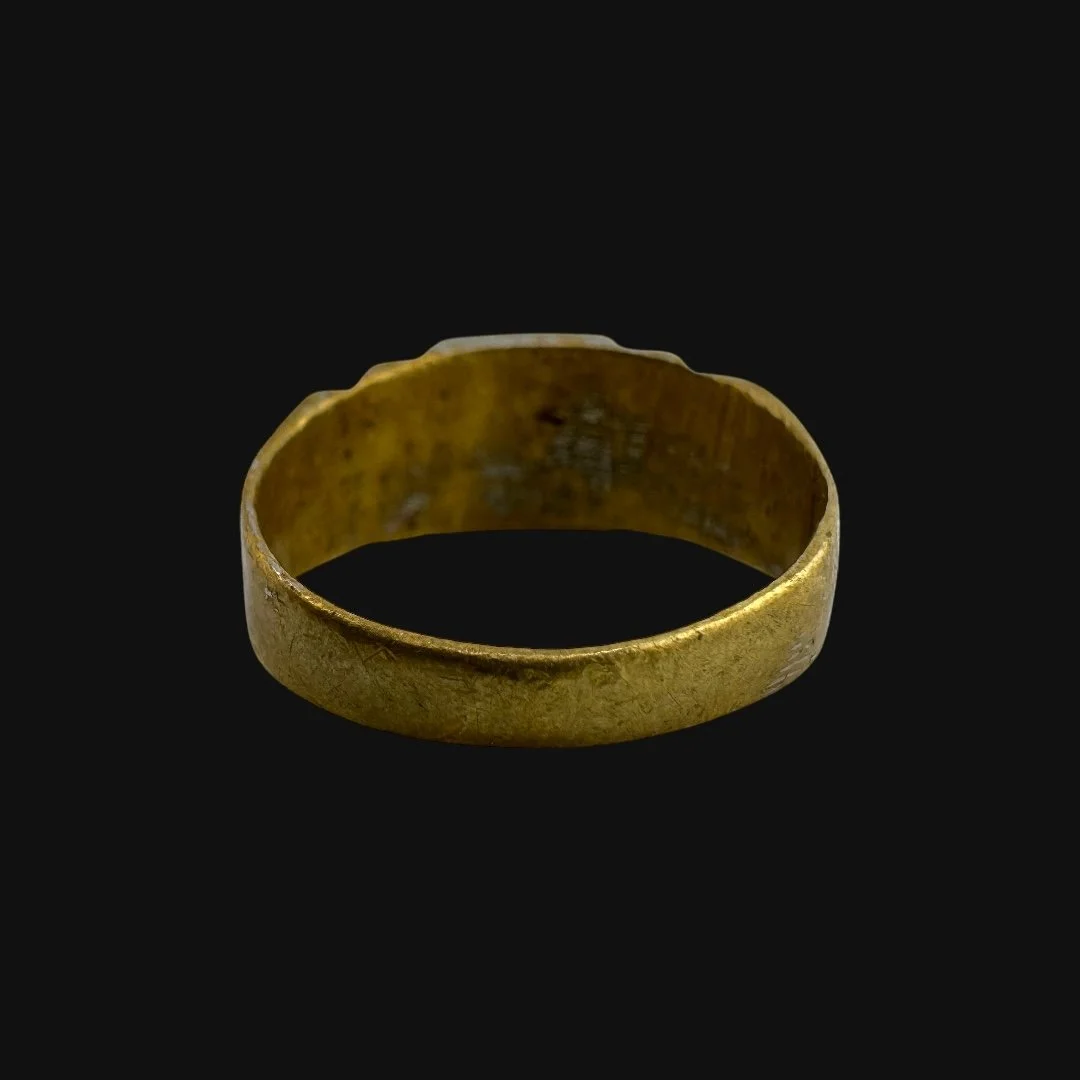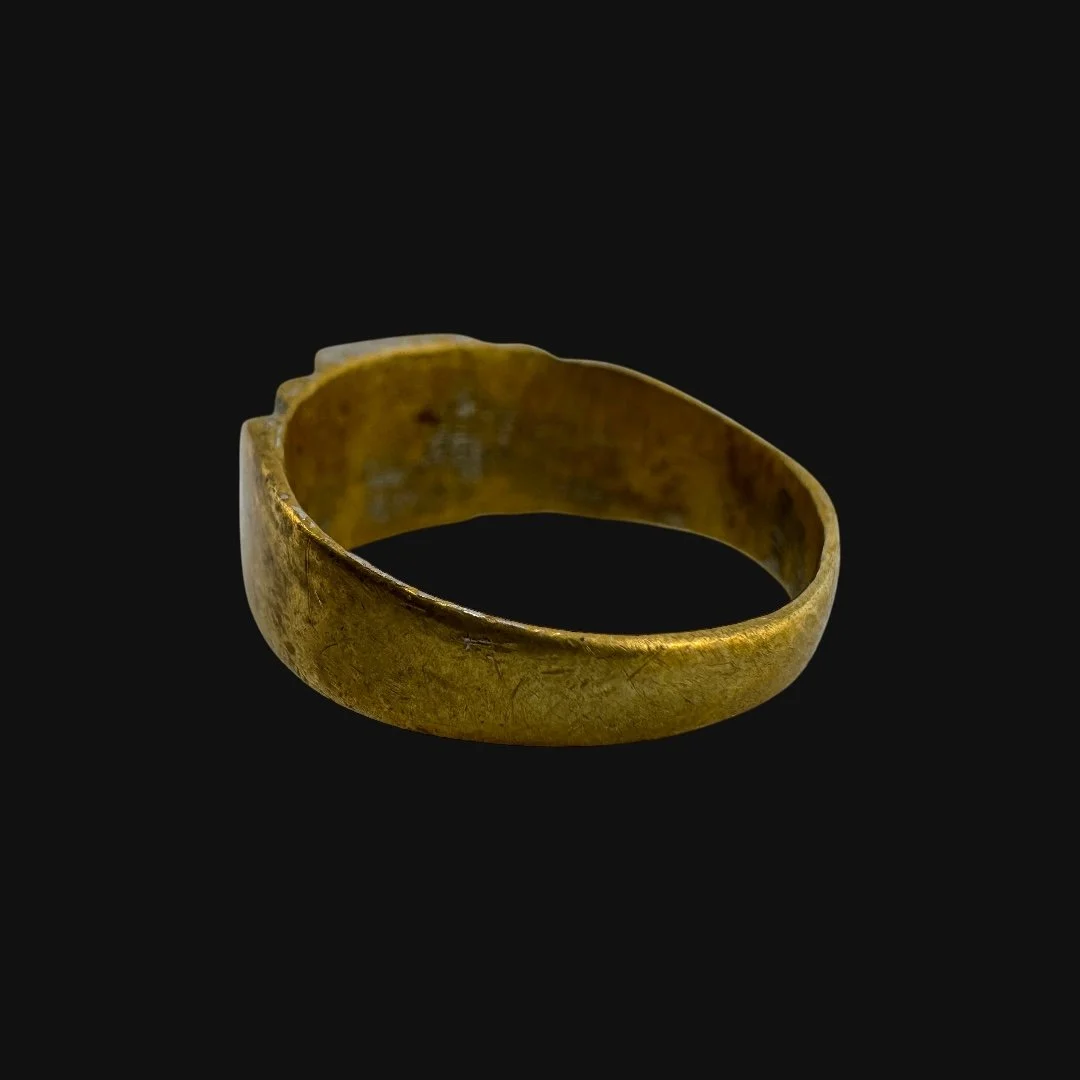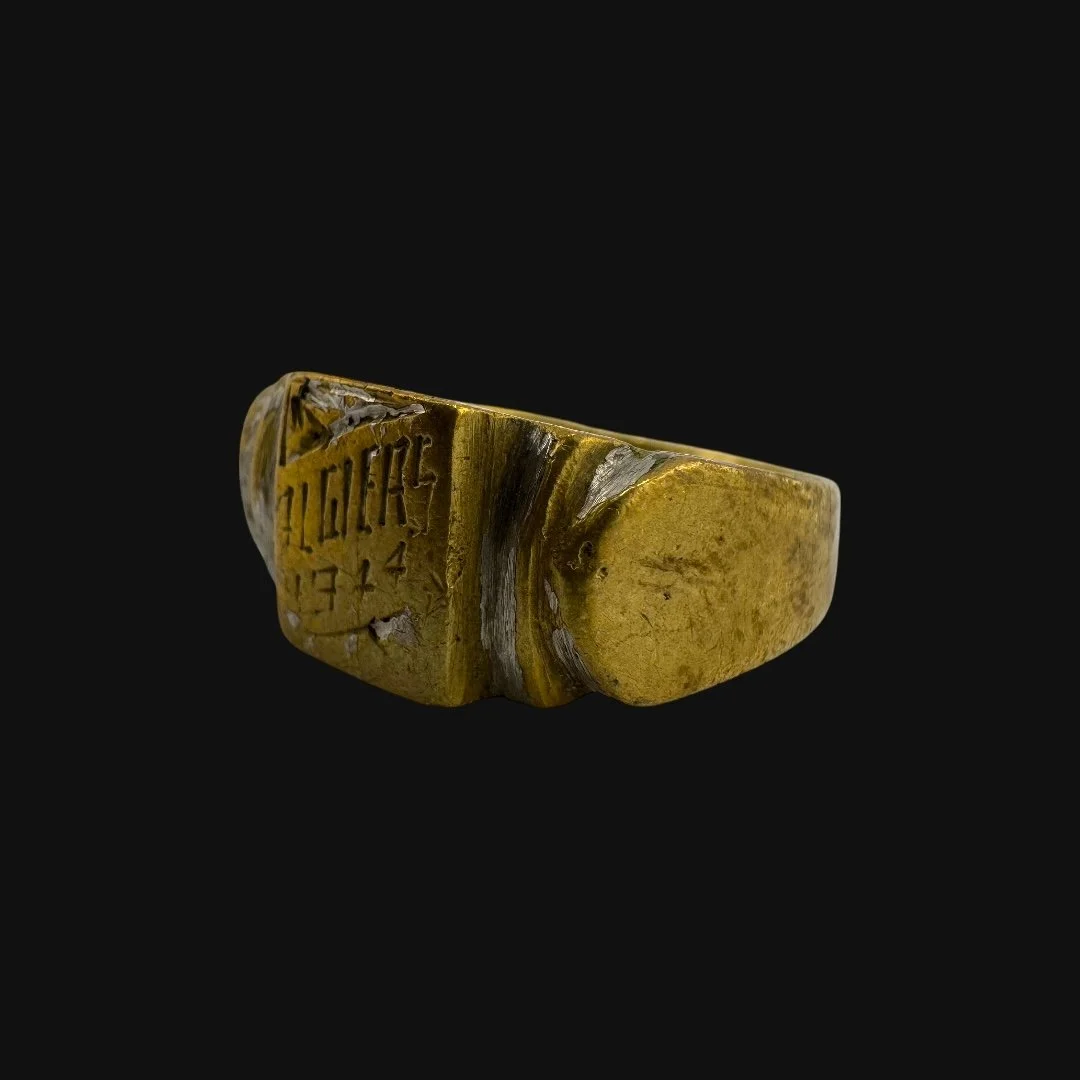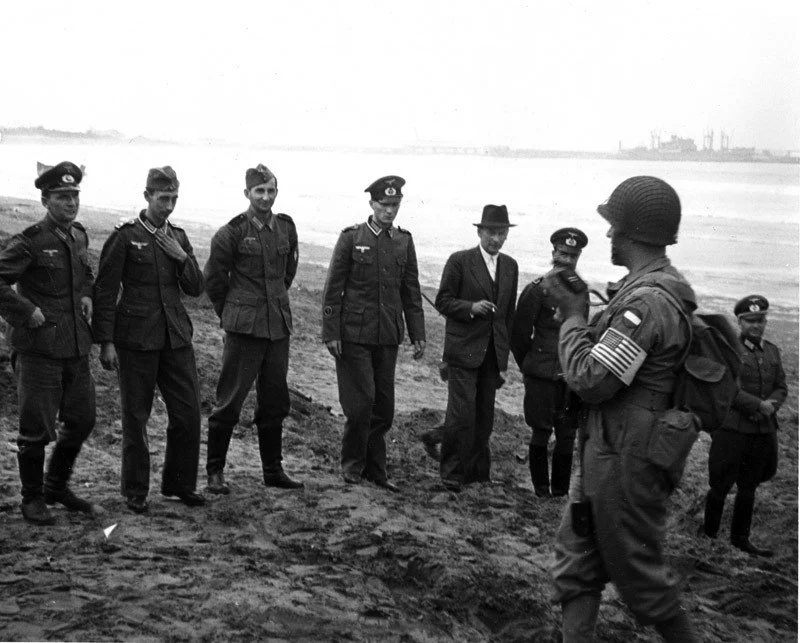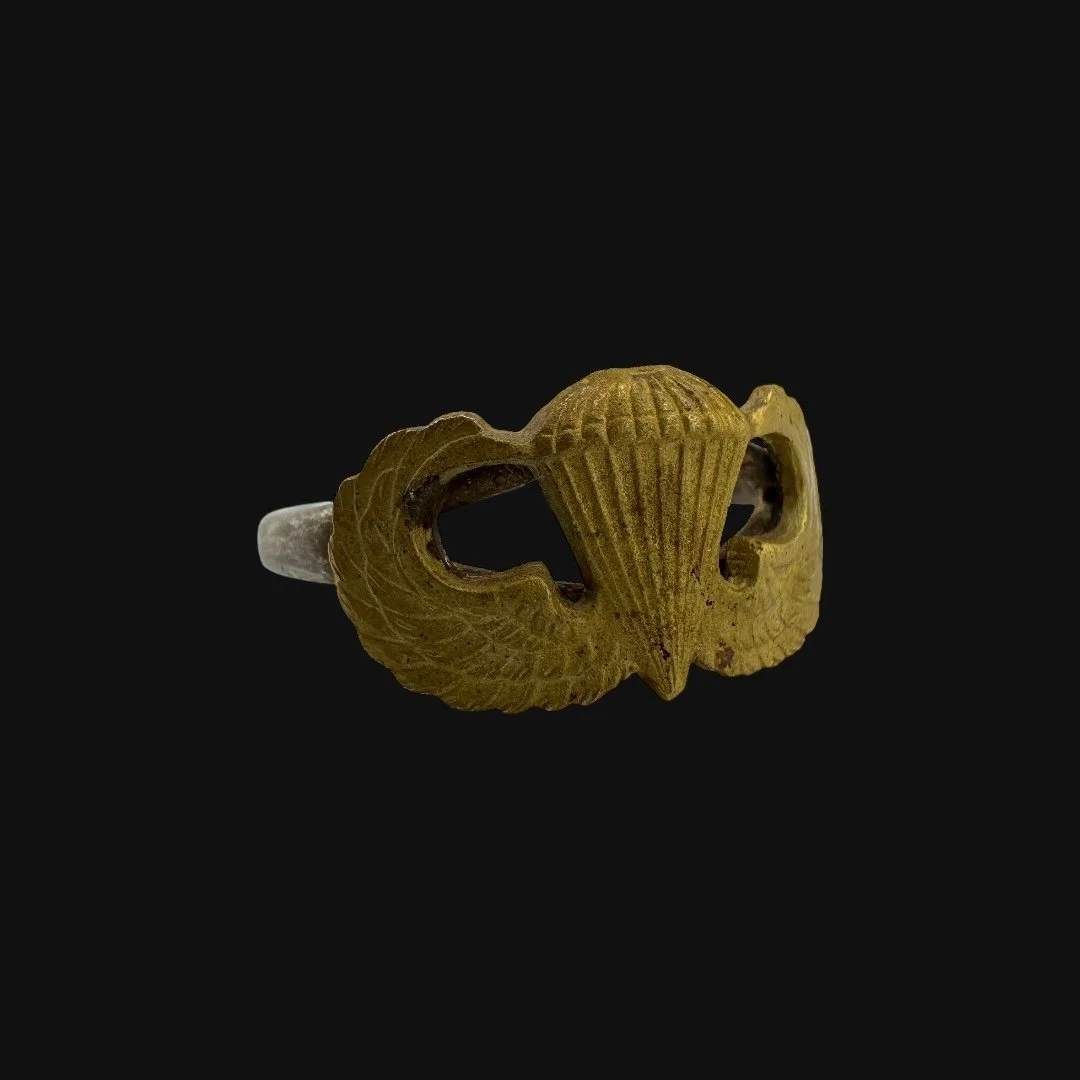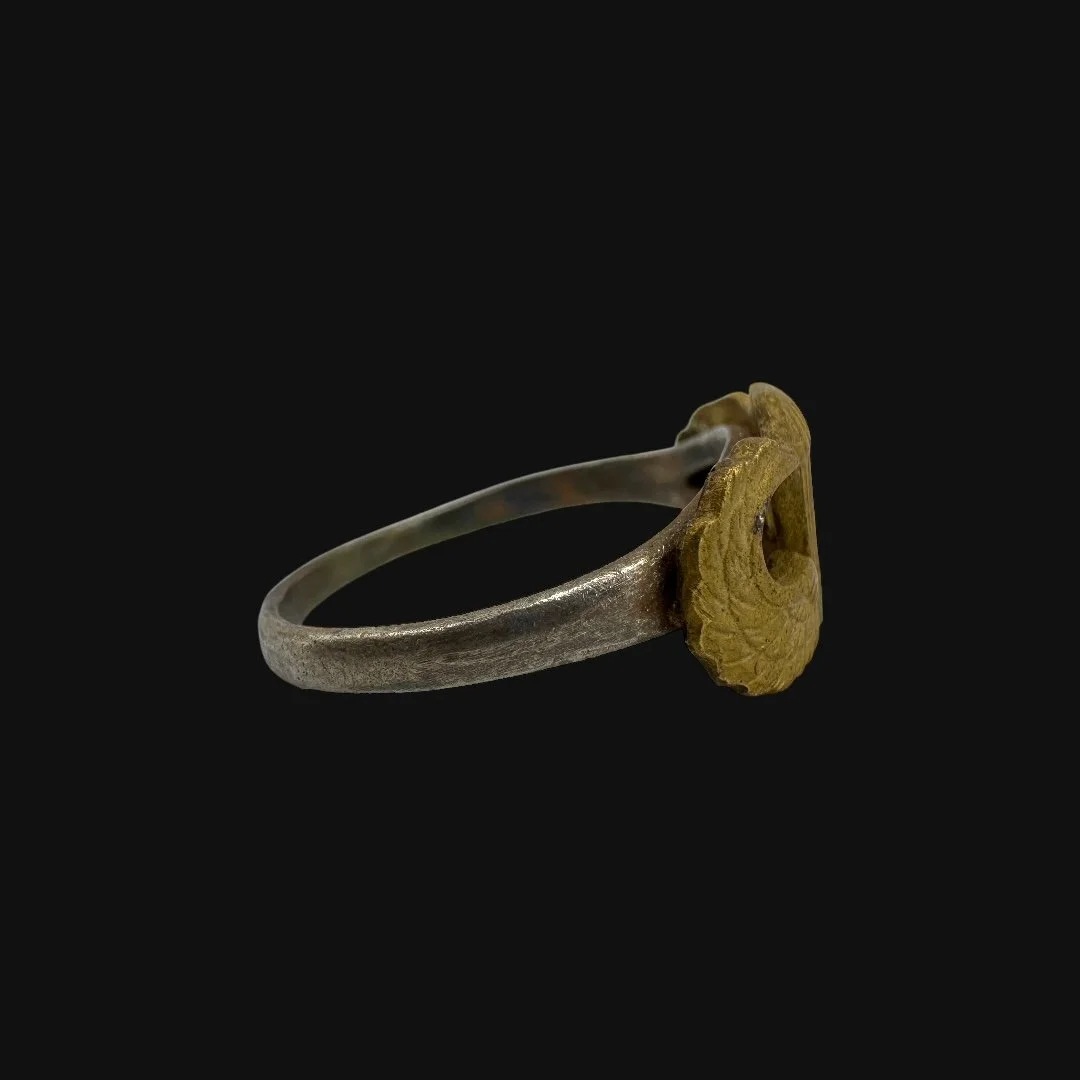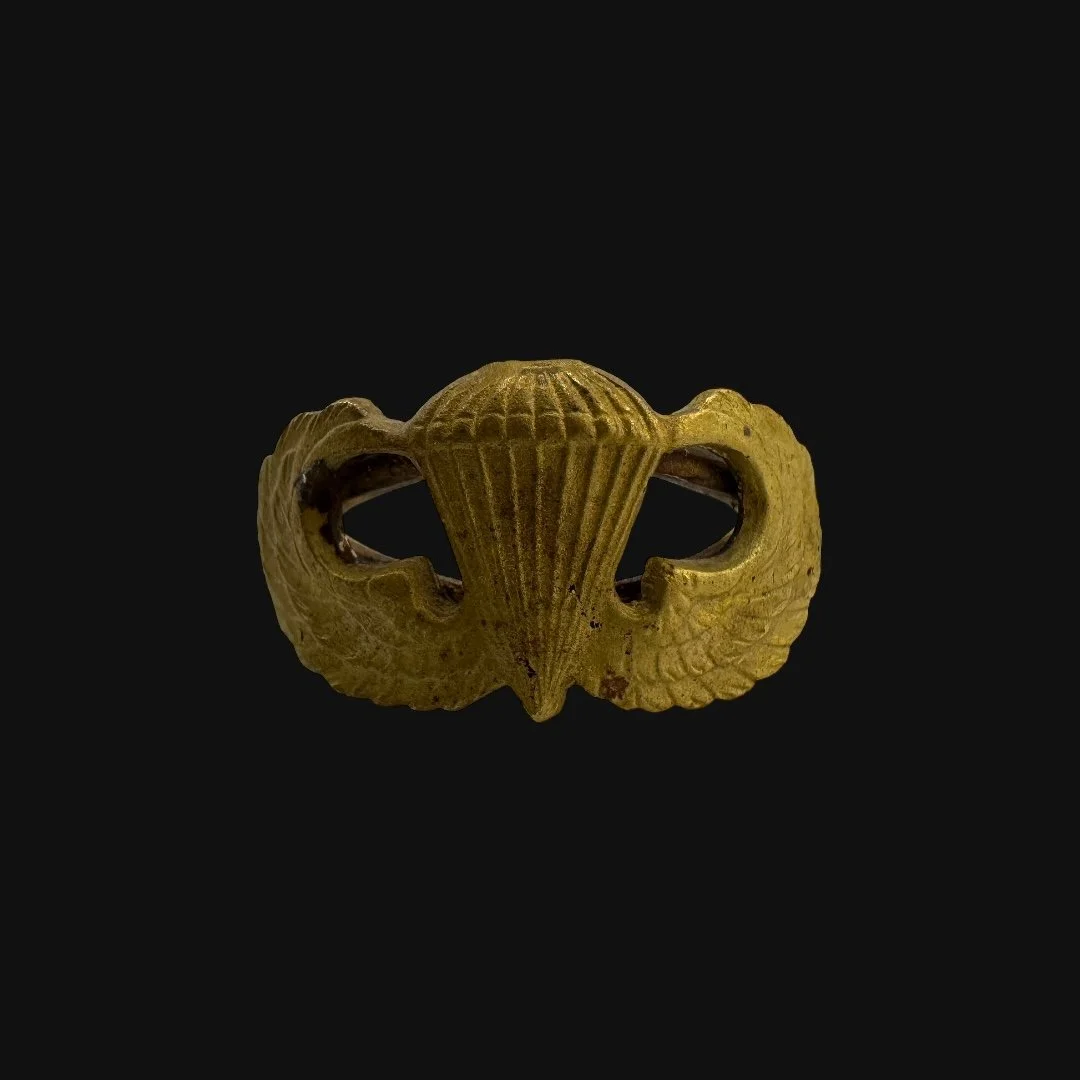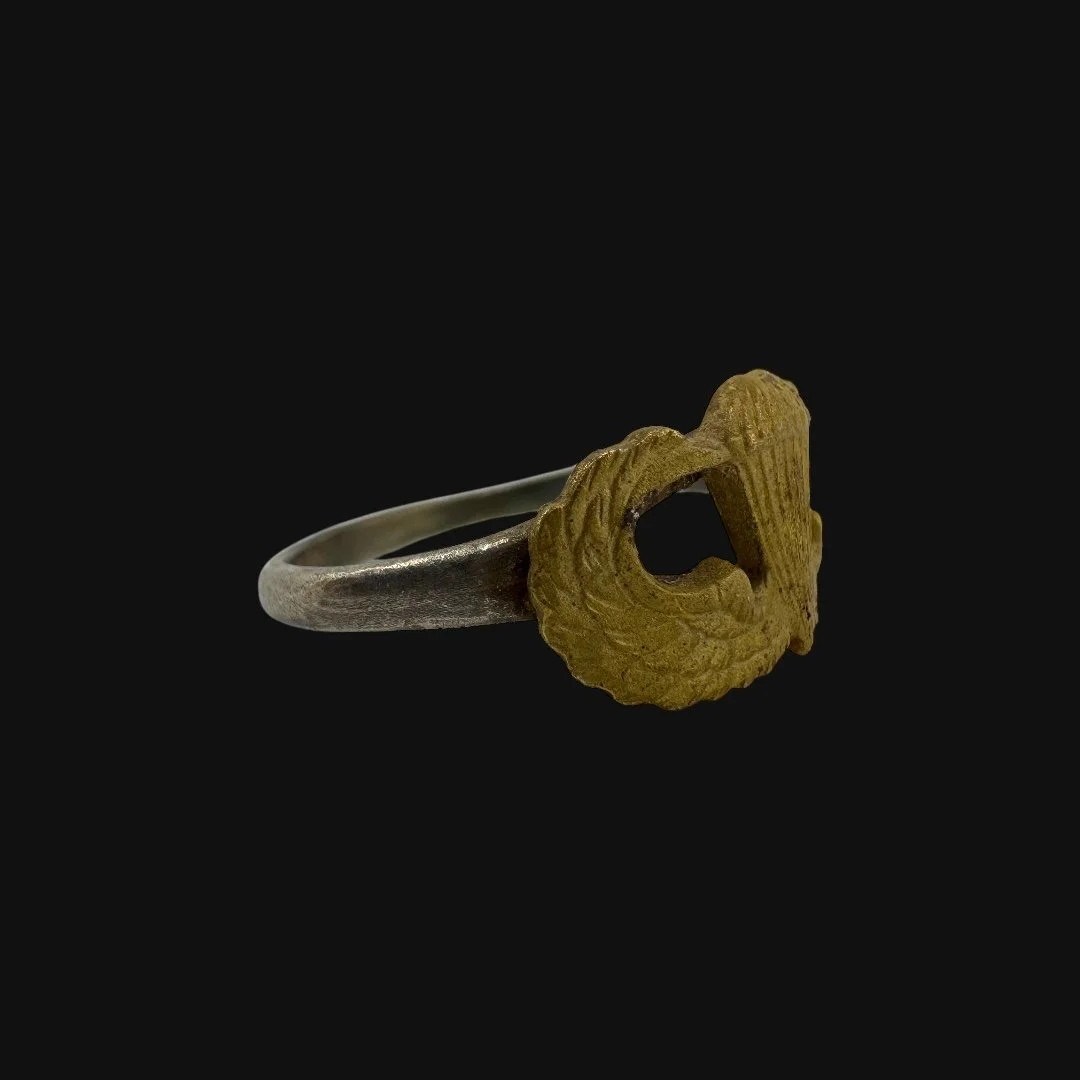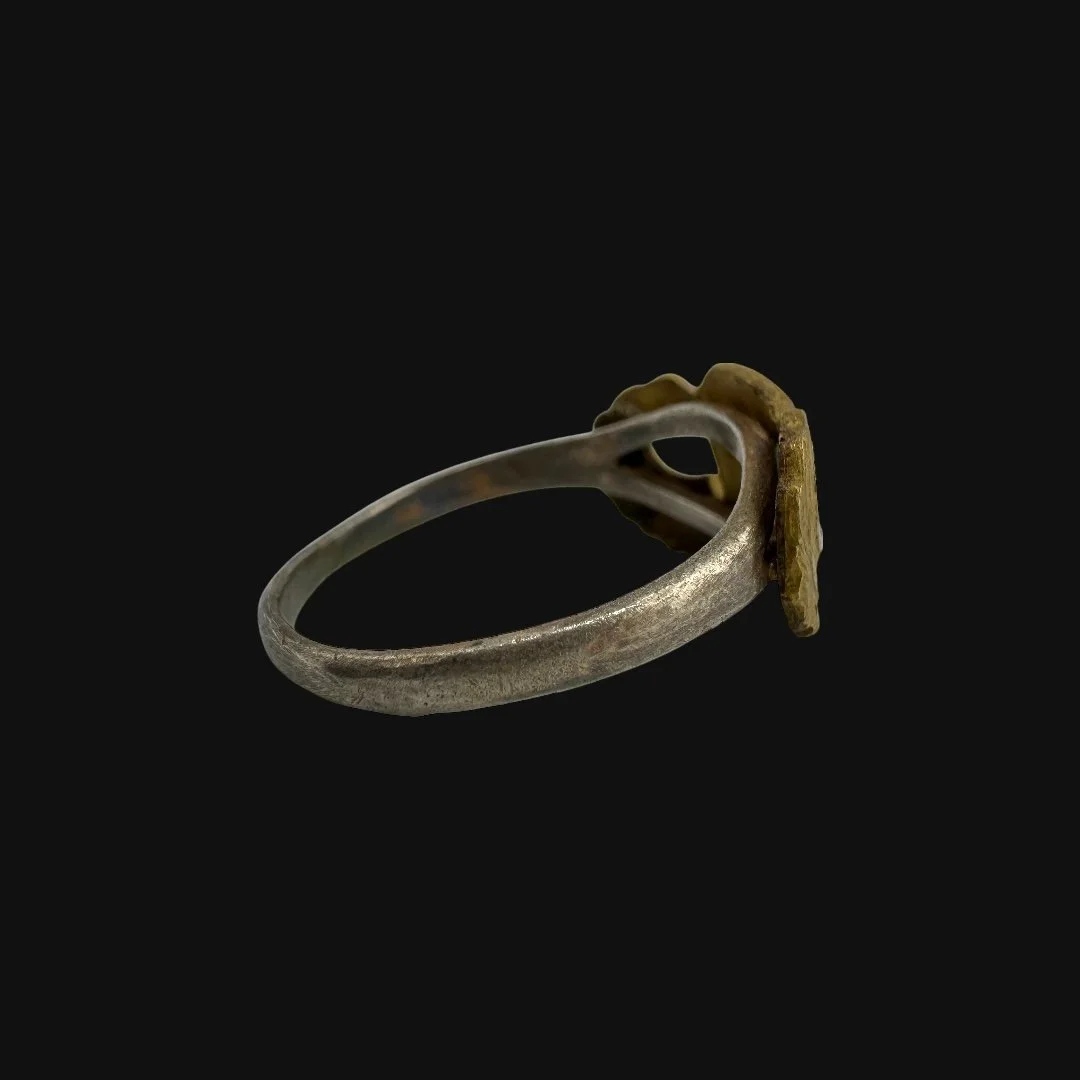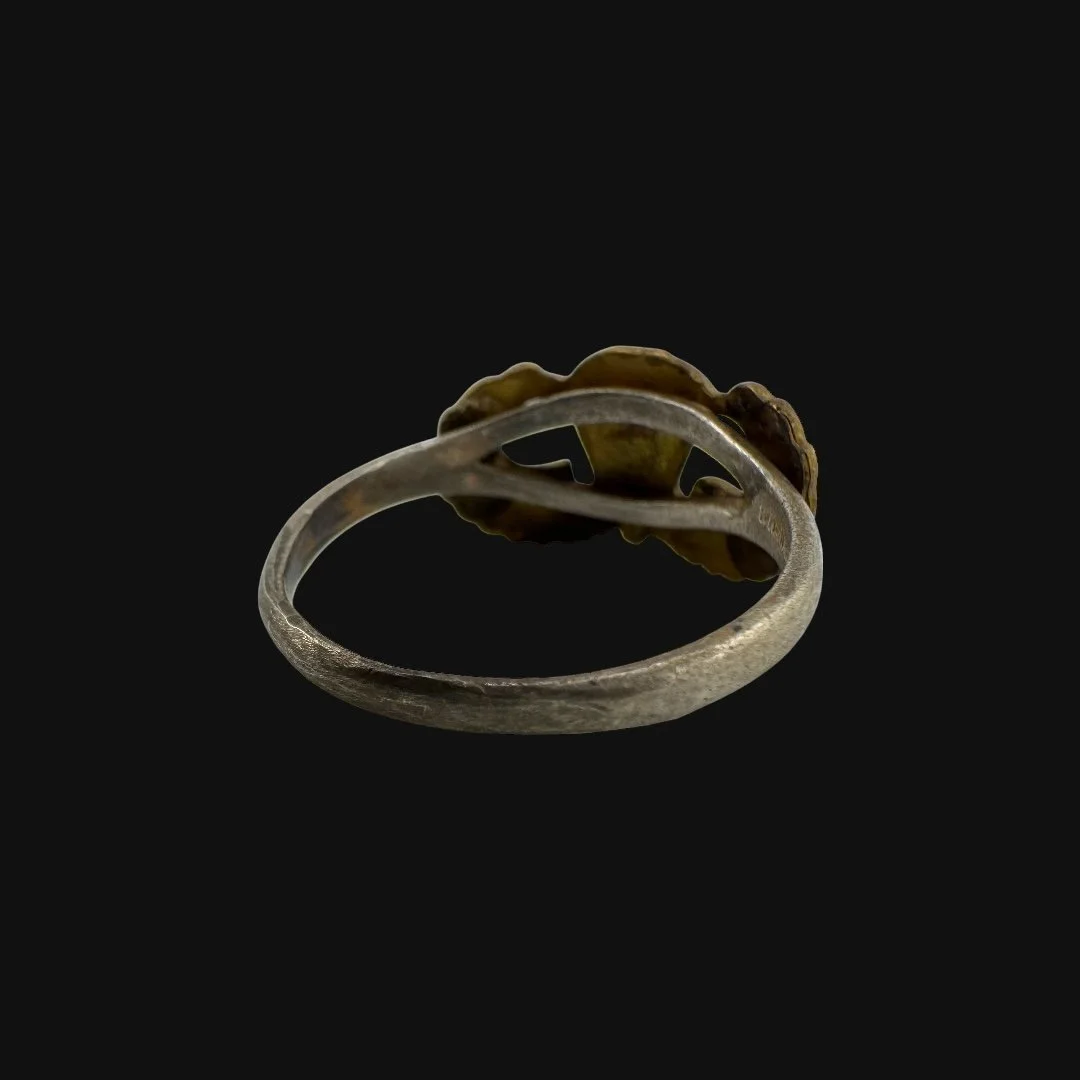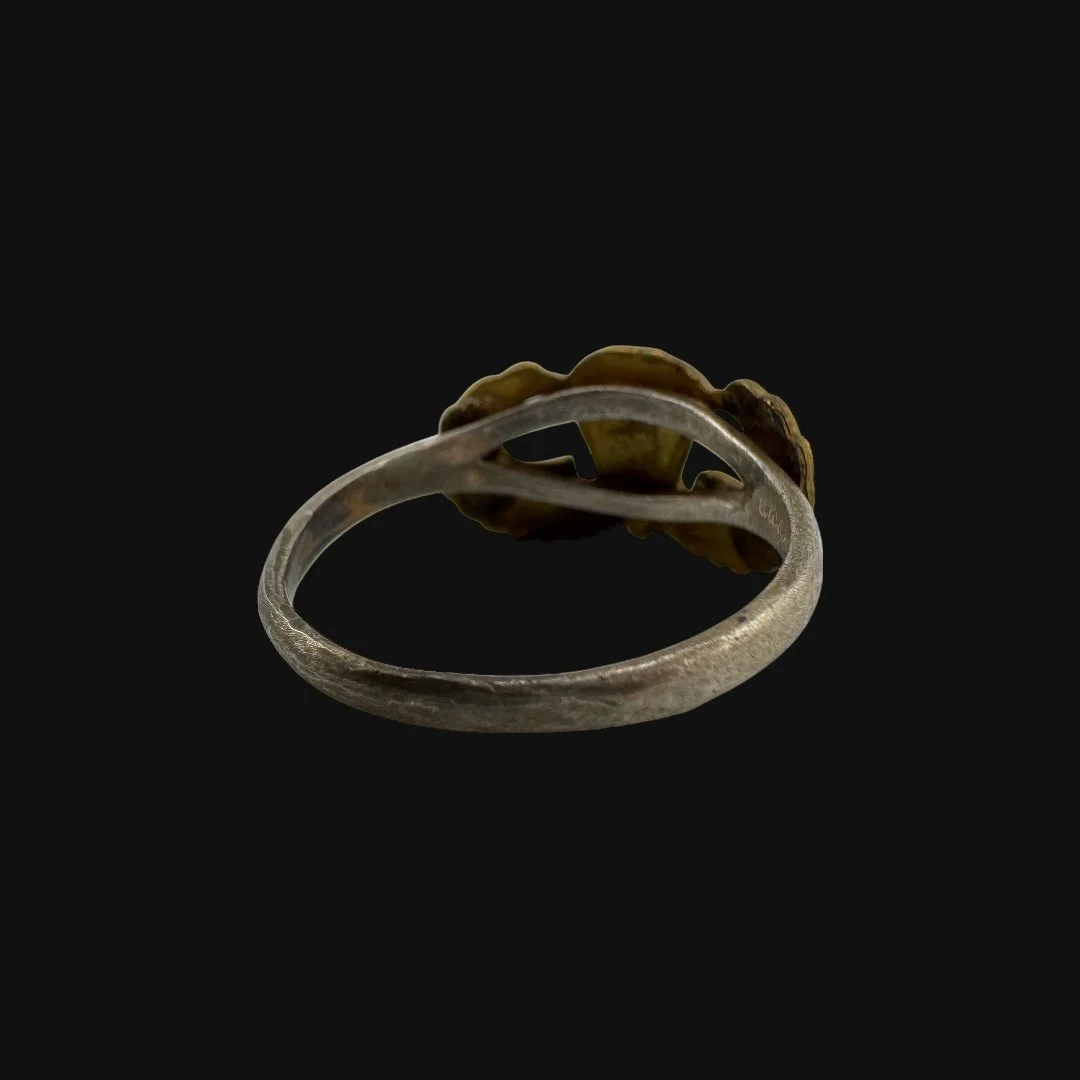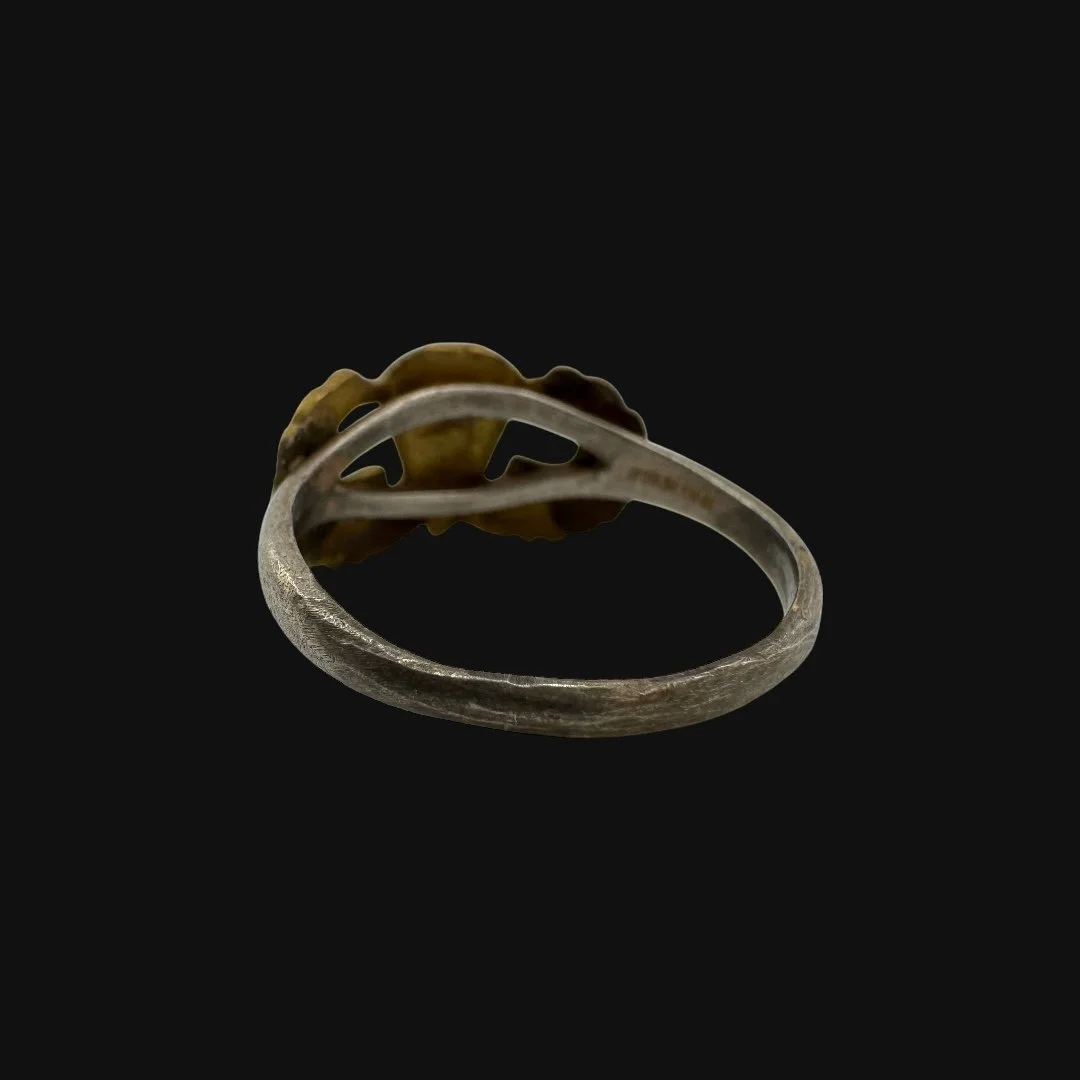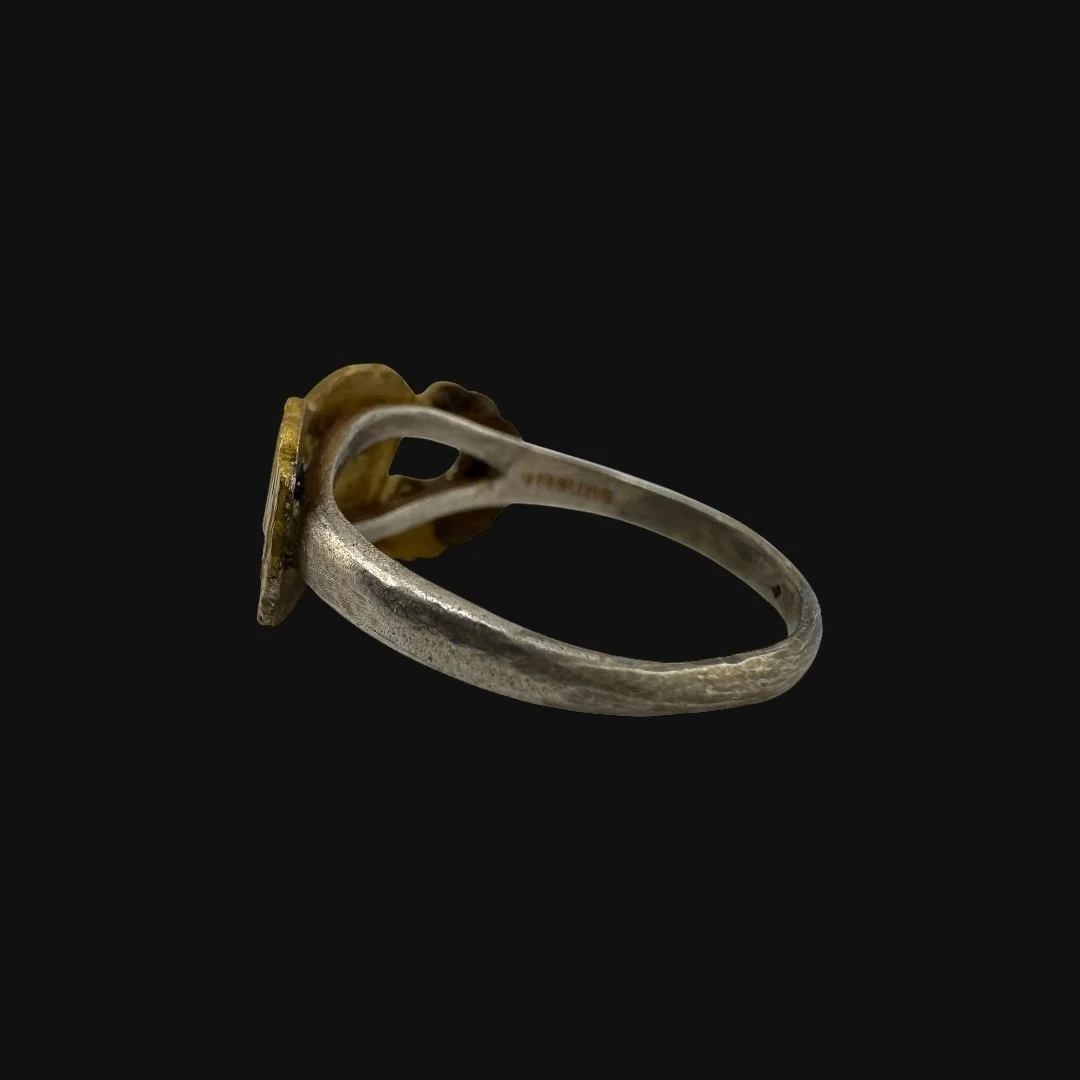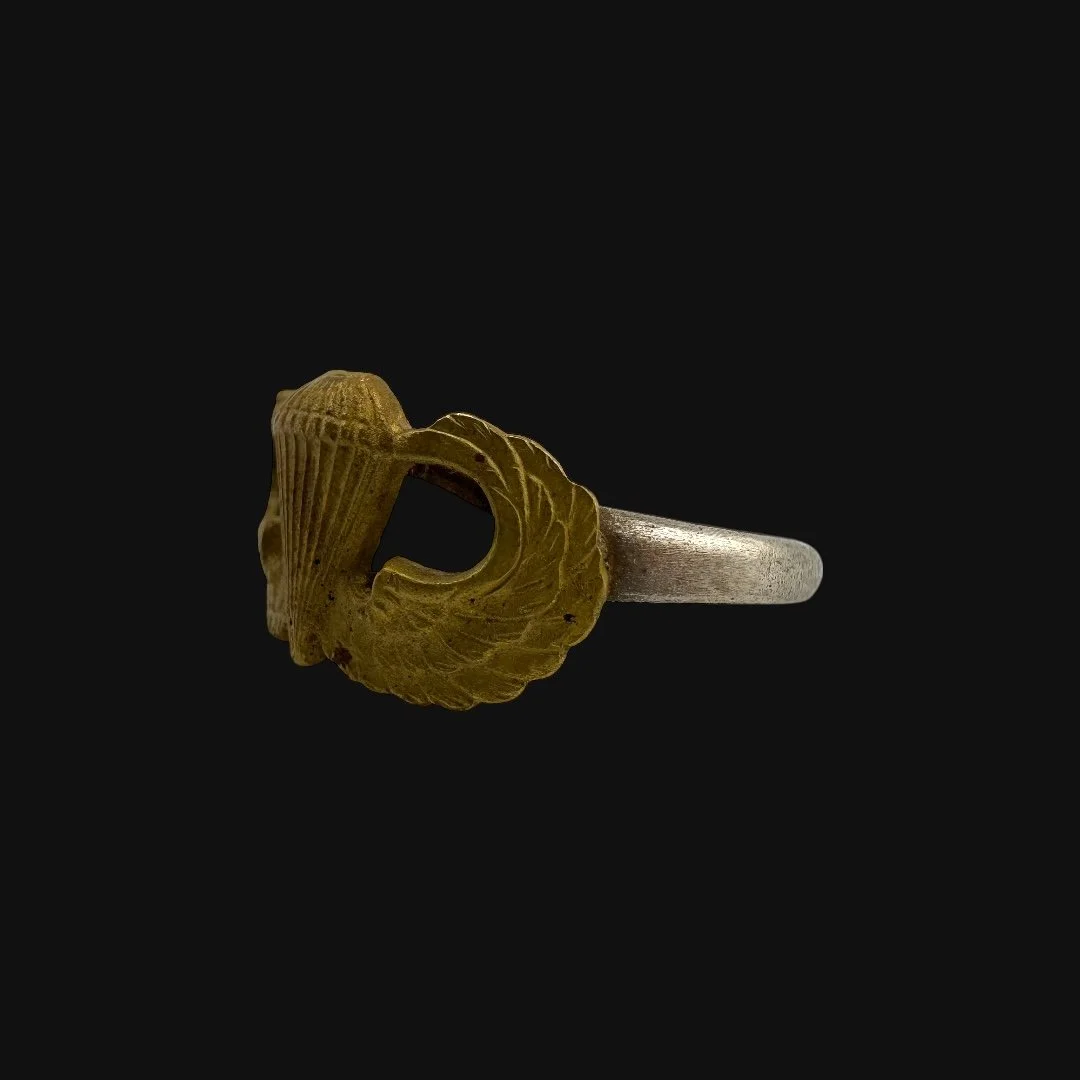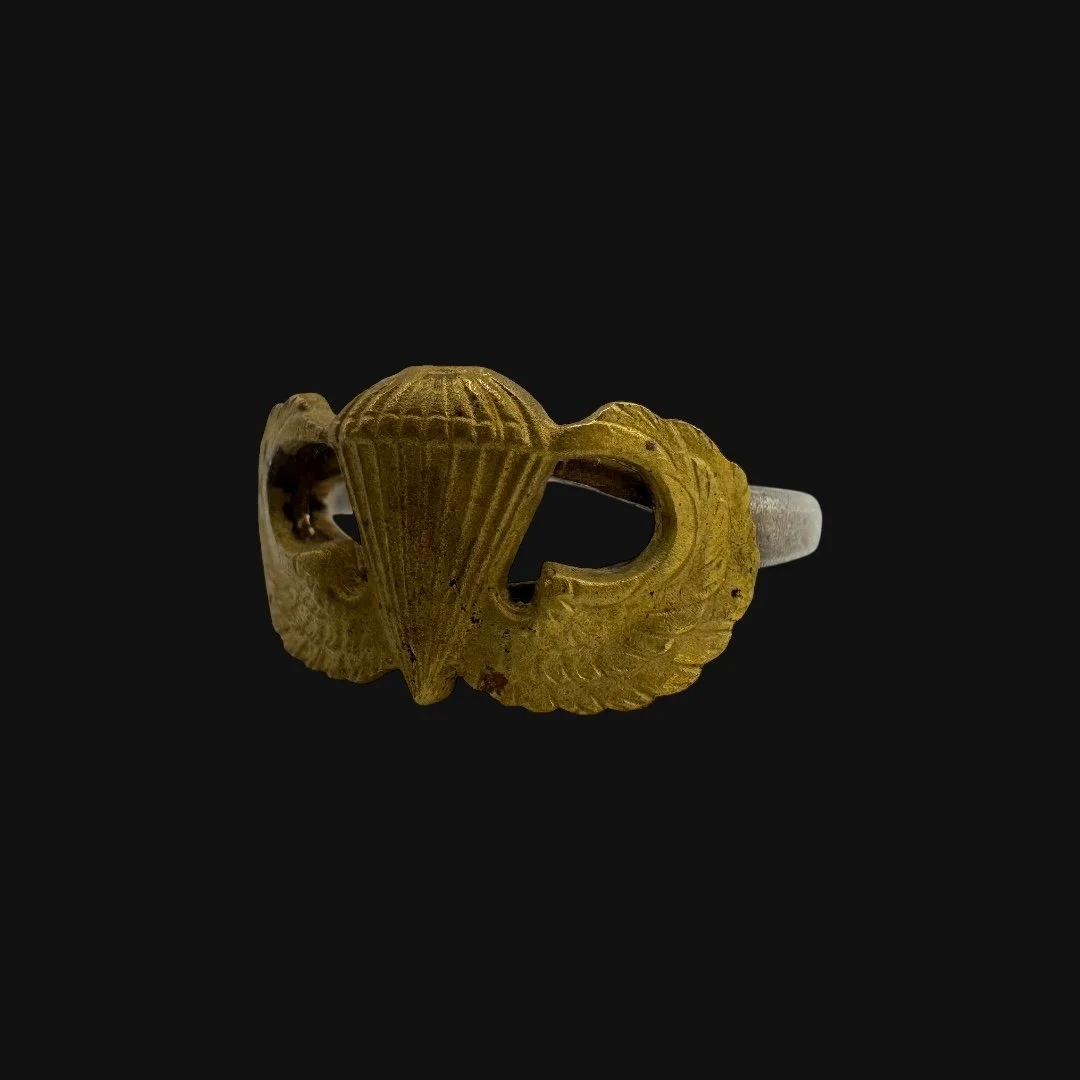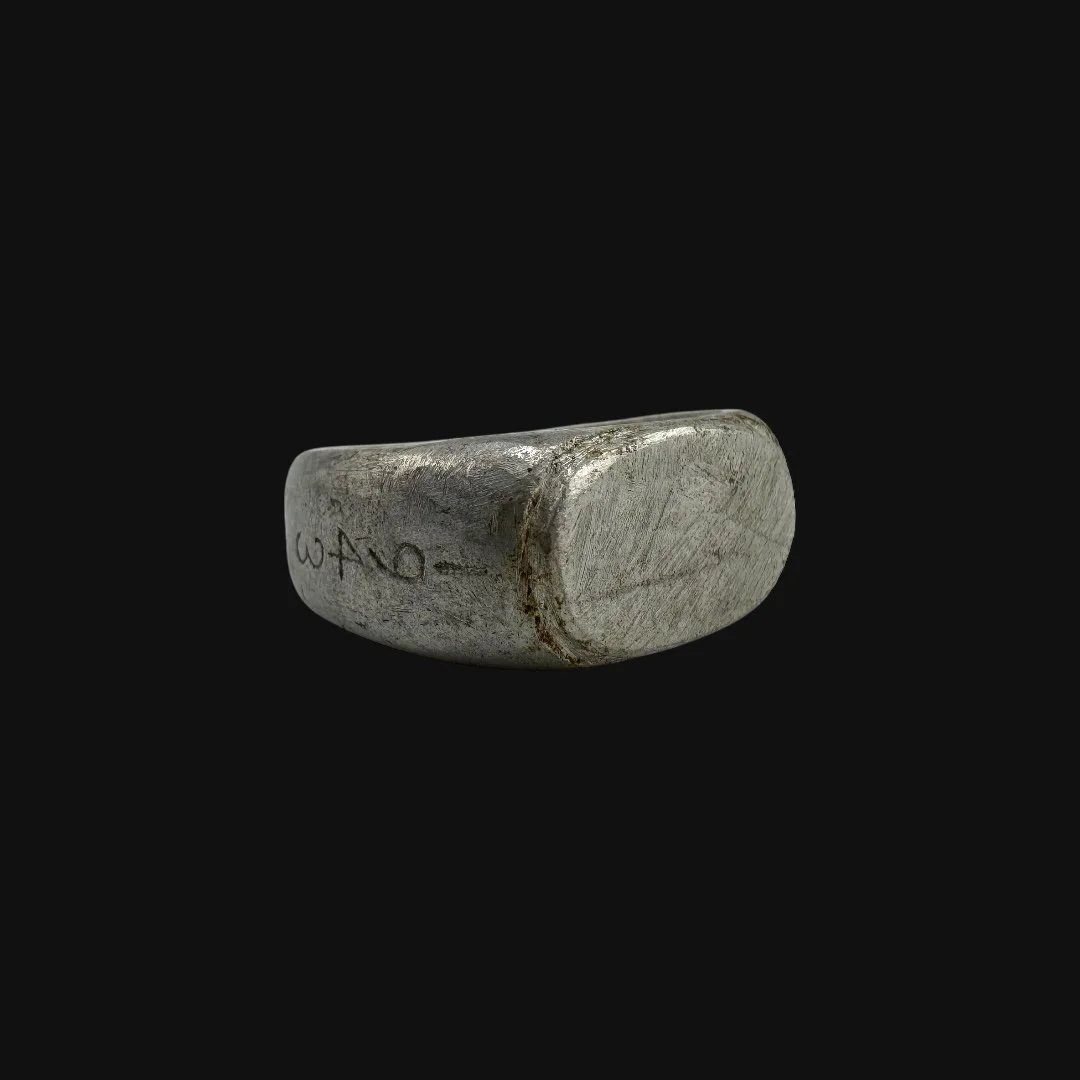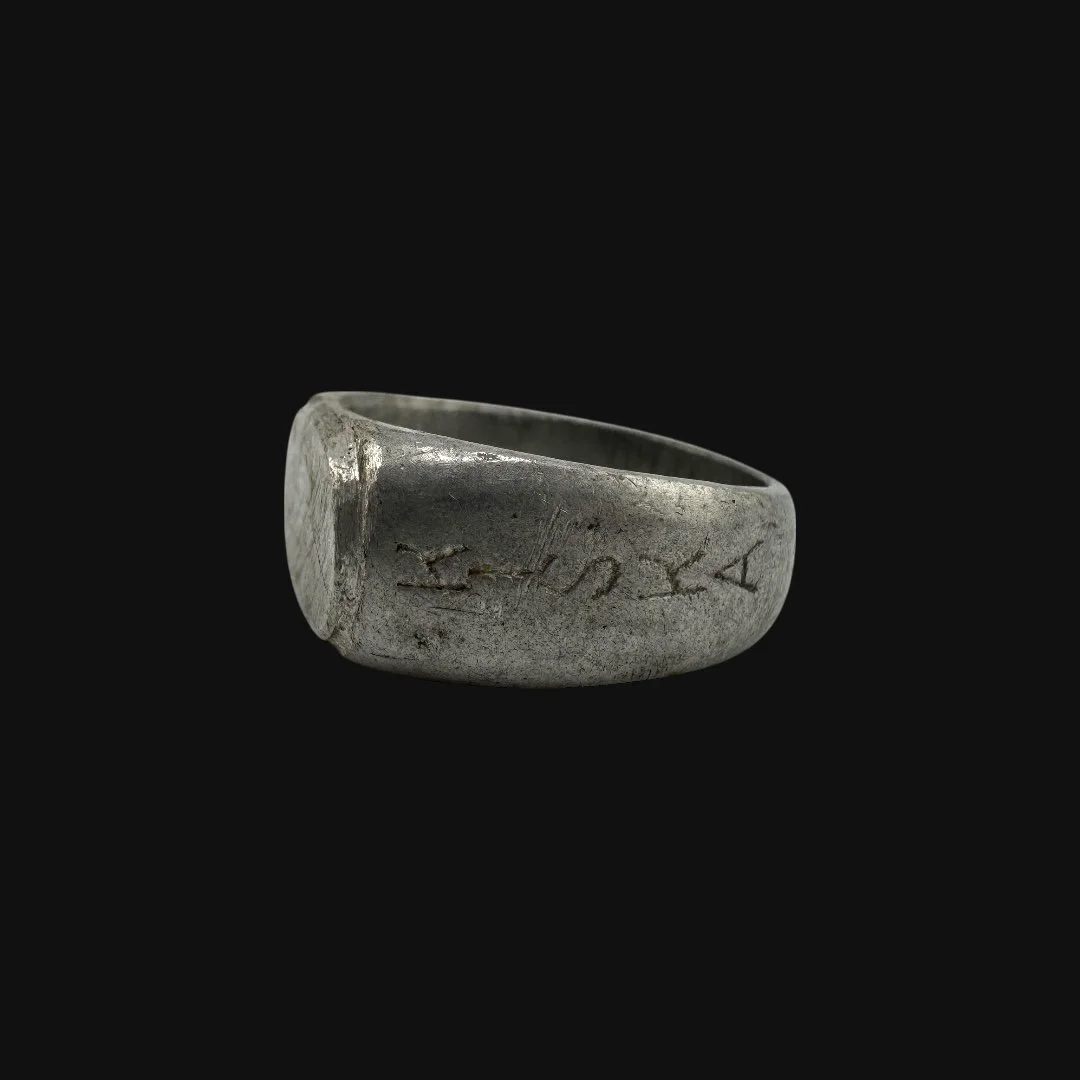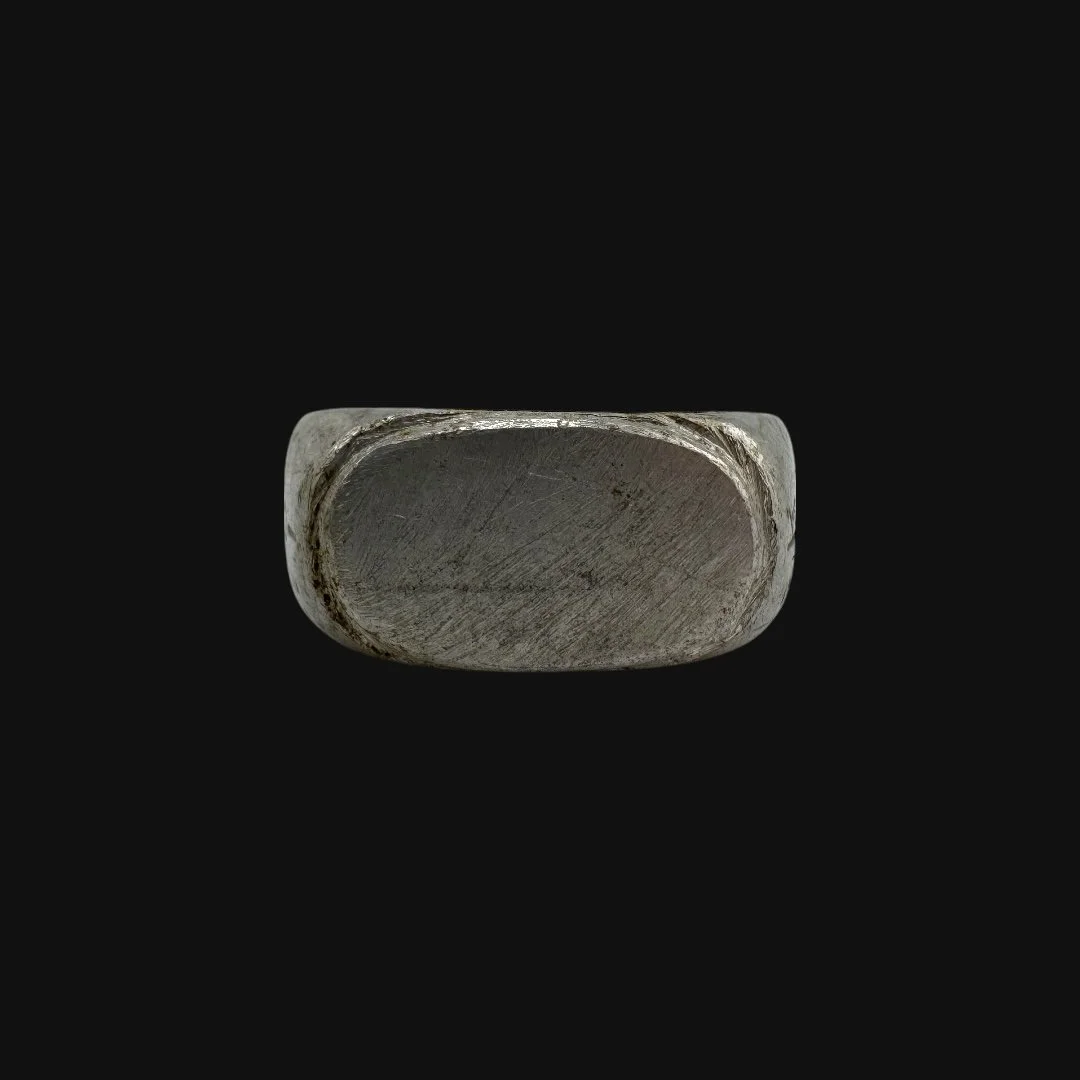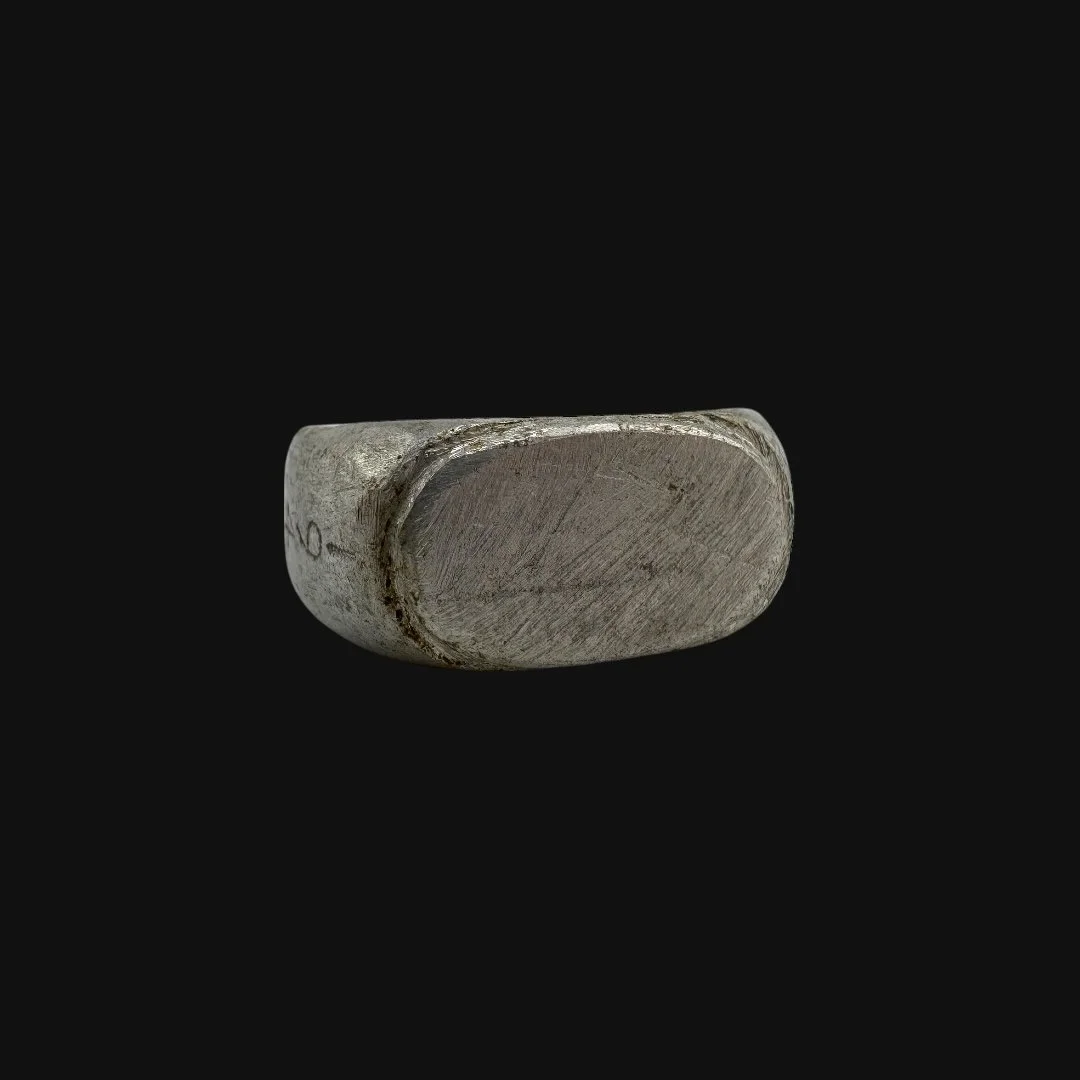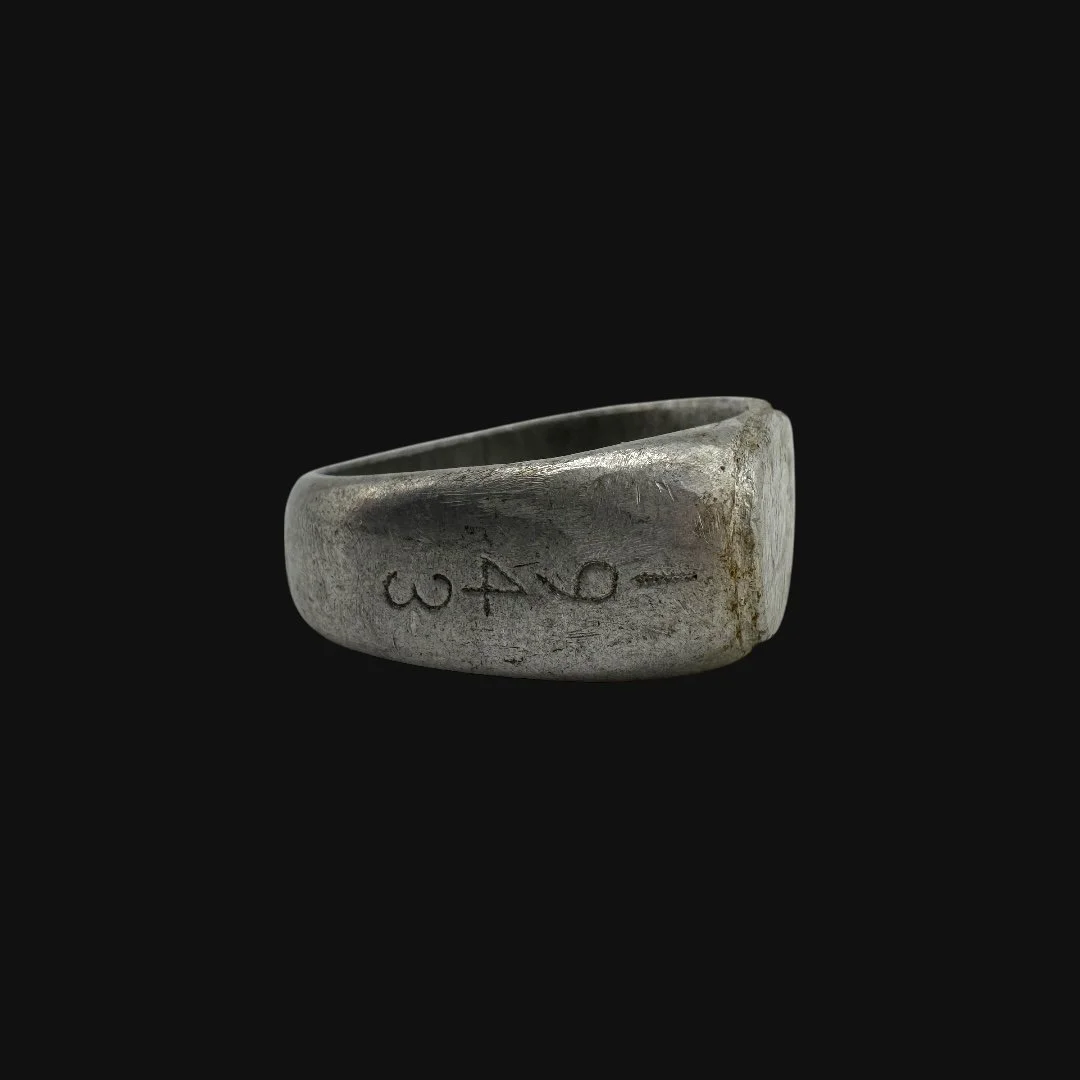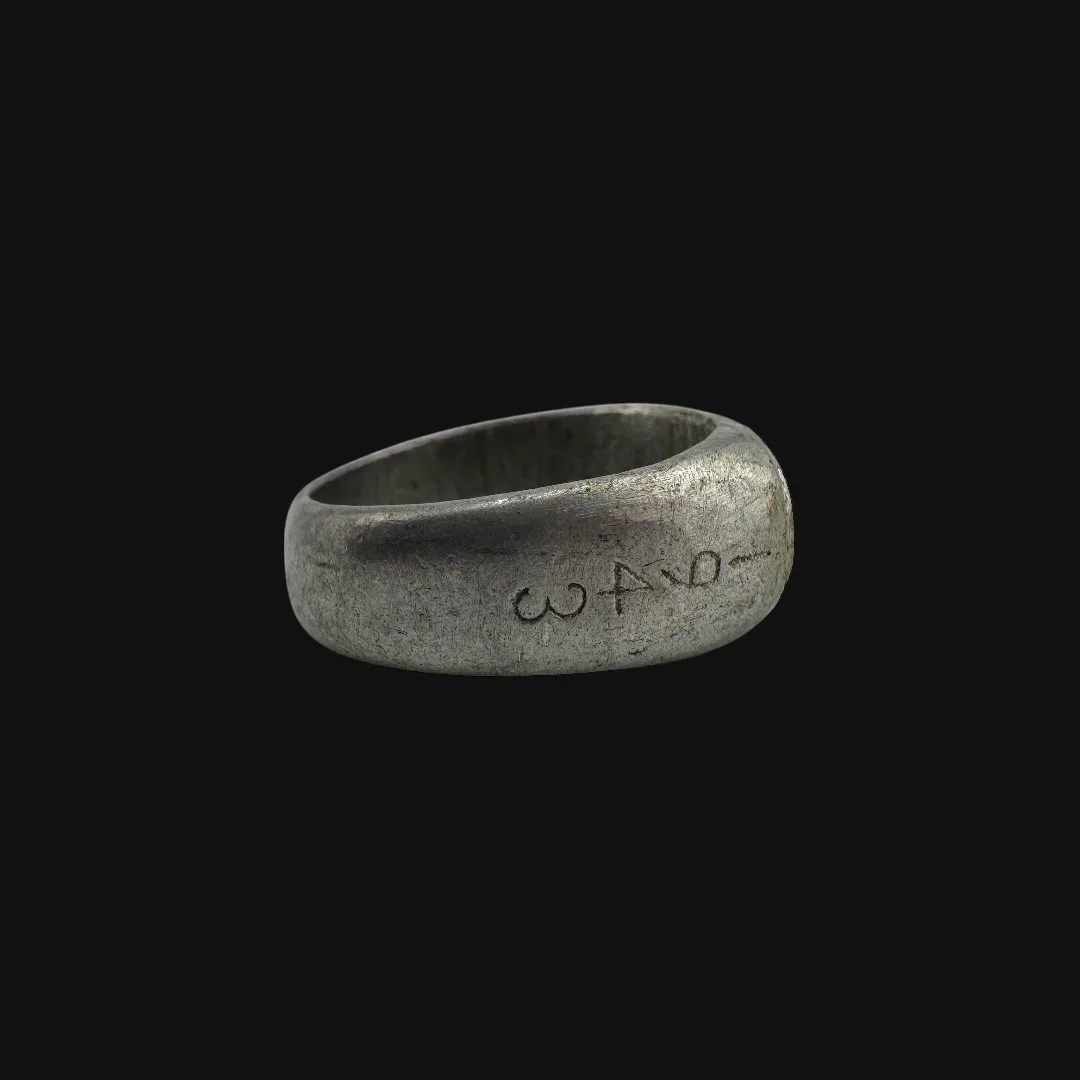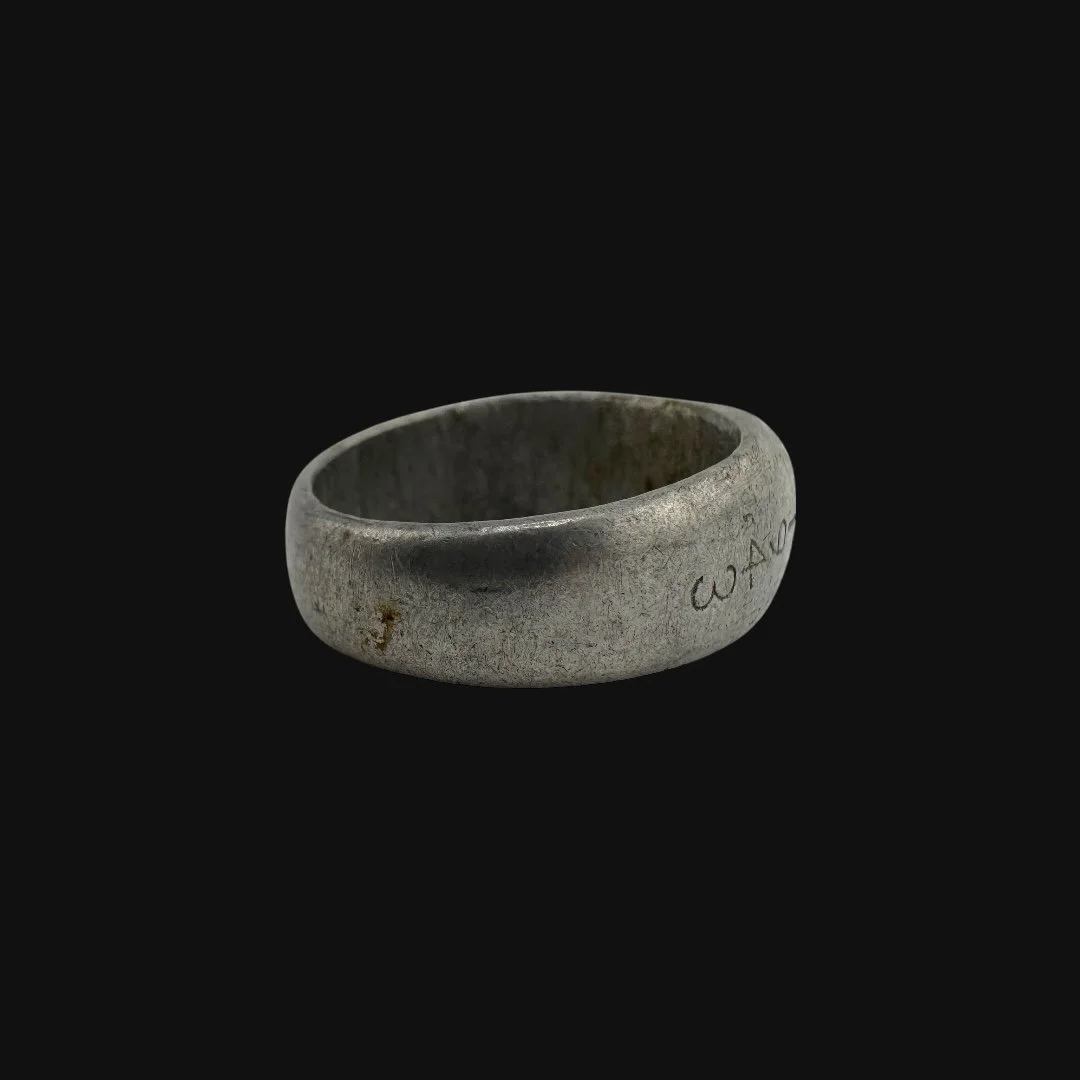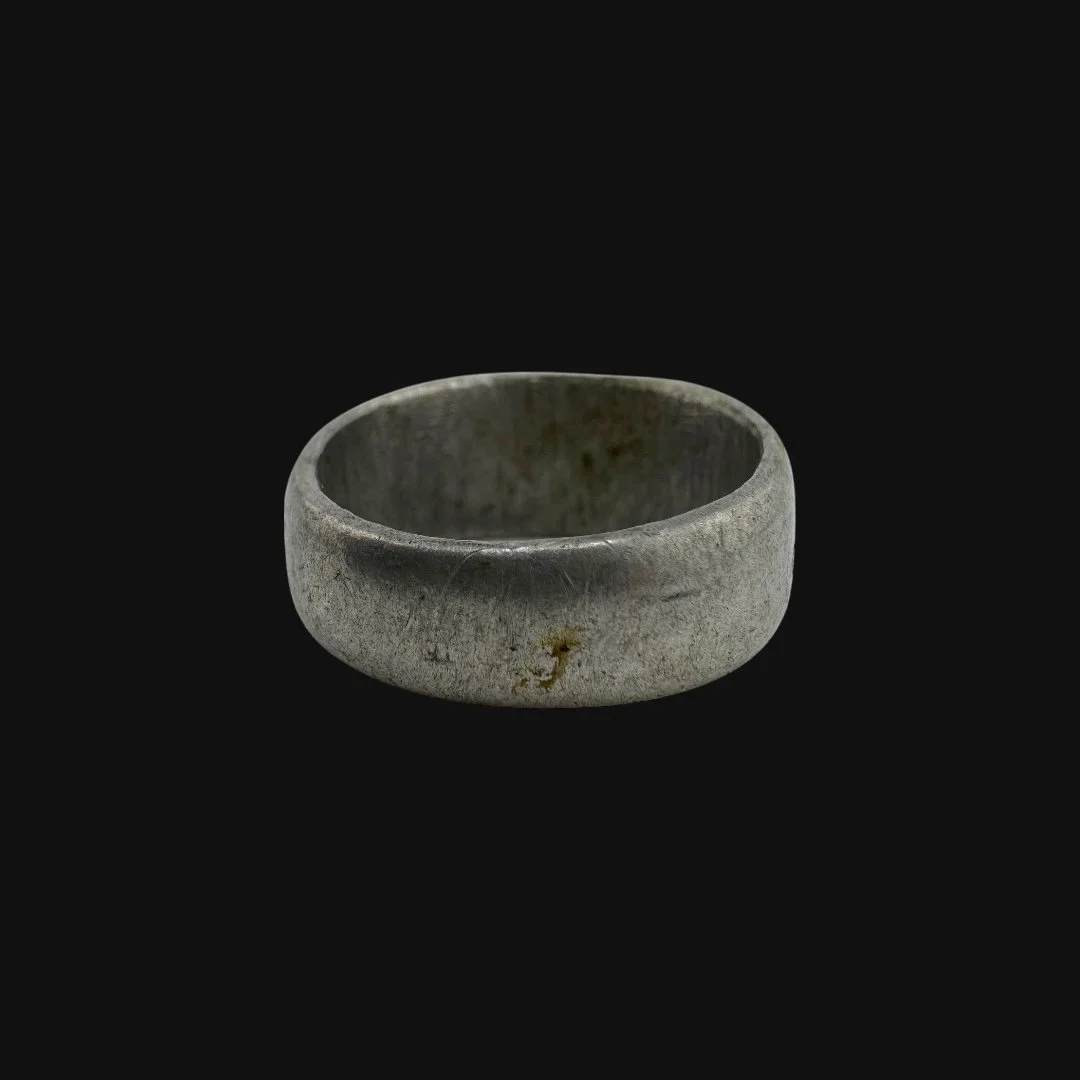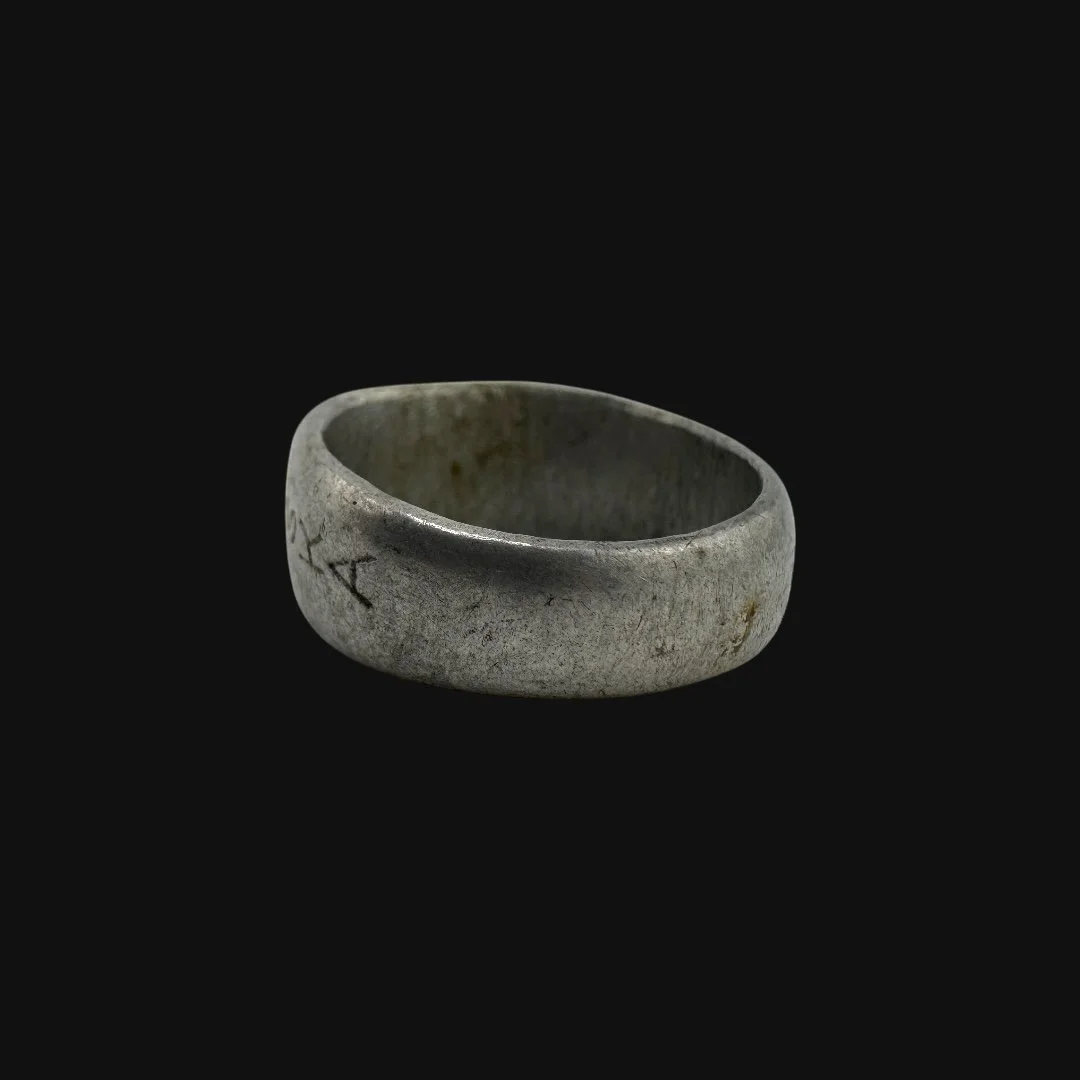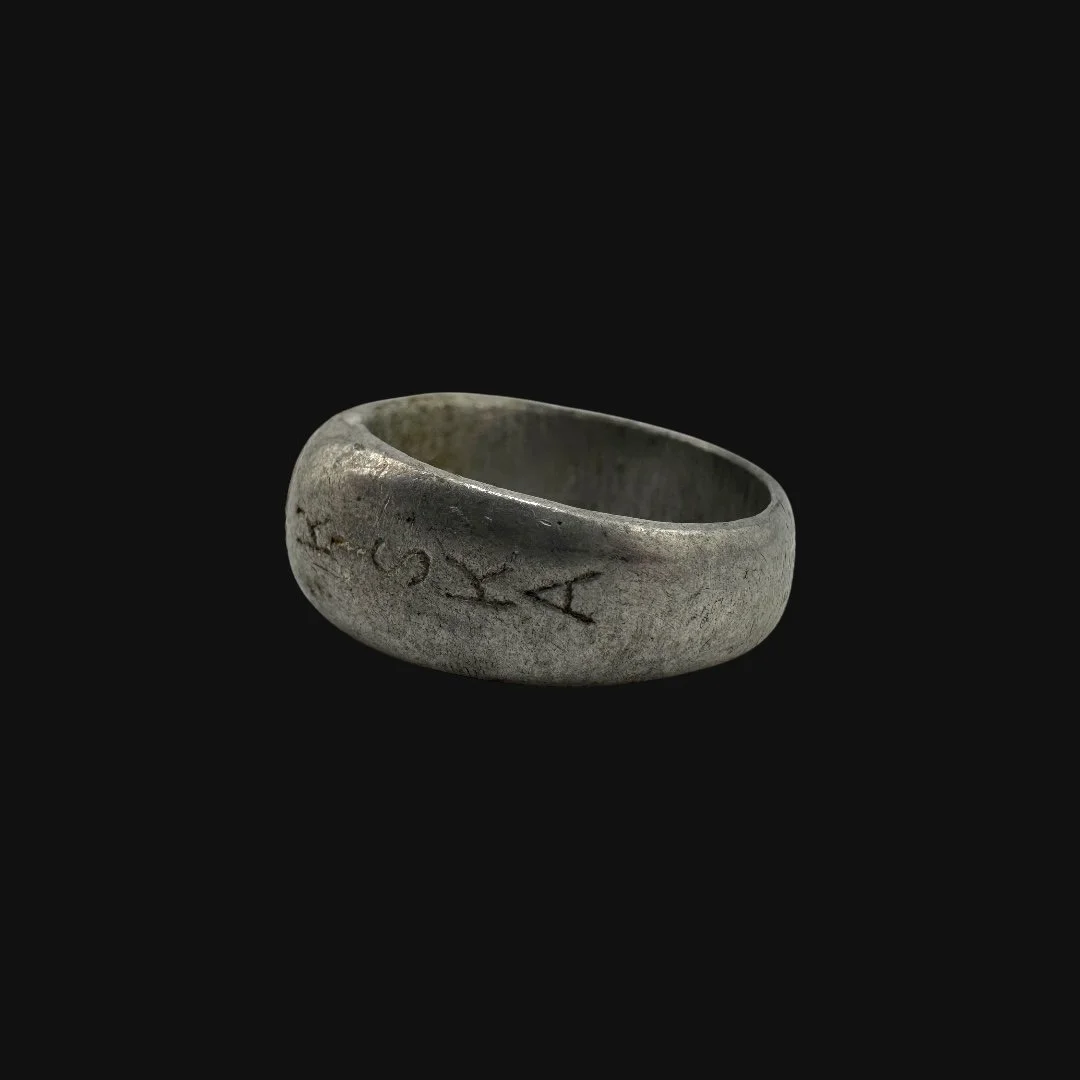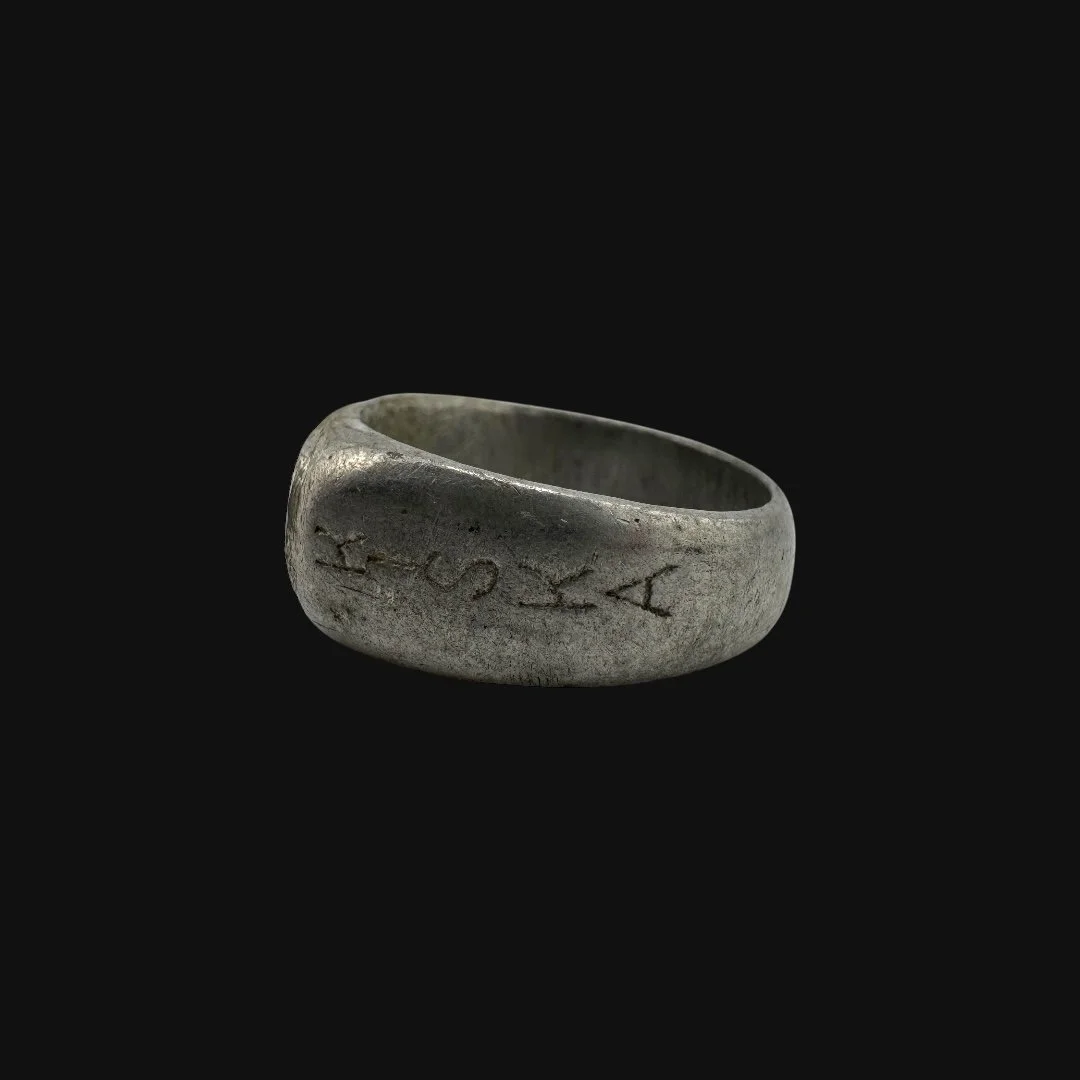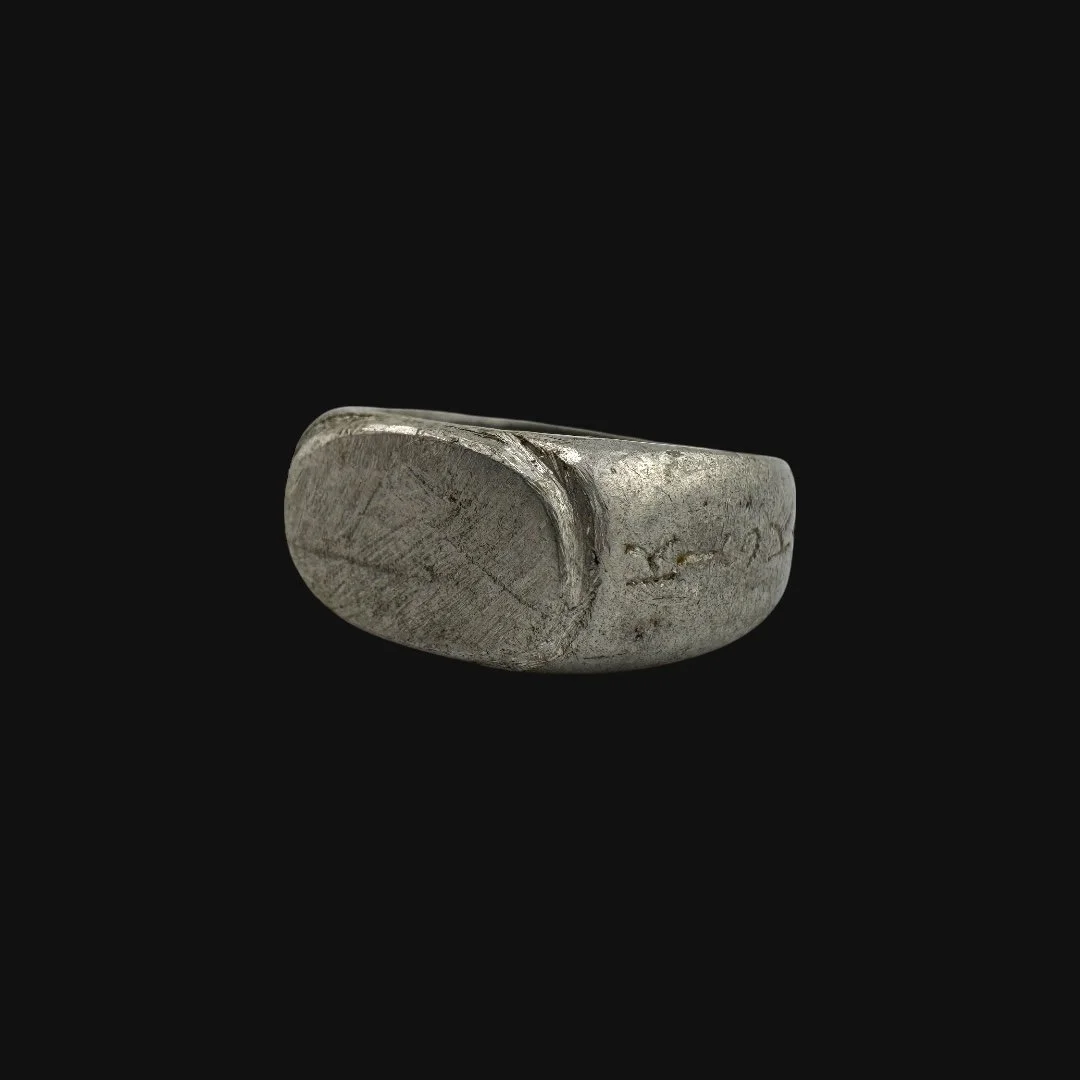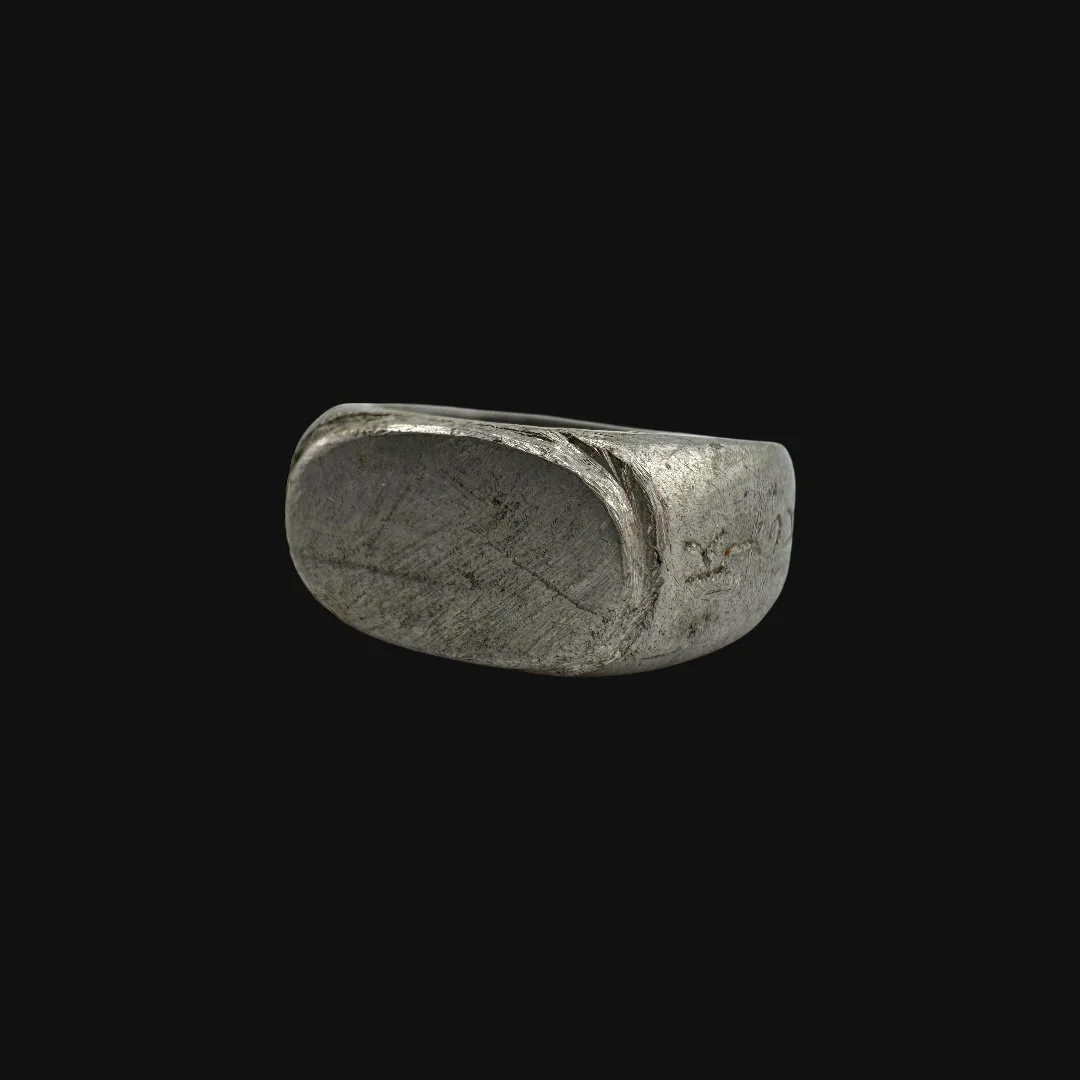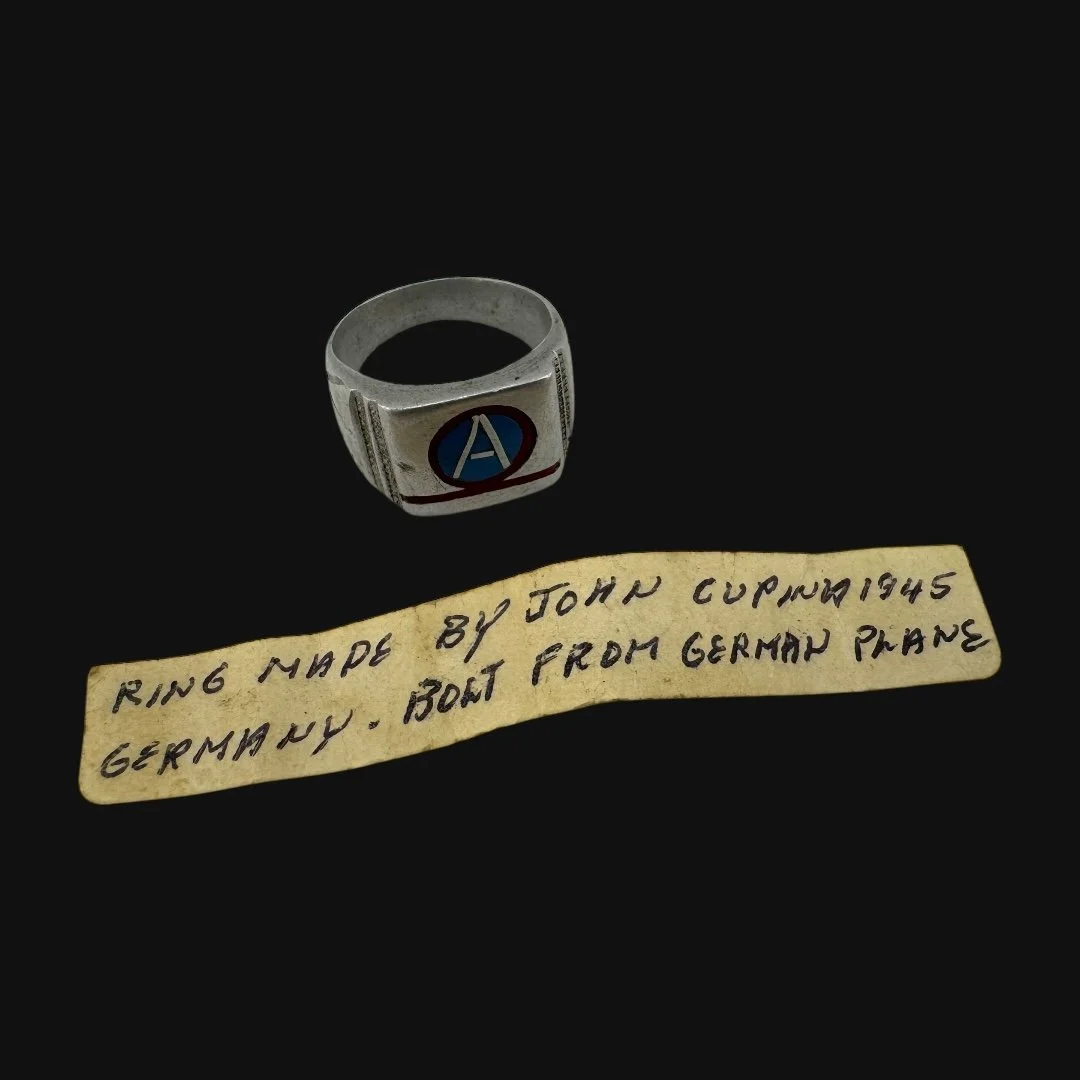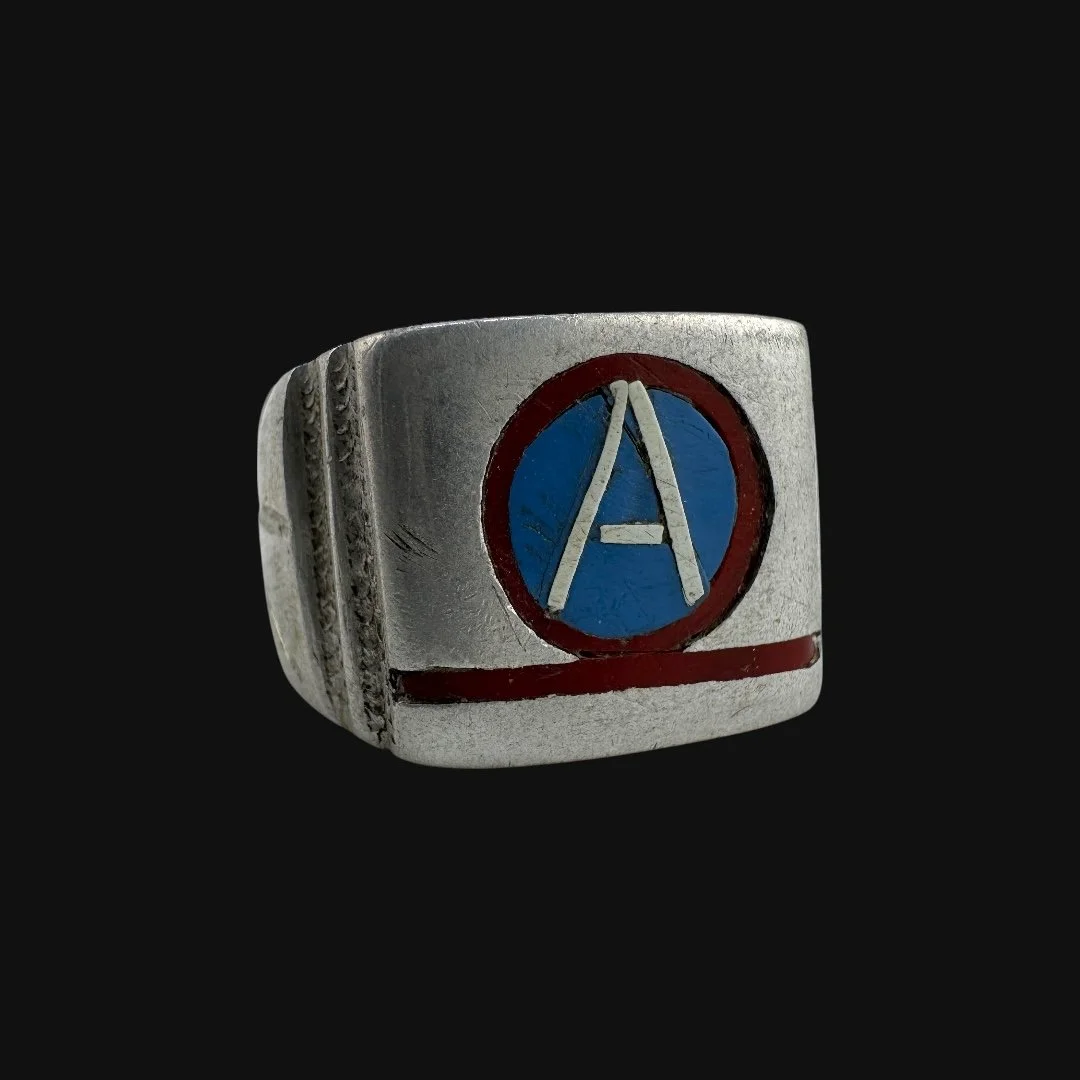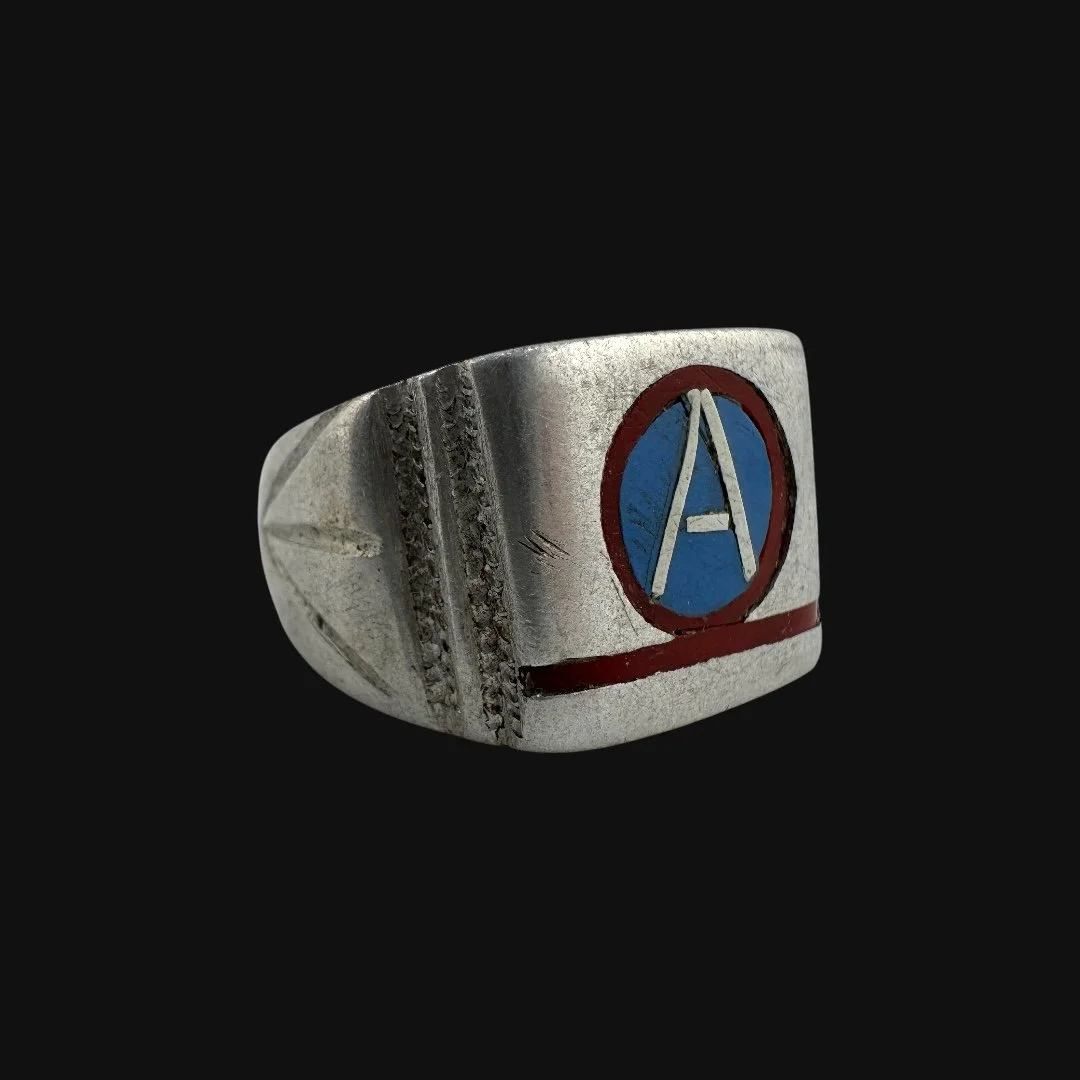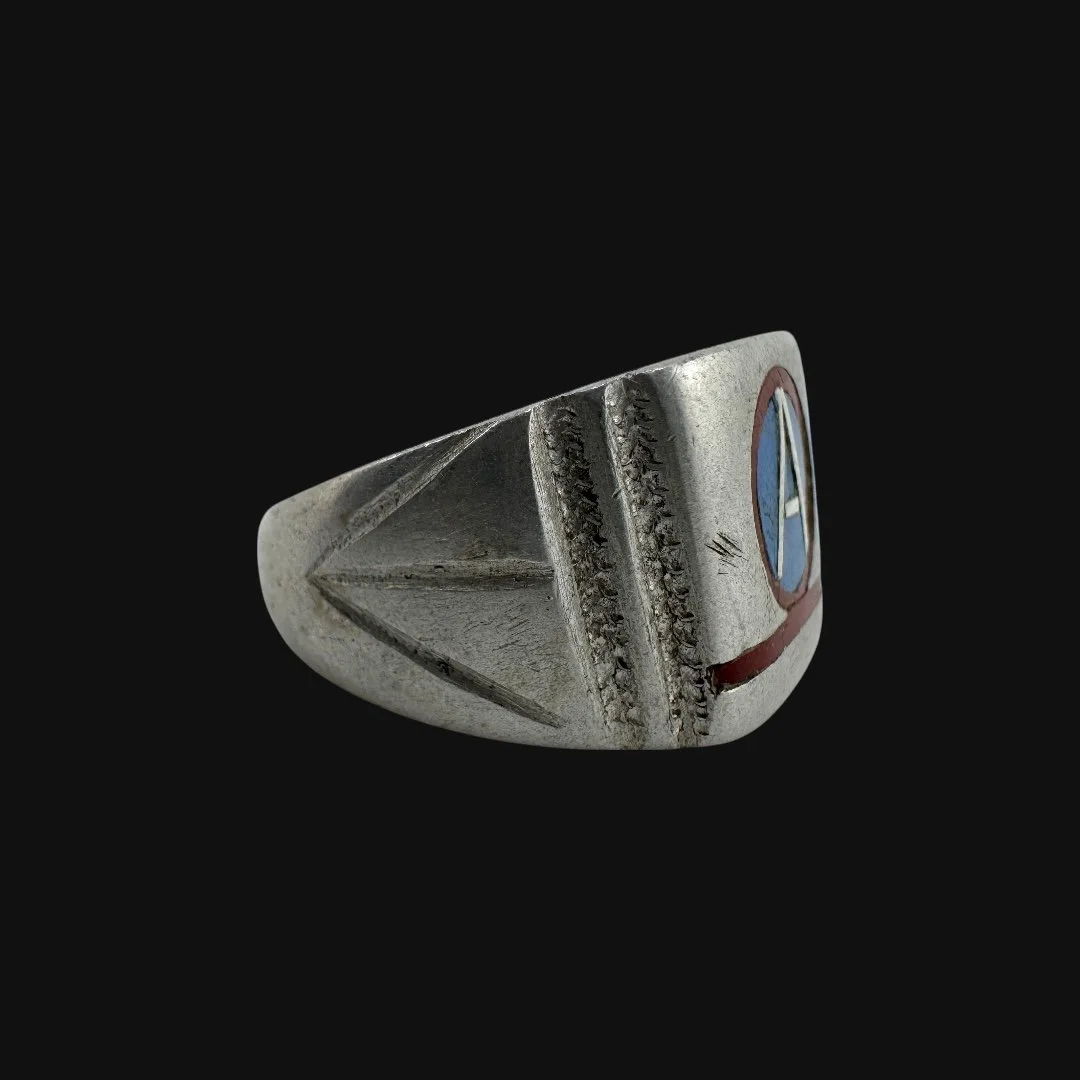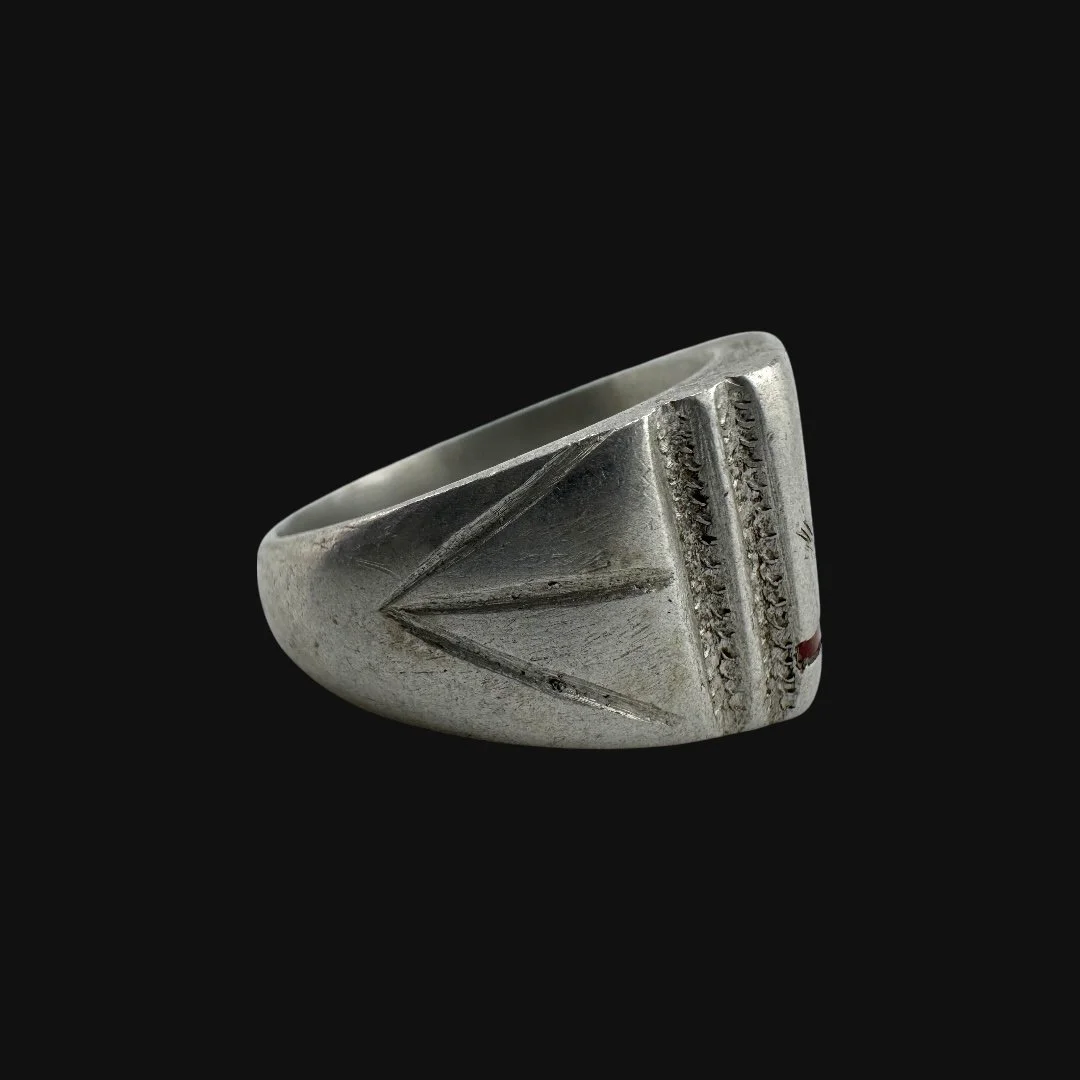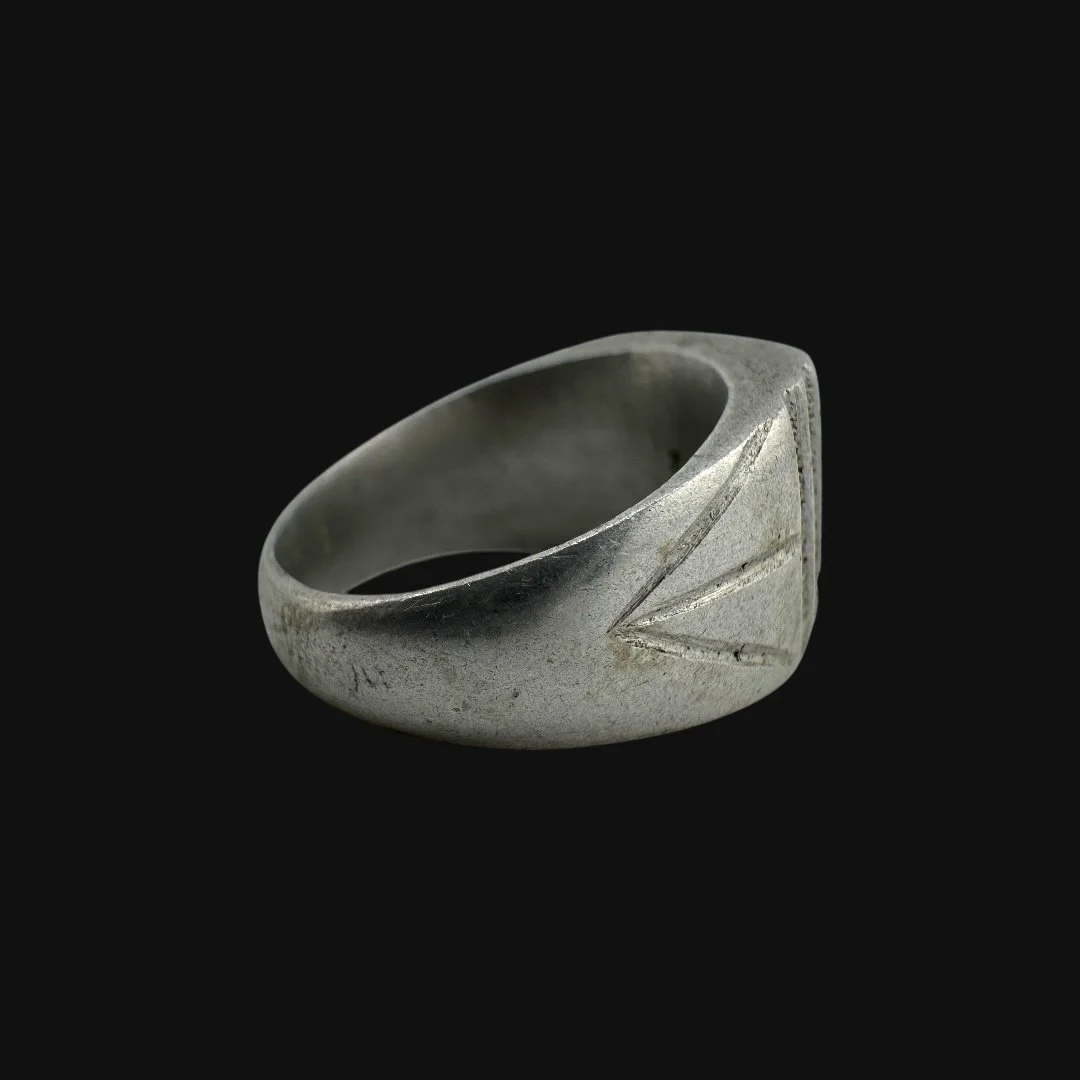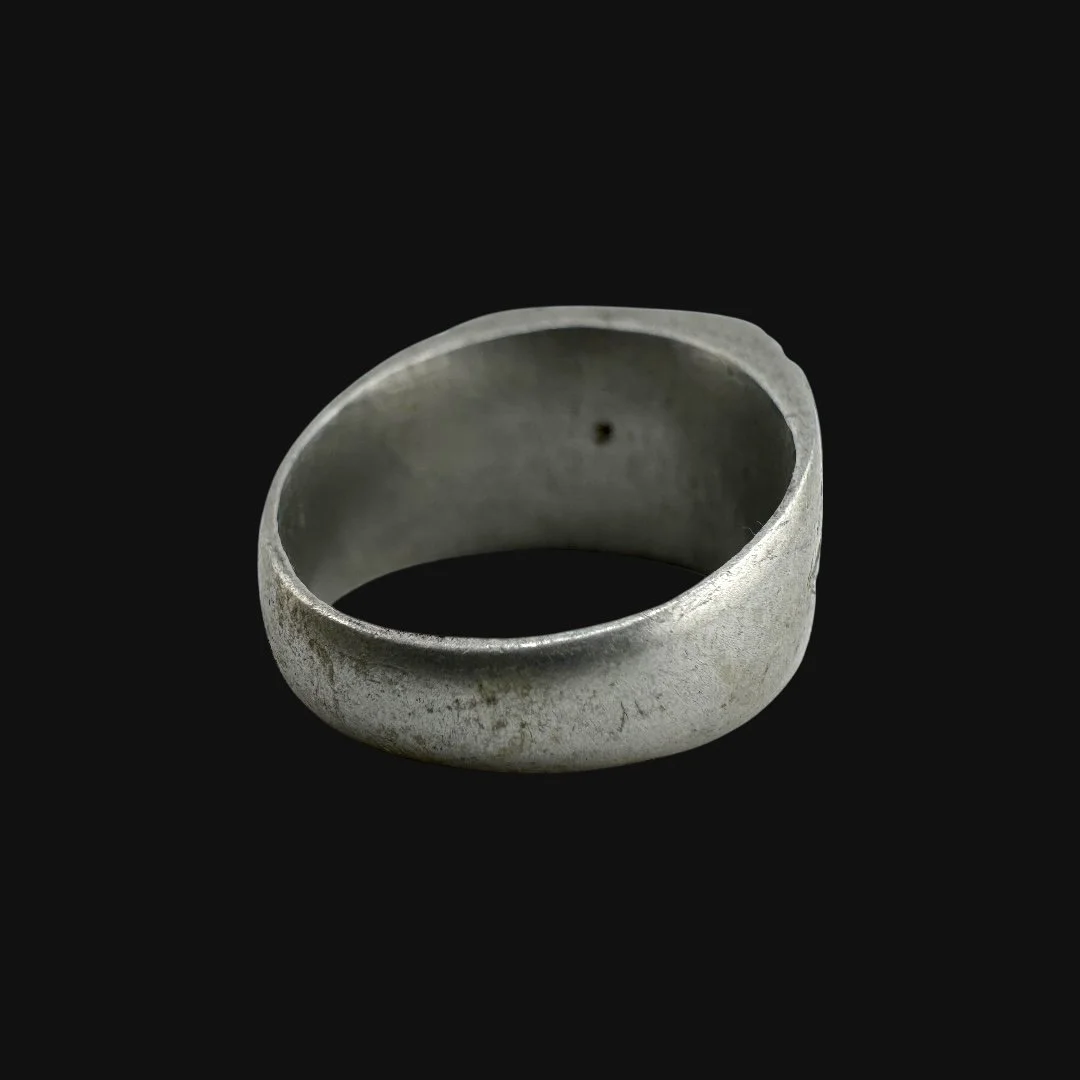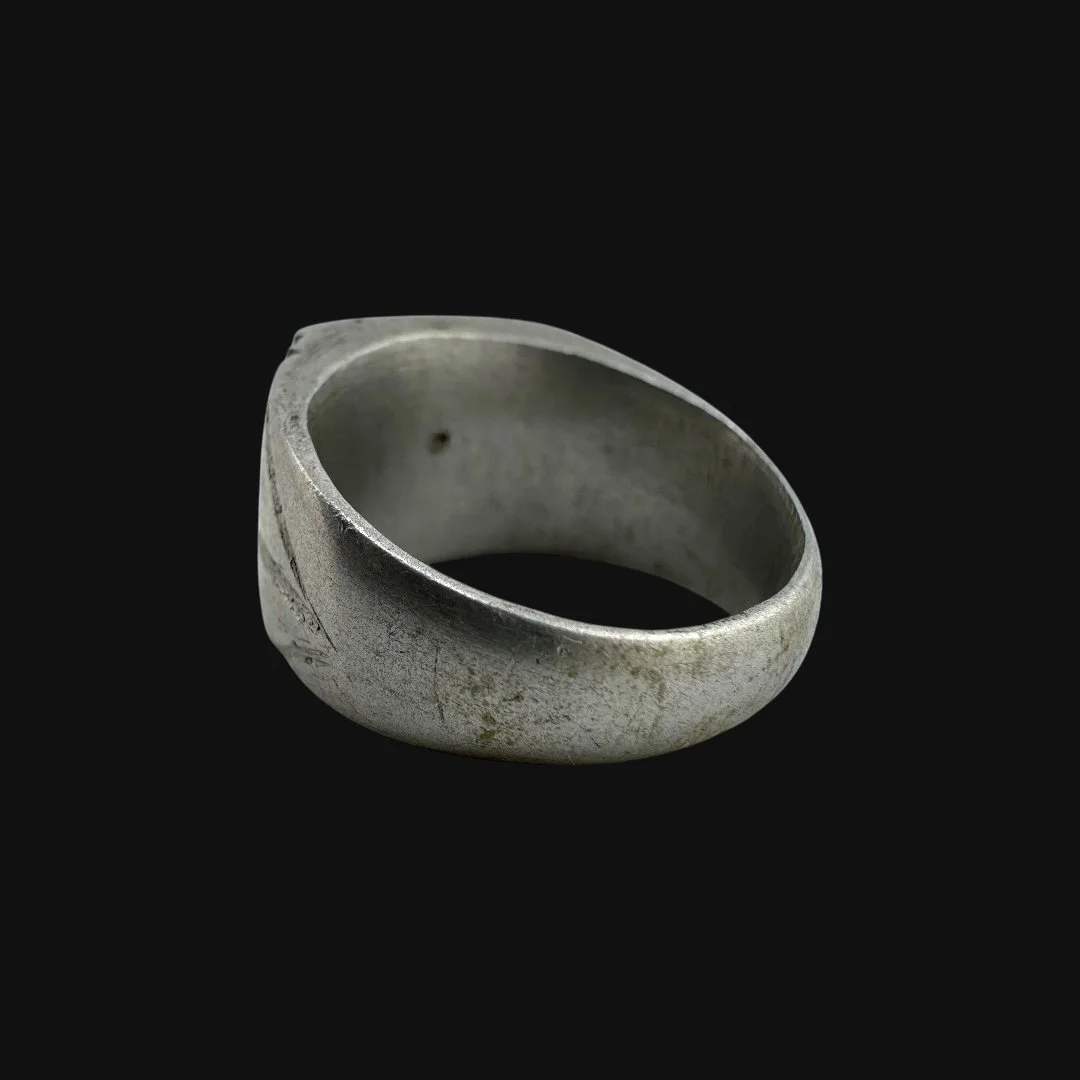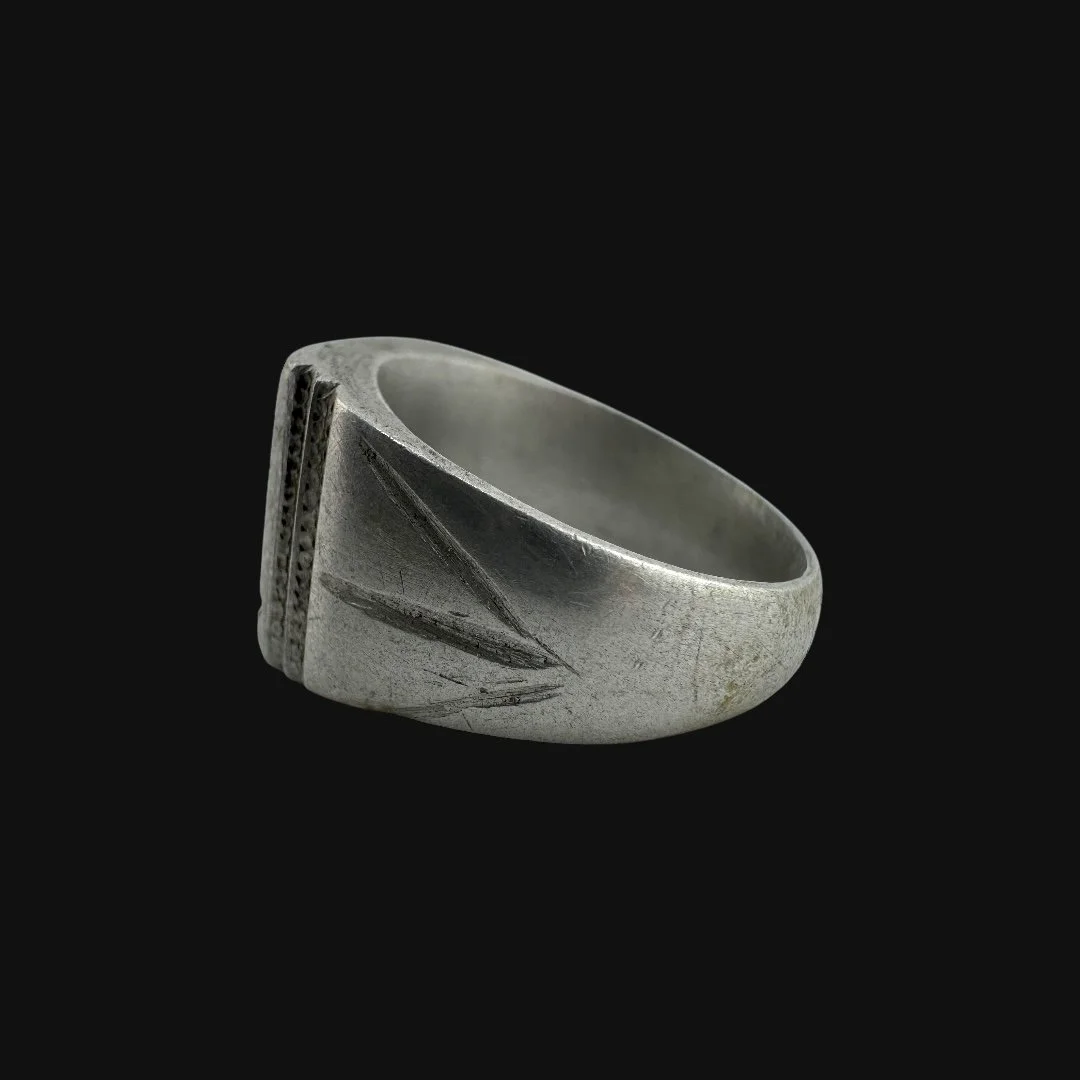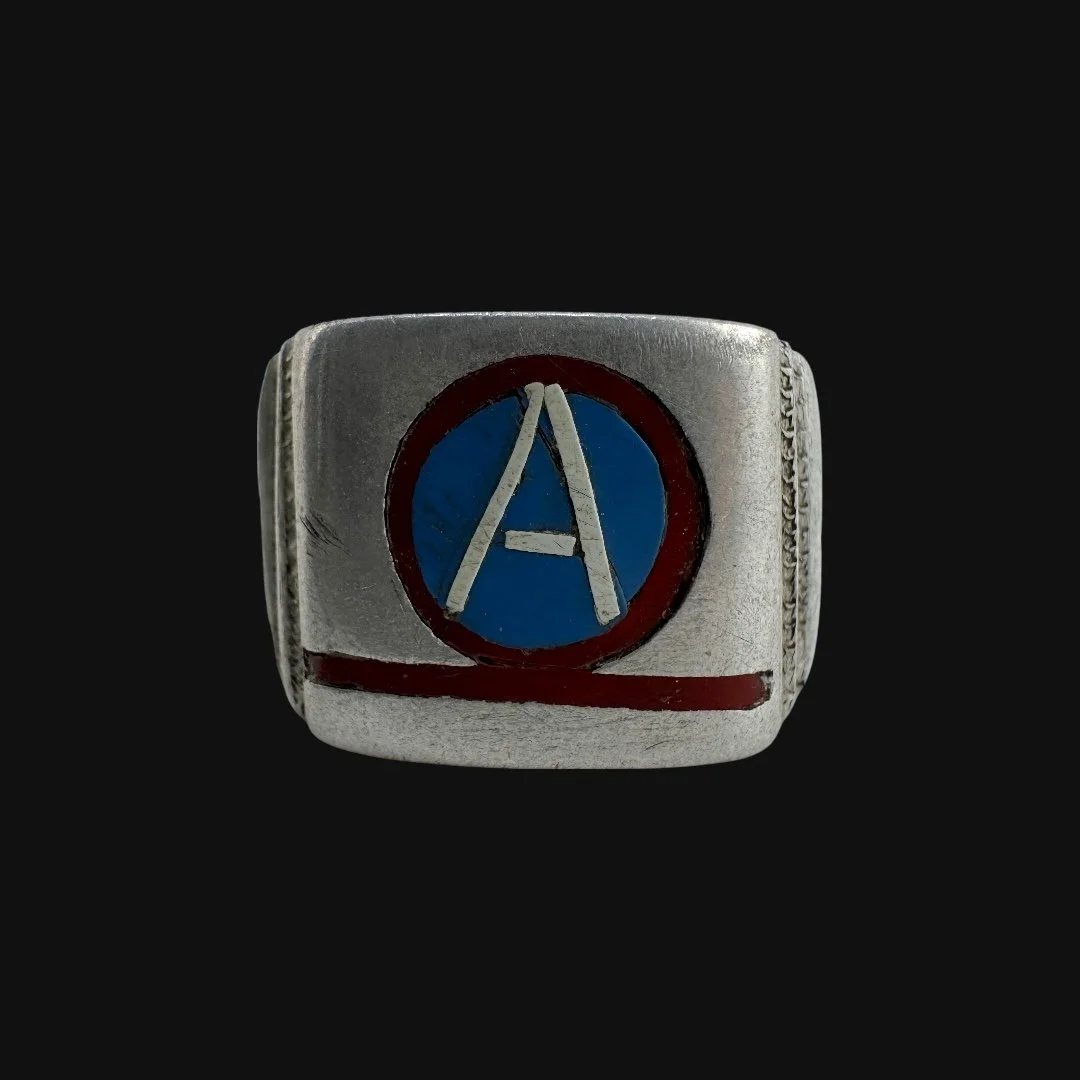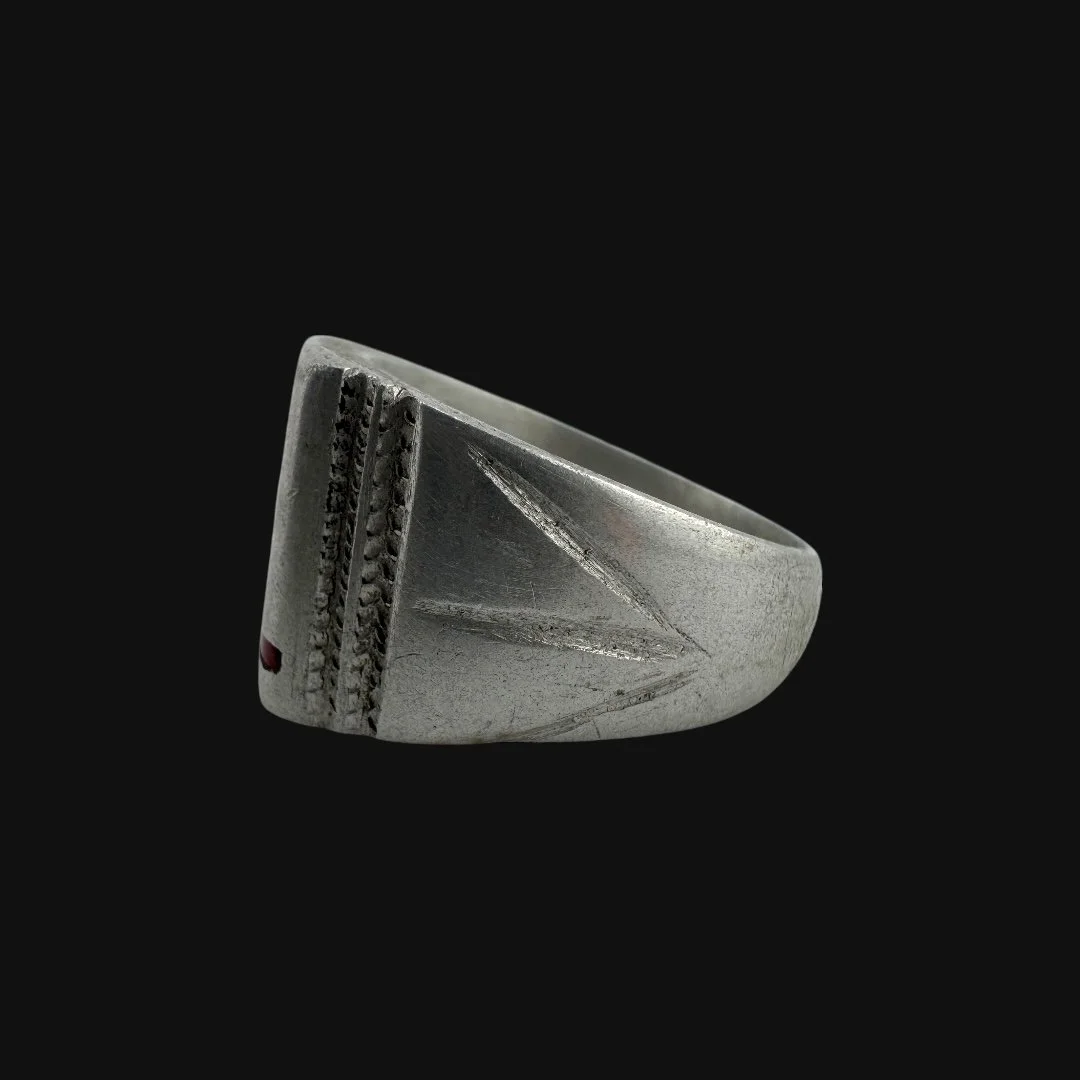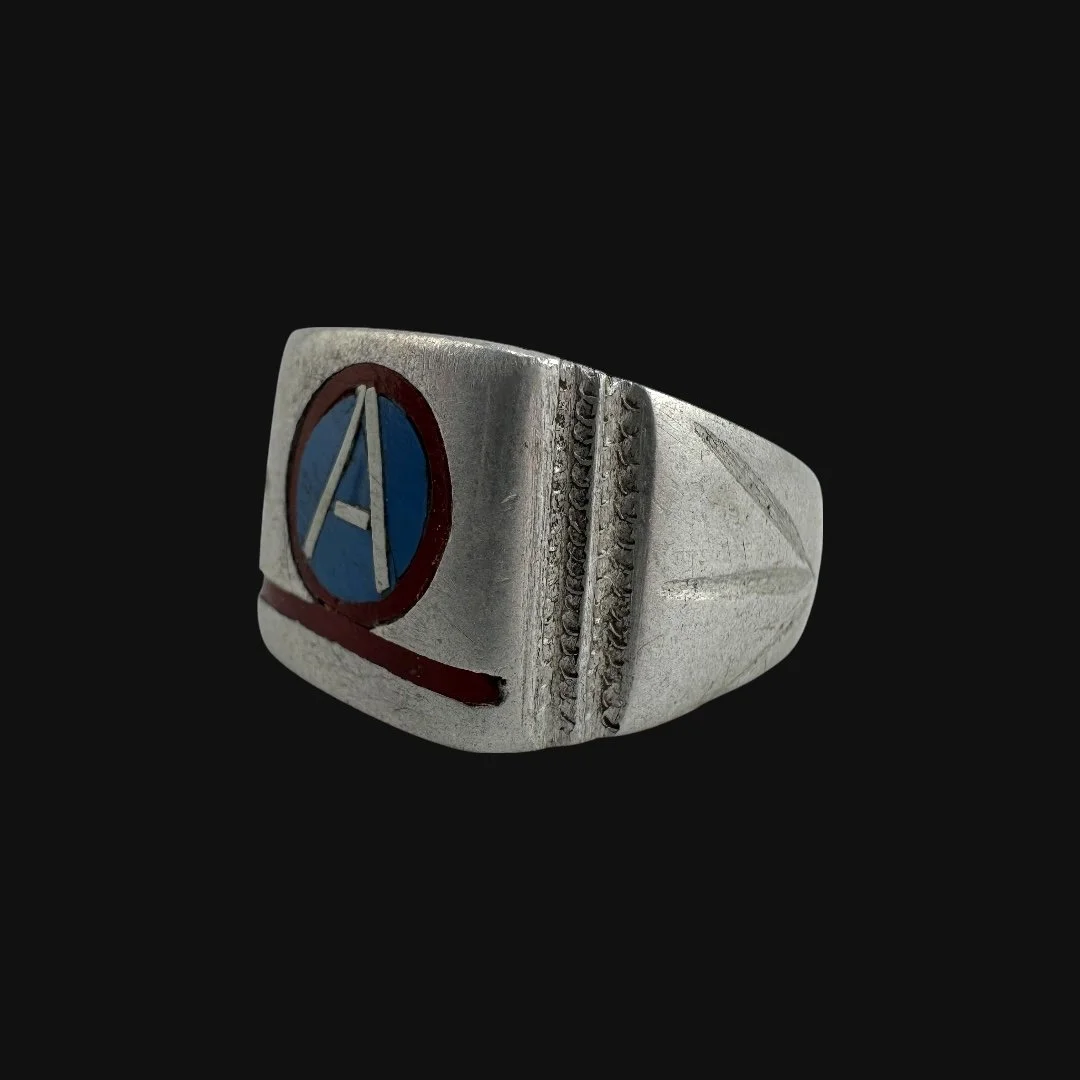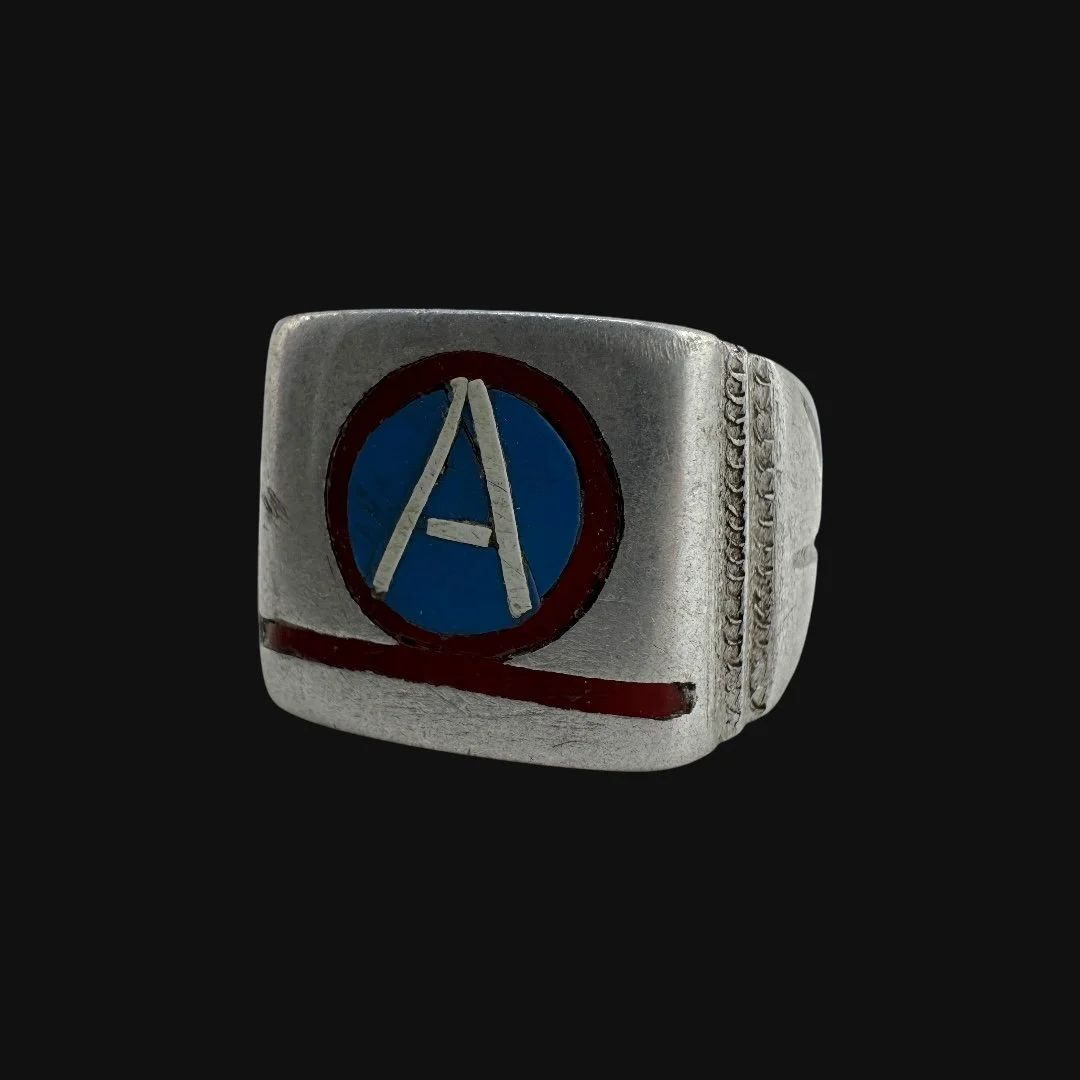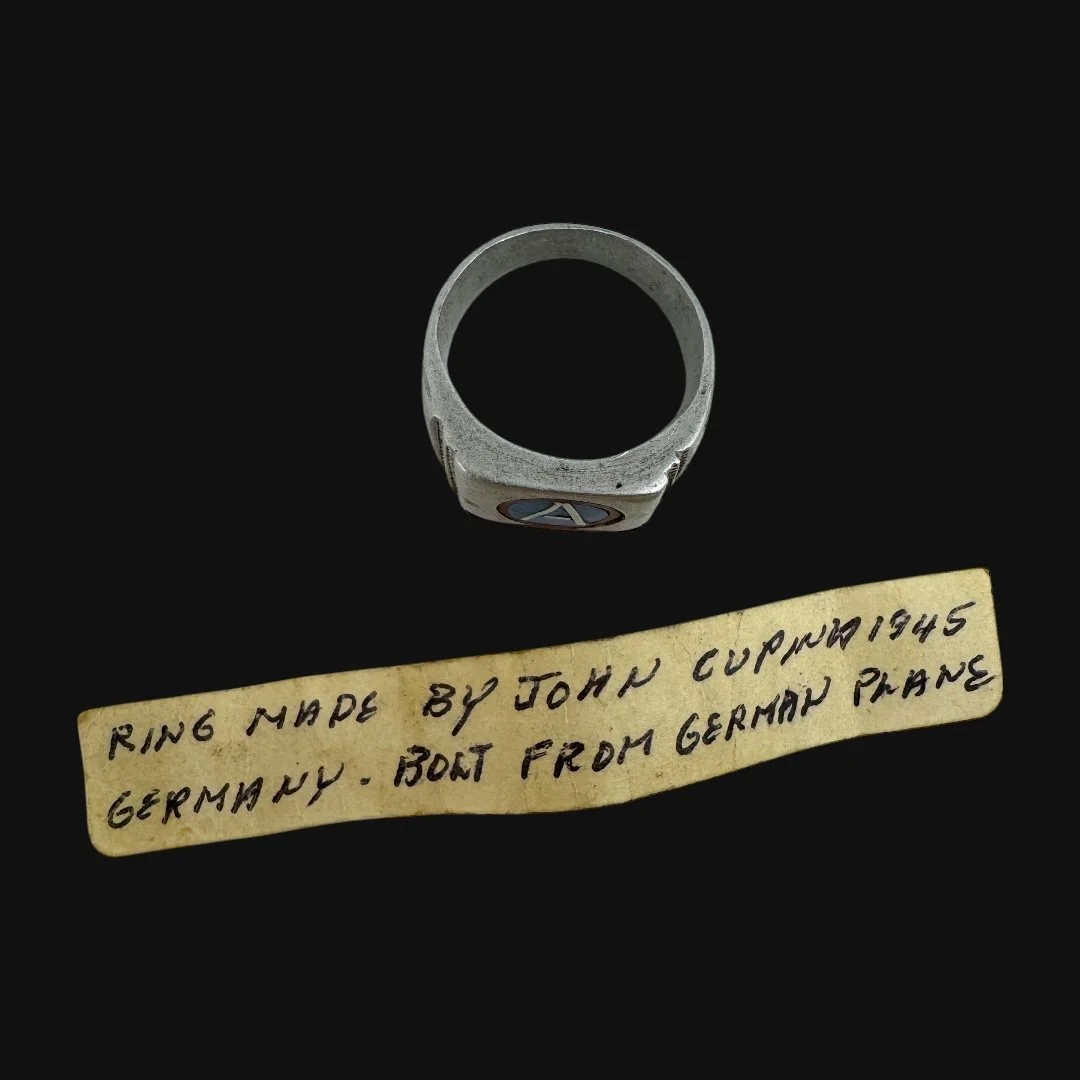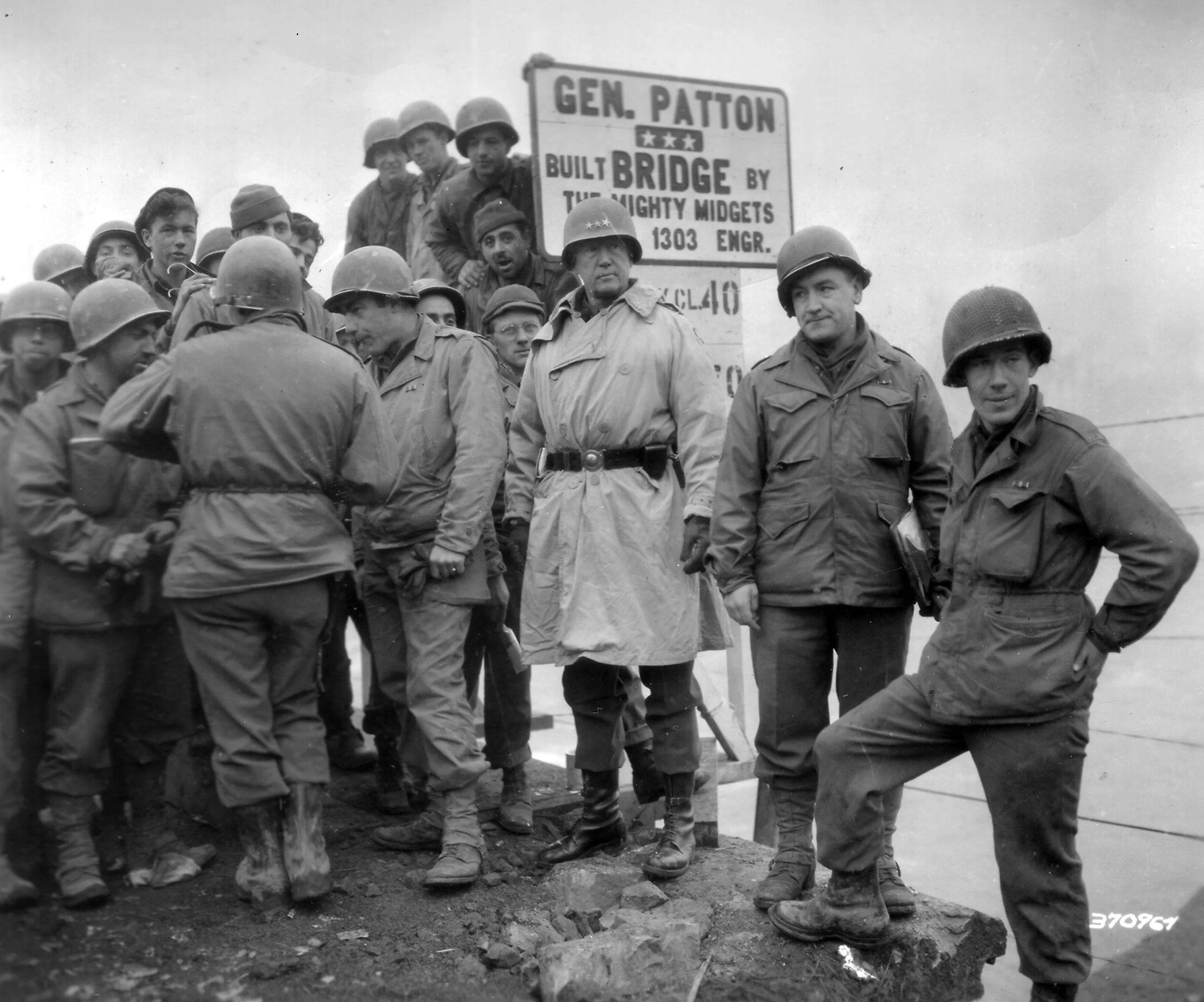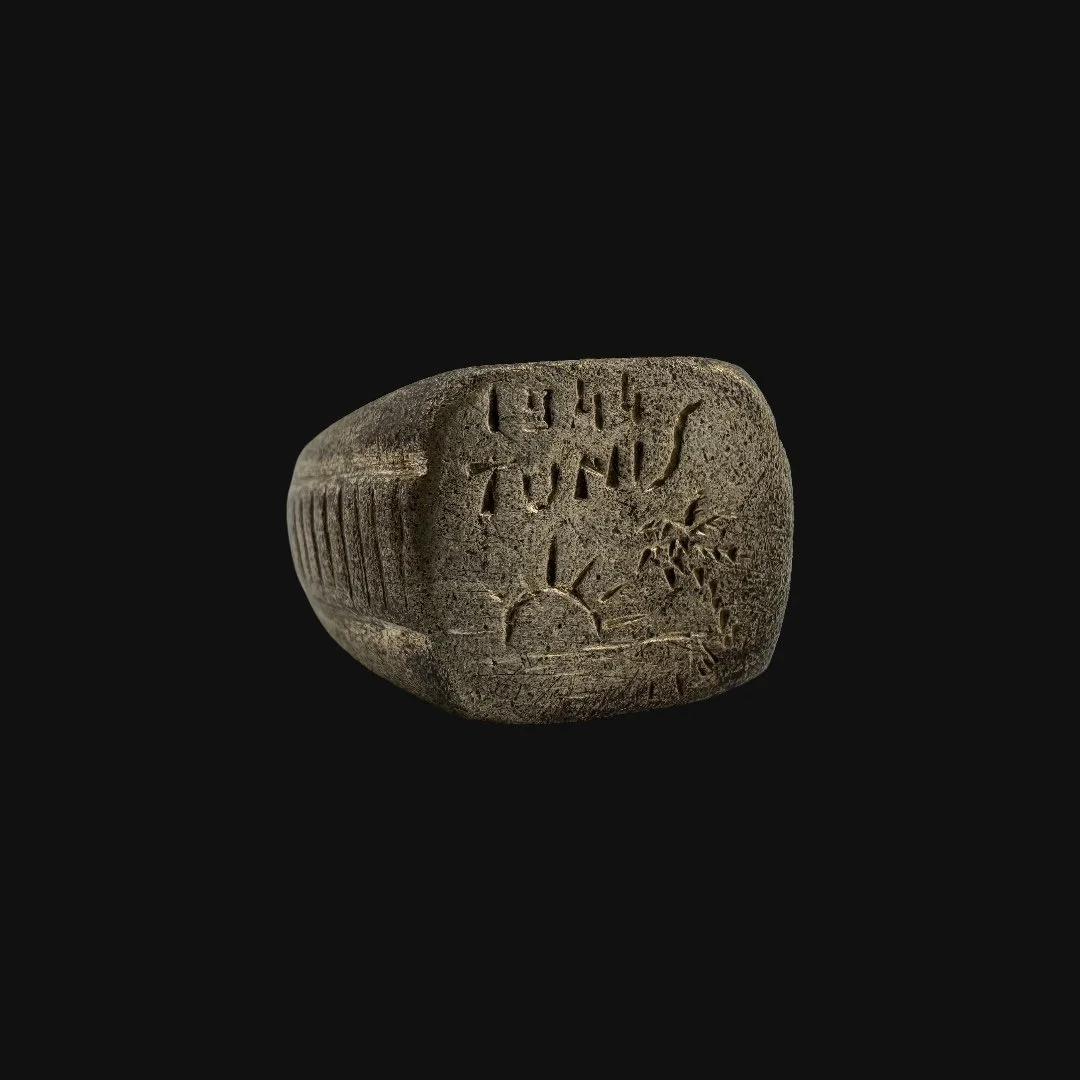 Image 1 of 14
Image 1 of 14

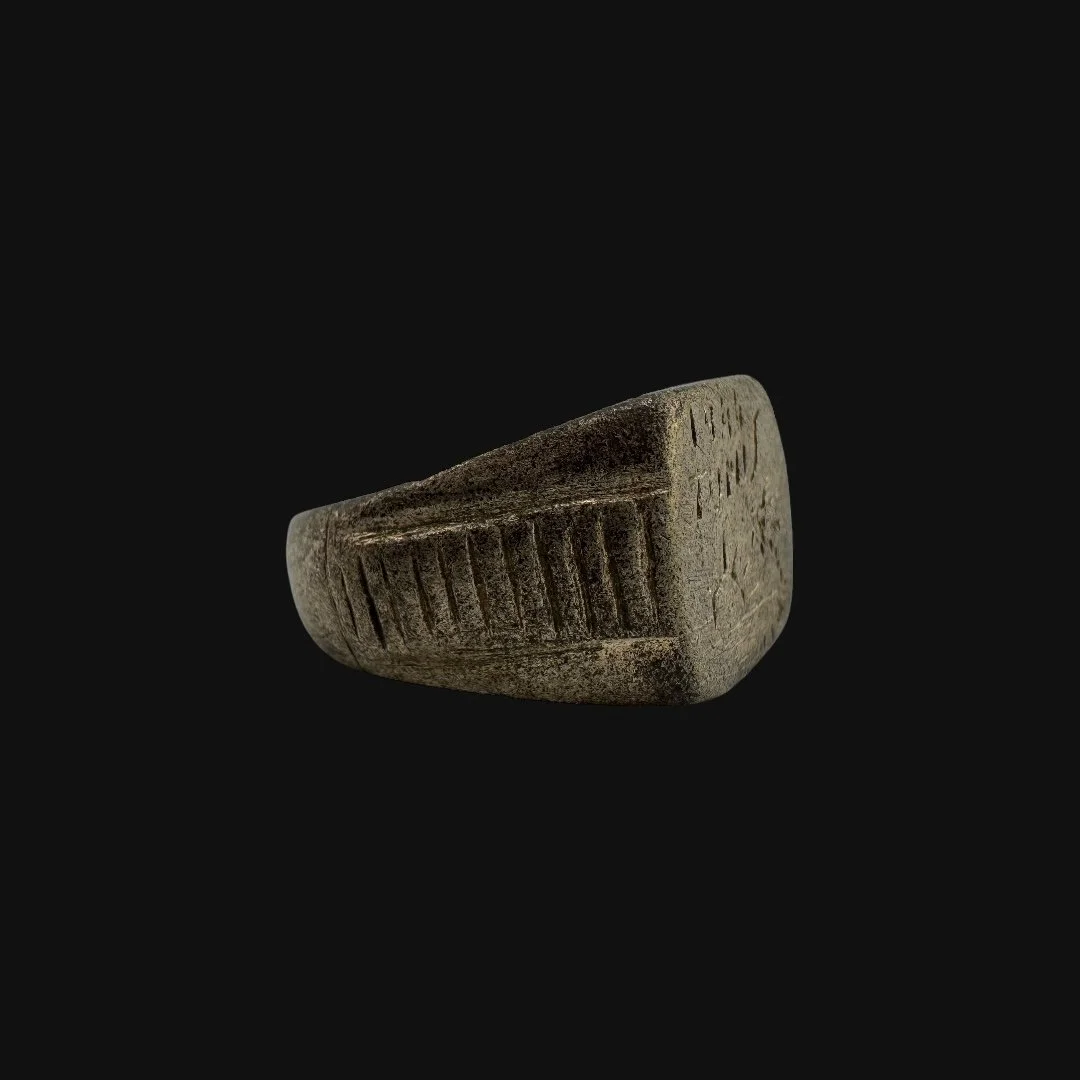 Image 2 of 14
Image 2 of 14

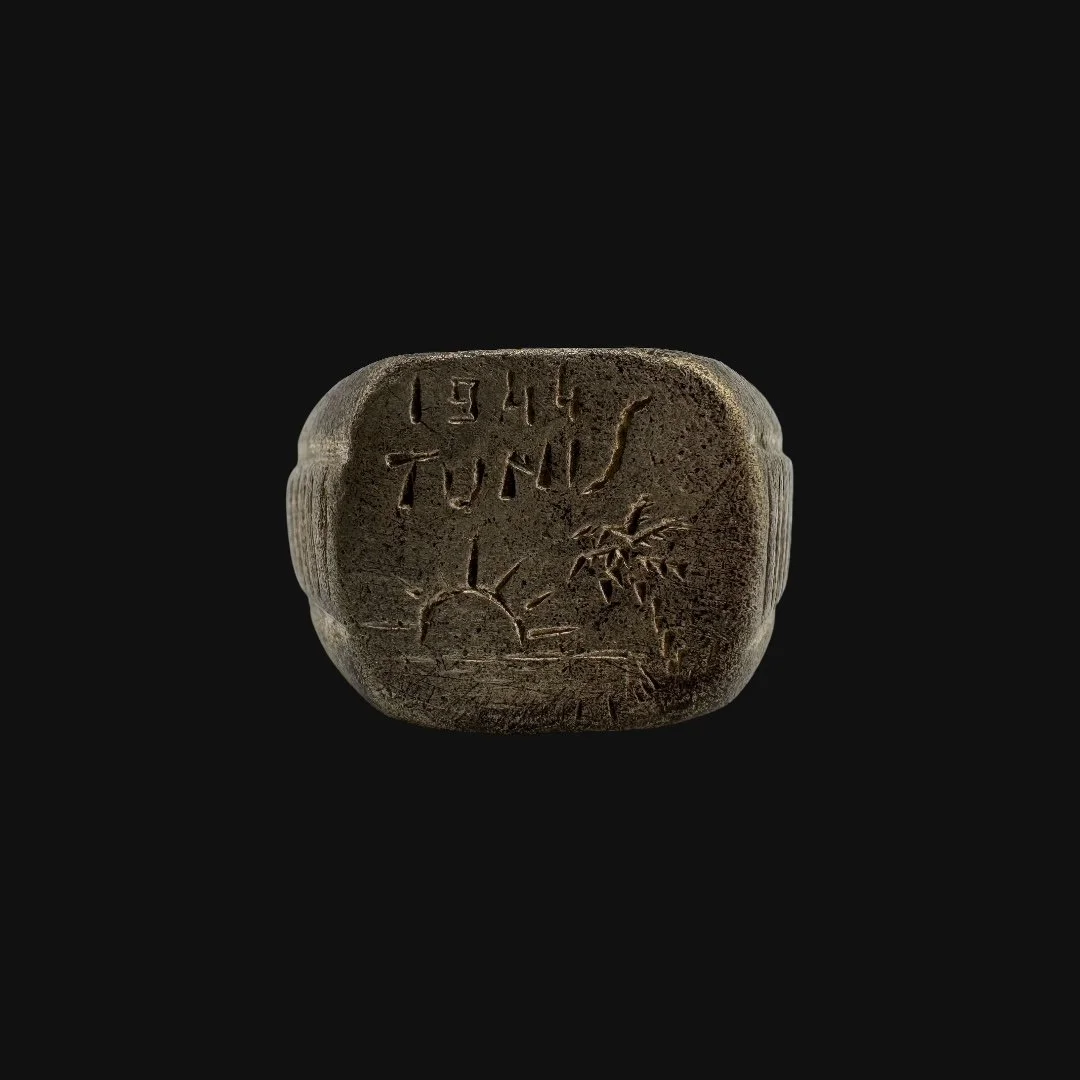 Image 3 of 14
Image 3 of 14

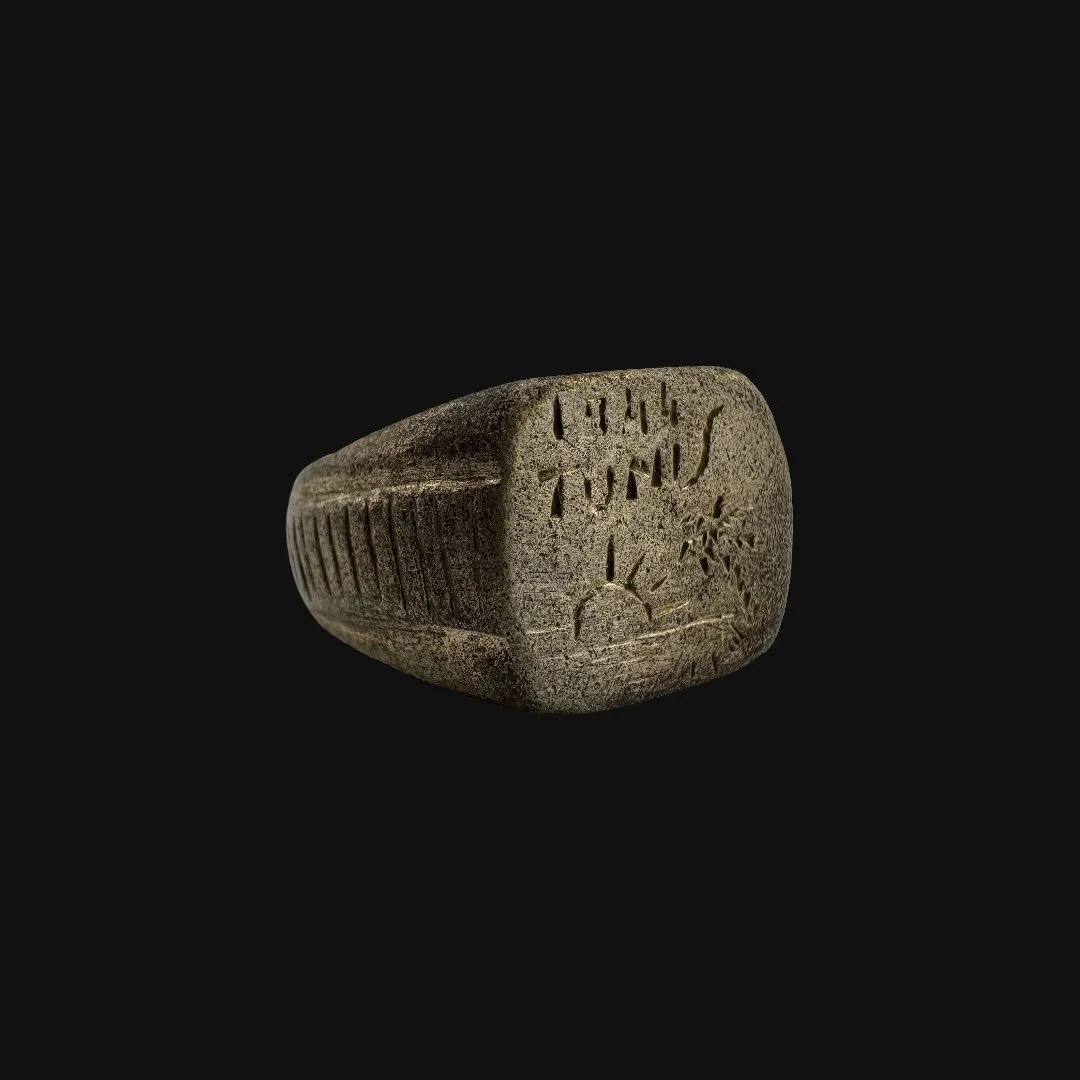 Image 4 of 14
Image 4 of 14

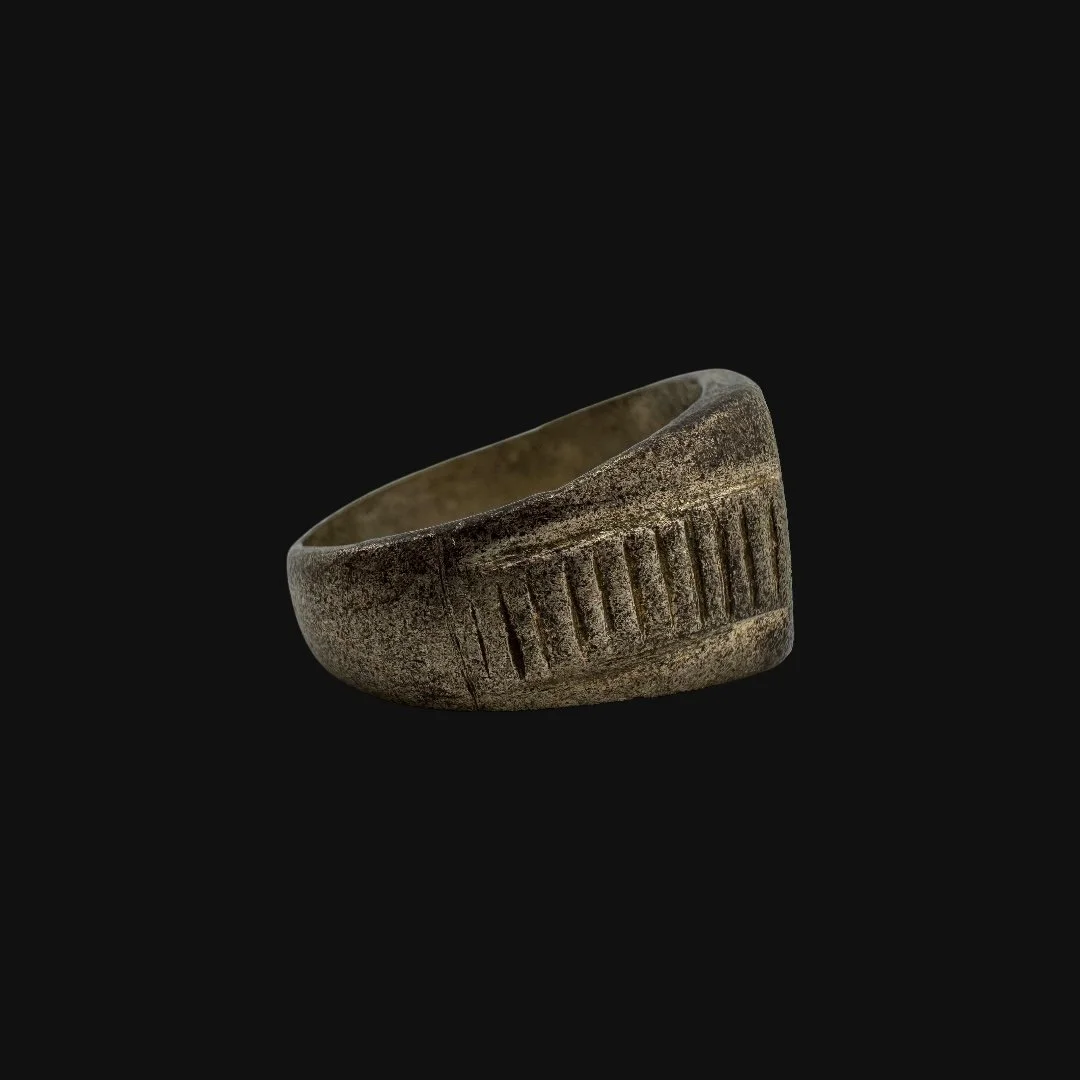 Image 5 of 14
Image 5 of 14

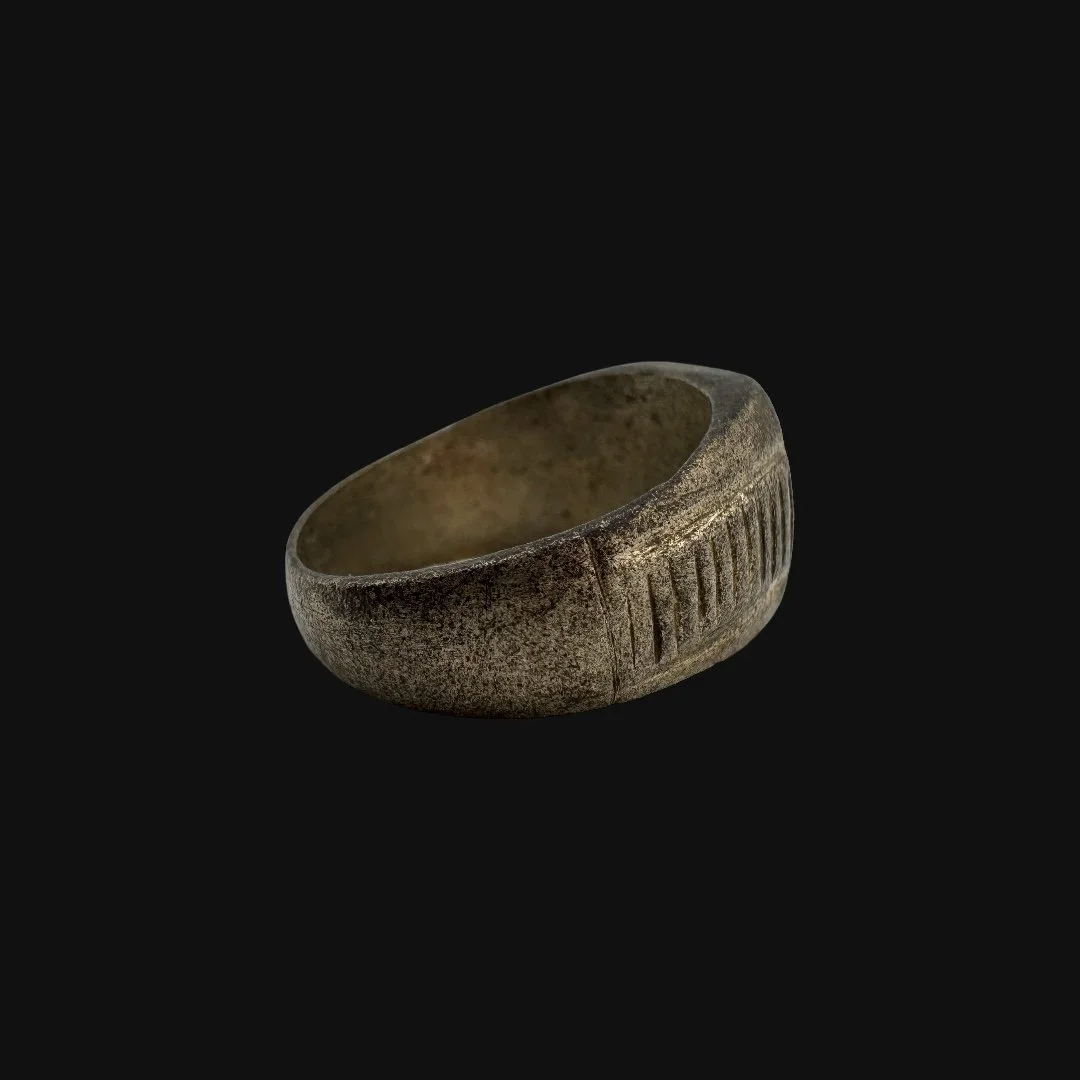 Image 6 of 14
Image 6 of 14

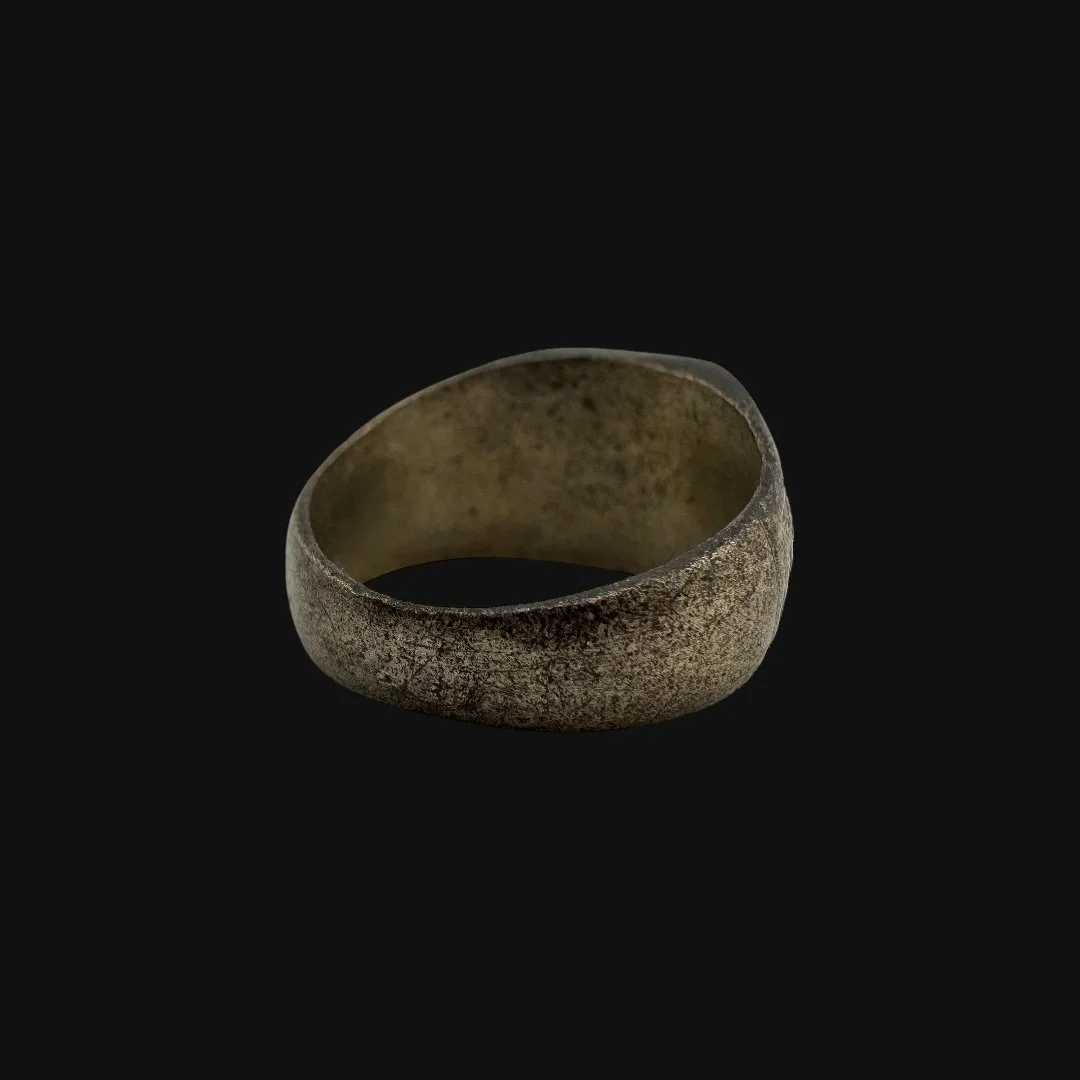 Image 7 of 14
Image 7 of 14

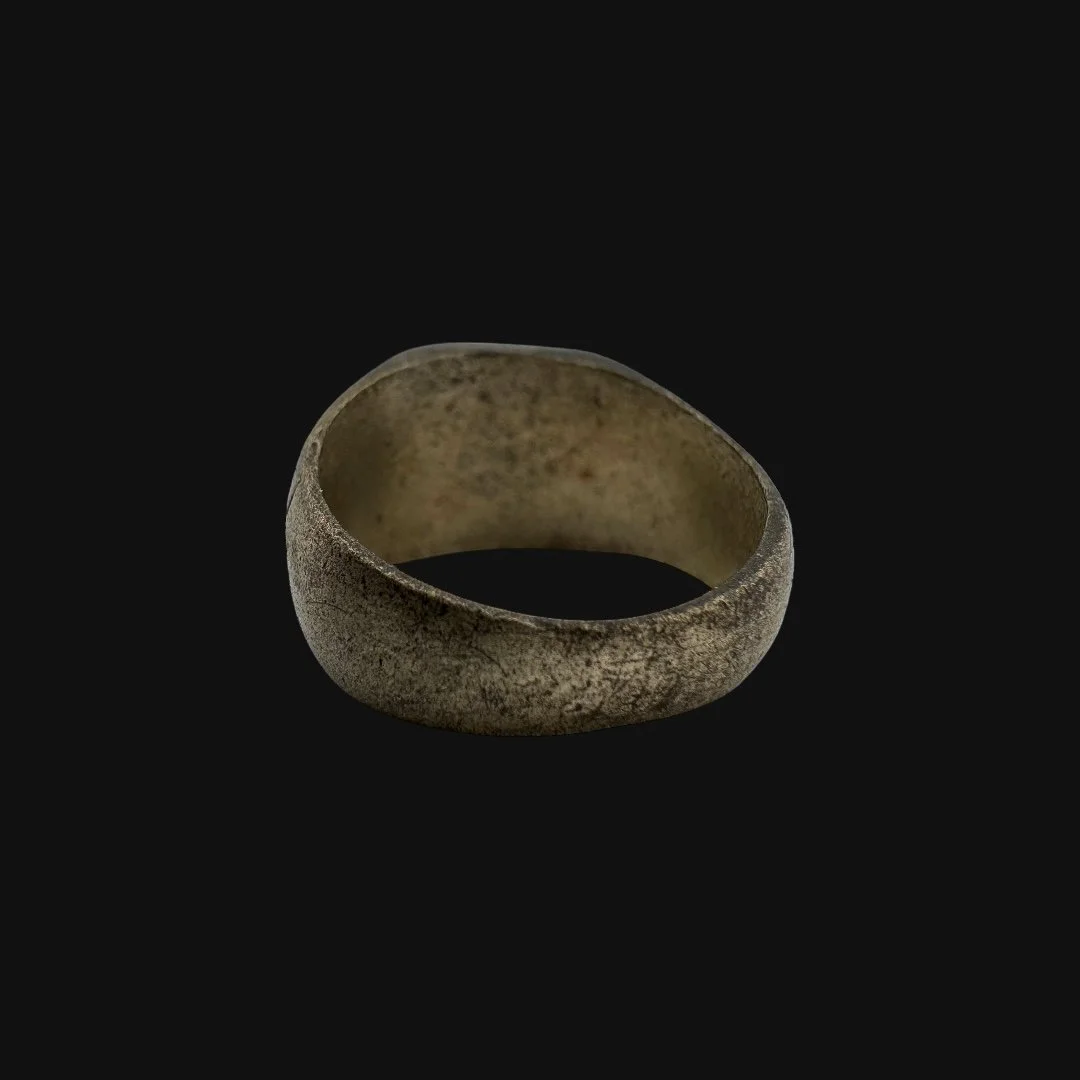 Image 8 of 14
Image 8 of 14

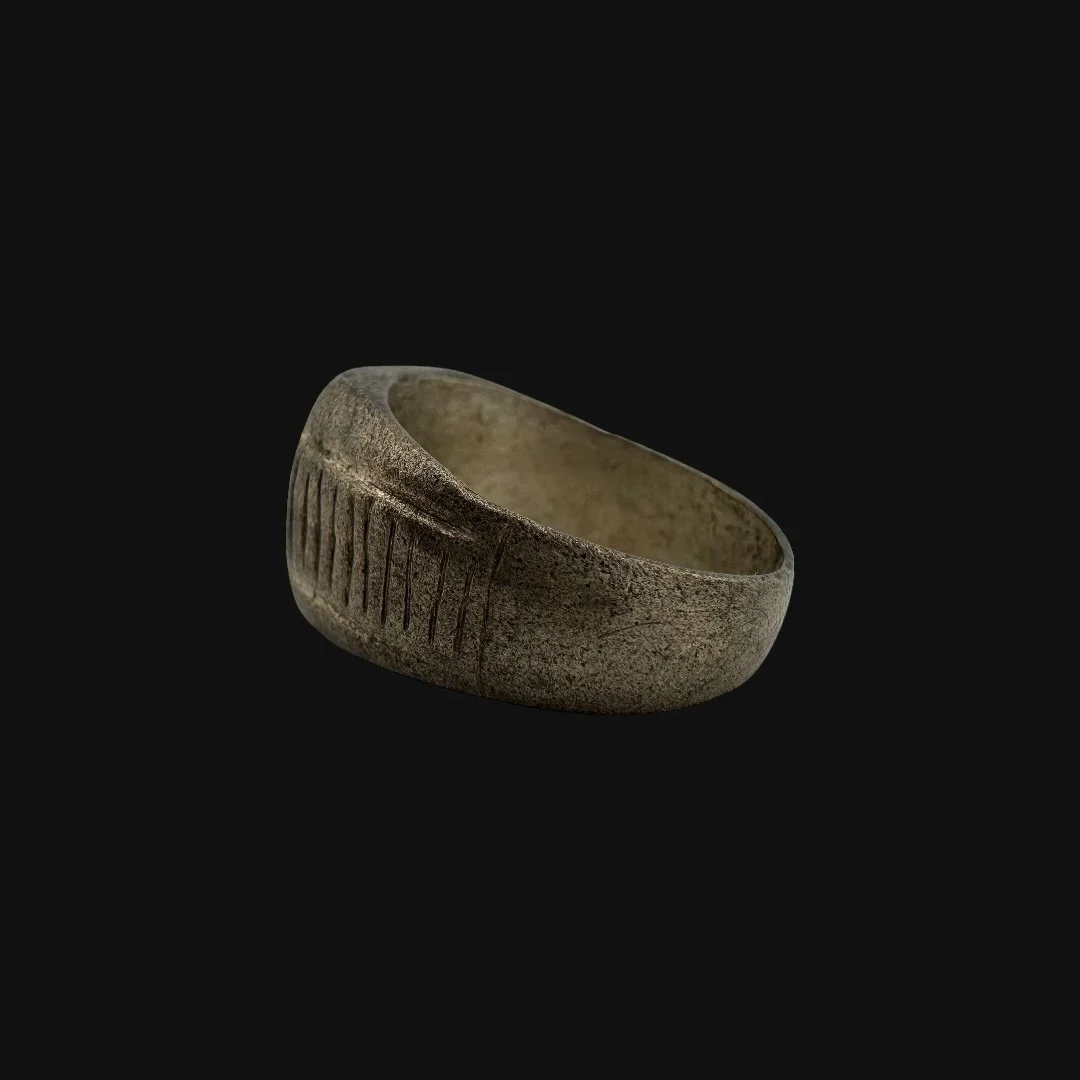 Image 9 of 14
Image 9 of 14

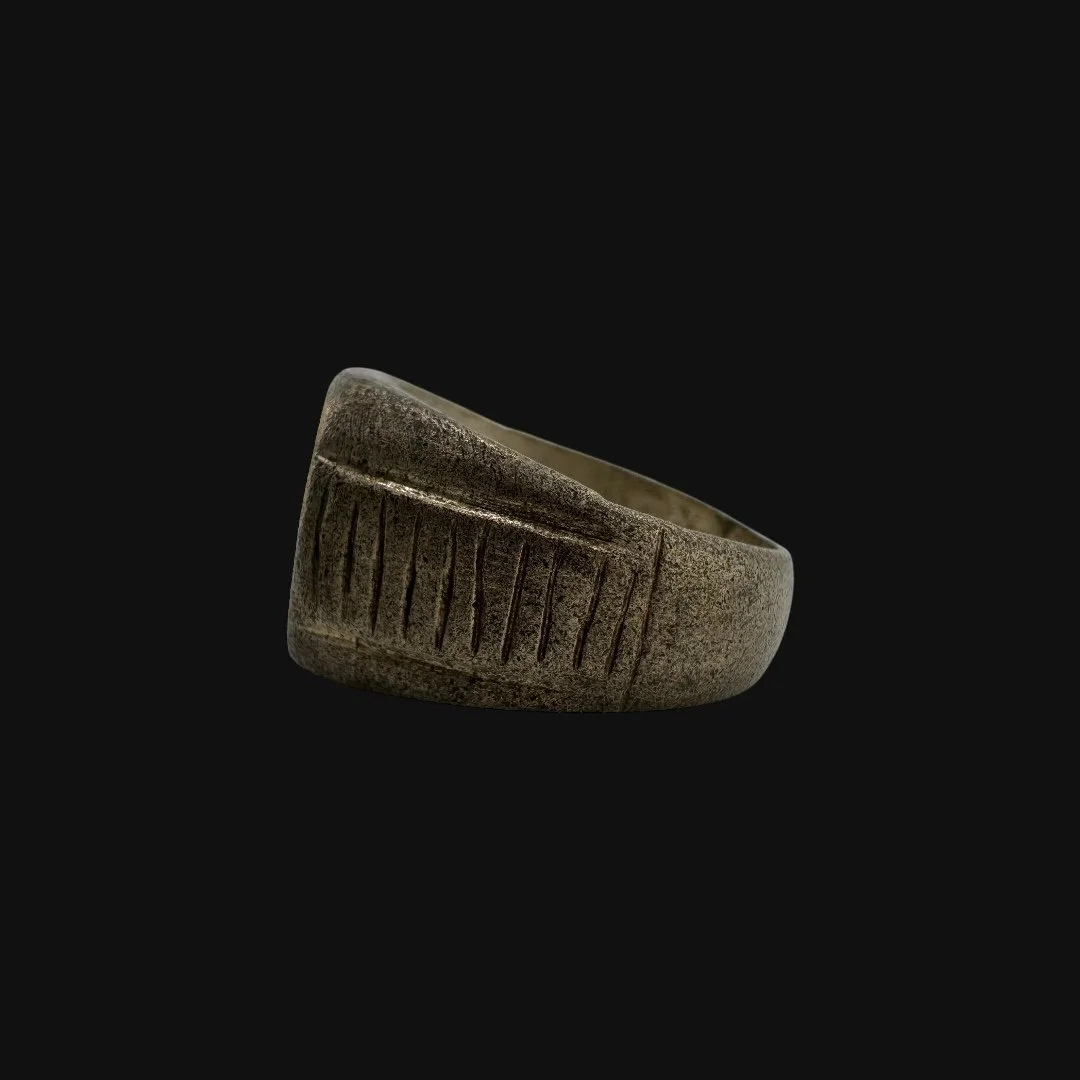 Image 10 of 14
Image 10 of 14

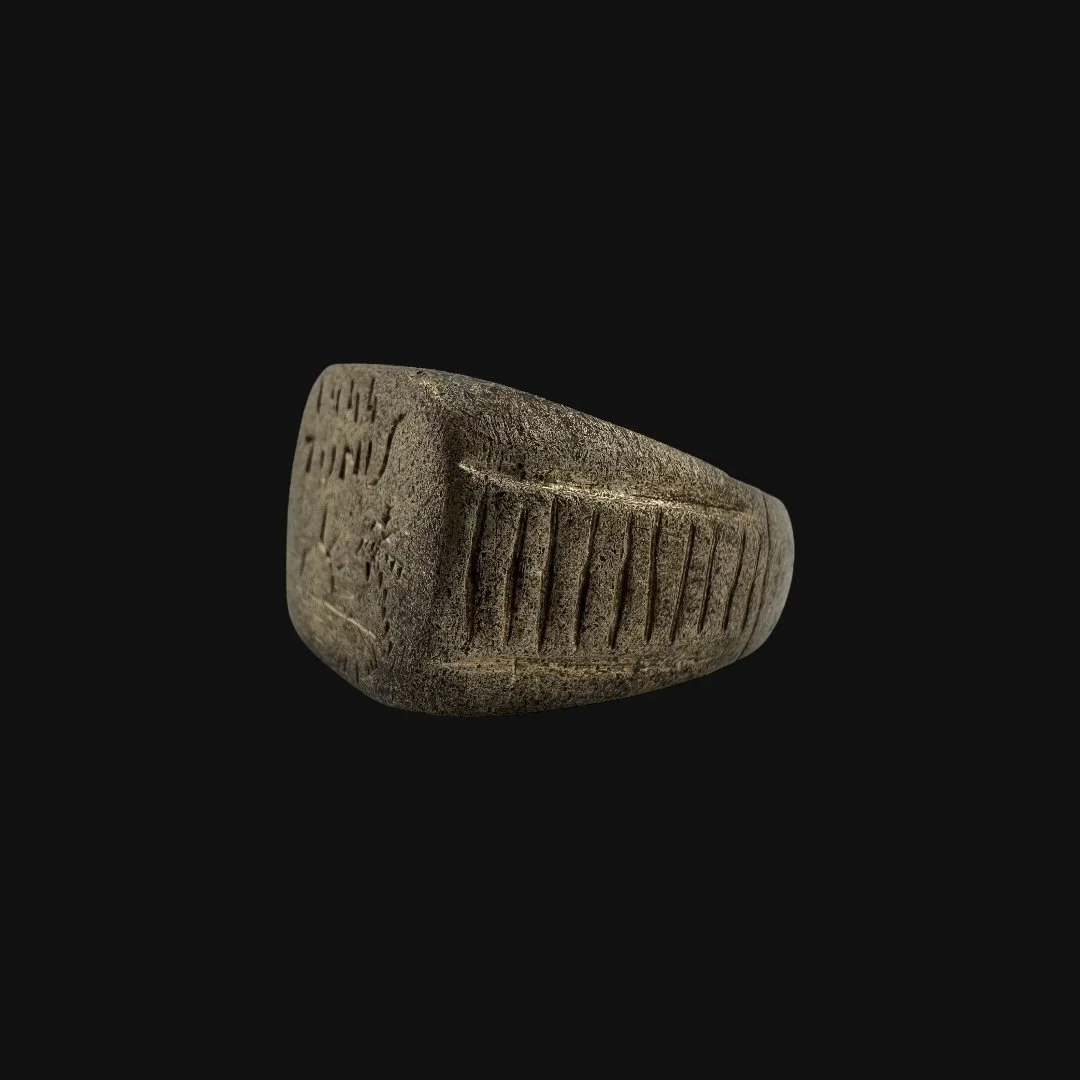 Image 11 of 14
Image 11 of 14

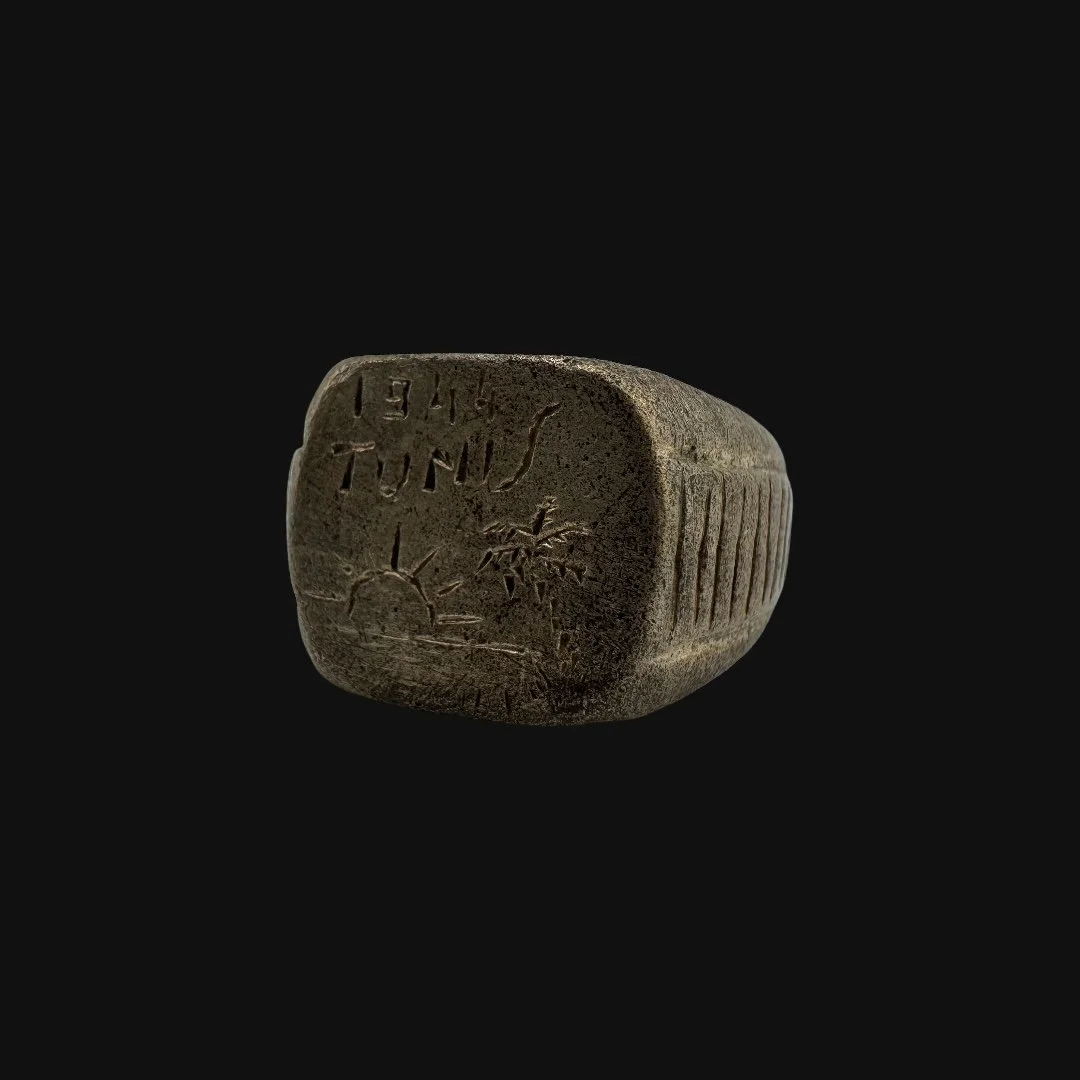 Image 12 of 14
Image 12 of 14

 Image 13 of 14
Image 13 of 14

 Image 14 of 14
Image 14 of 14















Original WWII “Tunis 1944” U.S. Soldier Handmade Combat Theater Ring – Battlefield Wreckage – Mediterranean Theater (Size 10.75)
Comes with a hand-signed C.O.A. and a full historical research write-up
From: World War II
Dated: 1944
Ring Size: 10.75 (US)
Material: Discarded Battlefield Material
Theater: Mediterranean Theater (Allied Invasion of North Africa)
Wearable History Collection:
This authentic 1944 WWII-era ring, preserved in its original and unaltered condition, combines exceptional craftsmanship with lasting durability, making it fully suitable for modern wear today. As part of our exclusive World War II “Wearable History Ring Collection,” it offers the rare opportunity to own and wear a genuine piece of World War II. Both a timeless accessory and a tangible link to the past, this truly one-of-a-kind ring stands as a wearable tribute to the courage and sacrifice of a generation.
Historical Significance of Sicily During WWII:
Tunis was the decisive prize of the North African Campaign, where the final phase of the Allied push against Axis forces culminated. Following the November 1942 Operation Torch landings in Morocco and Algeria and the British Eighth Army’s westward drive from El Alamein, Axis troops retreated into Tunisia. Throughout late 1942 and early 1943, the rugged Tunisian terrain became a battlefield of attrition. Allied offensives, including Operations Pugilist and Vulcan, broke through German and Italian defenses. On May 7, 1943, Tunis fell to the Allies, followed shortly by Bizerte, leading to the surrender of more than 250,000 Axis troops—a defeat on par with Stalingrad and the end of Axis presence in Africa.
In 1944, Tunis shifted from battlefield to strategic hub. Its deep-water ports and modern airfields became essential for the Mediterranean war effort. From here, the Allies staged Operation Dragoon, the August 1944 invasion of Southern France, complementing the Normandy campaign and accelerating the liberation of Europe. The city’s airbases launched bombing and reconnaissance missions into Italy, southern France, and the Balkans, while its ports funneled vast quantities of troops, vehicles, and supplies to the Italian Front.
Tunis also emerged as a critical Allied command and intelligence center. Naval convoys were coordinated from its harbors to secure the Mediterranean, Free French forces were integrated into multinational operations, and reconnaissance units monitored German movements across southern Europe. The city served as both a rest area for front-line troops and a launchpad for fresh offensives. By the end of 1944, Tunis embodied the transformation of a hard-fought victory into a sustained strategic advantage, acting as the Mediterranean’s Allied gateway to final victory in Europe.
The Legacy Within This Ring:
This authentic World War II ring, inscribed “Tunis 1944,” was skillfully handcrafted in theater from discarded battlefield materials during the critical Mediterranean campaigns. Far more than a simple memento, it reflects the ingenuity of Allied soldiers who transformed the remnants of war into personal symbols of service and remembrance. This ring carries the tangible essence of Tunis, a city that by 1944 had become a vital Allied stronghold, its ports and airfields serving as launch points for bombing raids, intelligence missions, and the pivotal Operation Dragoon. Every curve and mark bears witness to the hardships of the North African front, the determination of its maker, and the strategic role Tunis played in driving Axis forces from the Mediterranean. Today, it endures as a preserved fragment of battlefield history. A wearable emblem of survival, resilience, and the triumph that paved the way for liberation in Europe.
Comes with a hand-signed C.O.A. and a full historical research write-up
From: World War II
Dated: 1944
Ring Size: 10.75 (US)
Material: Discarded Battlefield Material
Theater: Mediterranean Theater (Allied Invasion of North Africa)
Wearable History Collection:
This authentic 1944 WWII-era ring, preserved in its original and unaltered condition, combines exceptional craftsmanship with lasting durability, making it fully suitable for modern wear today. As part of our exclusive World War II “Wearable History Ring Collection,” it offers the rare opportunity to own and wear a genuine piece of World War II. Both a timeless accessory and a tangible link to the past, this truly one-of-a-kind ring stands as a wearable tribute to the courage and sacrifice of a generation.
Historical Significance of Sicily During WWII:
Tunis was the decisive prize of the North African Campaign, where the final phase of the Allied push against Axis forces culminated. Following the November 1942 Operation Torch landings in Morocco and Algeria and the British Eighth Army’s westward drive from El Alamein, Axis troops retreated into Tunisia. Throughout late 1942 and early 1943, the rugged Tunisian terrain became a battlefield of attrition. Allied offensives, including Operations Pugilist and Vulcan, broke through German and Italian defenses. On May 7, 1943, Tunis fell to the Allies, followed shortly by Bizerte, leading to the surrender of more than 250,000 Axis troops—a defeat on par with Stalingrad and the end of Axis presence in Africa.
In 1944, Tunis shifted from battlefield to strategic hub. Its deep-water ports and modern airfields became essential for the Mediterranean war effort. From here, the Allies staged Operation Dragoon, the August 1944 invasion of Southern France, complementing the Normandy campaign and accelerating the liberation of Europe. The city’s airbases launched bombing and reconnaissance missions into Italy, southern France, and the Balkans, while its ports funneled vast quantities of troops, vehicles, and supplies to the Italian Front.
Tunis also emerged as a critical Allied command and intelligence center. Naval convoys were coordinated from its harbors to secure the Mediterranean, Free French forces were integrated into multinational operations, and reconnaissance units monitored German movements across southern Europe. The city served as both a rest area for front-line troops and a launchpad for fresh offensives. By the end of 1944, Tunis embodied the transformation of a hard-fought victory into a sustained strategic advantage, acting as the Mediterranean’s Allied gateway to final victory in Europe.
The Legacy Within This Ring:
This authentic World War II ring, inscribed “Tunis 1944,” was skillfully handcrafted in theater from discarded battlefield materials during the critical Mediterranean campaigns. Far more than a simple memento, it reflects the ingenuity of Allied soldiers who transformed the remnants of war into personal symbols of service and remembrance. This ring carries the tangible essence of Tunis, a city that by 1944 had become a vital Allied stronghold, its ports and airfields serving as launch points for bombing raids, intelligence missions, and the pivotal Operation Dragoon. Every curve and mark bears witness to the hardships of the North African front, the determination of its maker, and the strategic role Tunis played in driving Axis forces from the Mediterranean. Today, it endures as a preserved fragment of battlefield history. A wearable emblem of survival, resilience, and the triumph that paved the way for liberation in Europe.
